July #14: Mistakes Were Made

There are many situations where the word “swing” can be used. One of them is for the swinging weather, which is precisely what we experienced here in the Czech Republic this July. We swung from hot and dry conditions of 30+°C to significantly colder and more humid ones. This sudden change is often a major stressor for plants and creates excellent conditions for fungal infections and other nasty stuff.
It’s also the month of harvest, the decisive month for the rest of the season, because it’s basically in the middle and also an indicator of the season as a whole. And an indicator indeed it is. Because I fucked up. Big time.
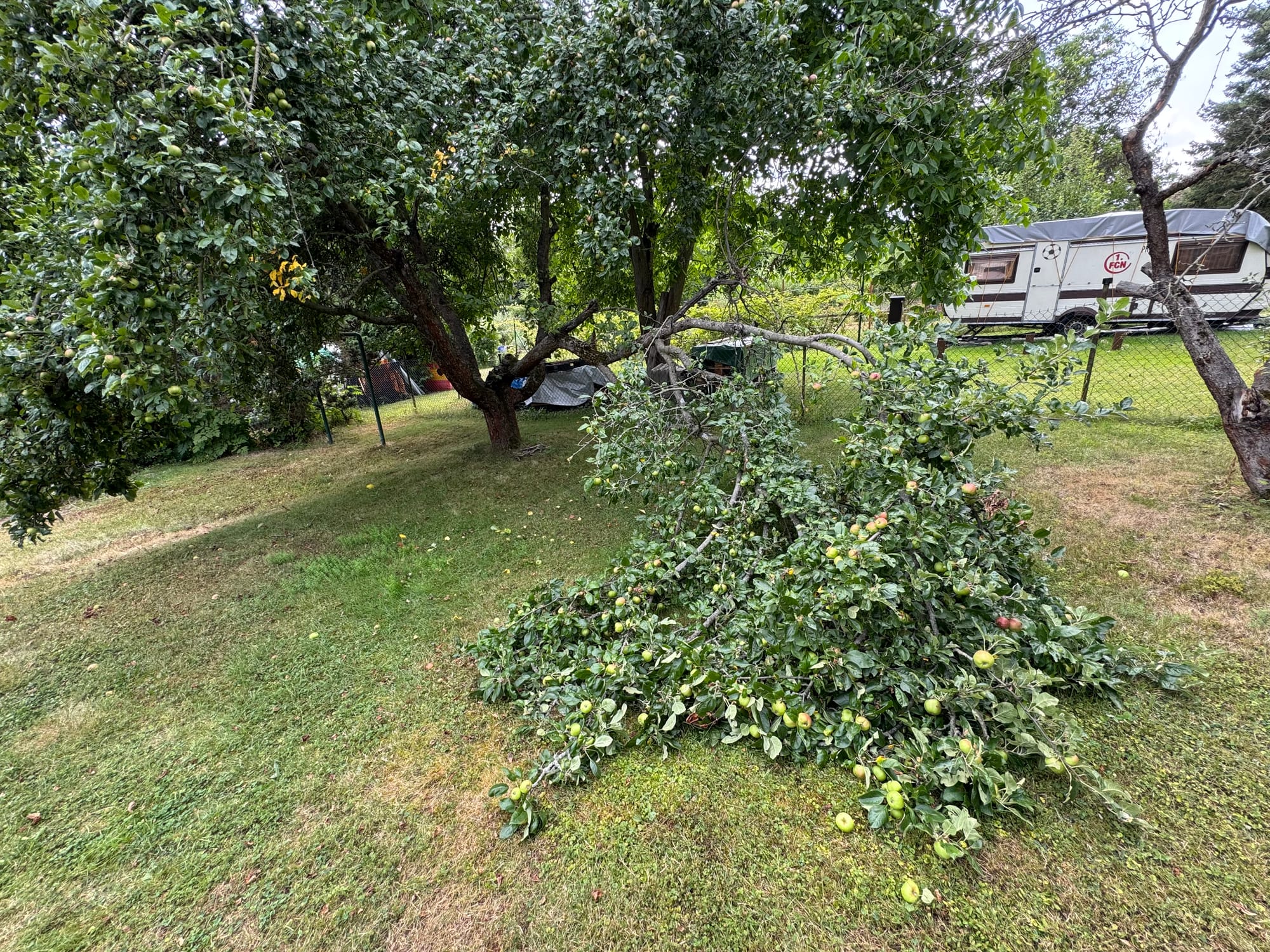
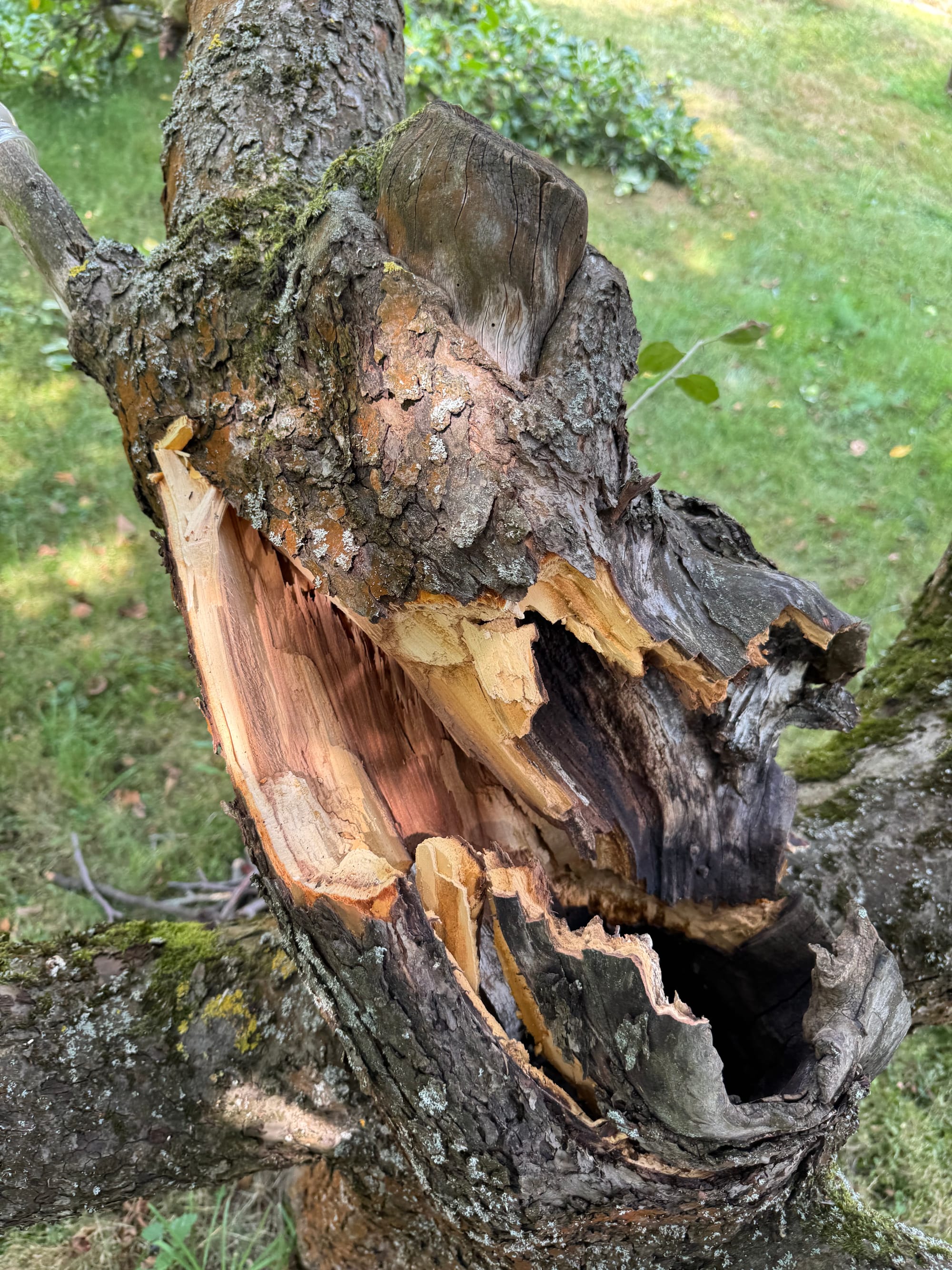
An apple tree branch just collapsed.
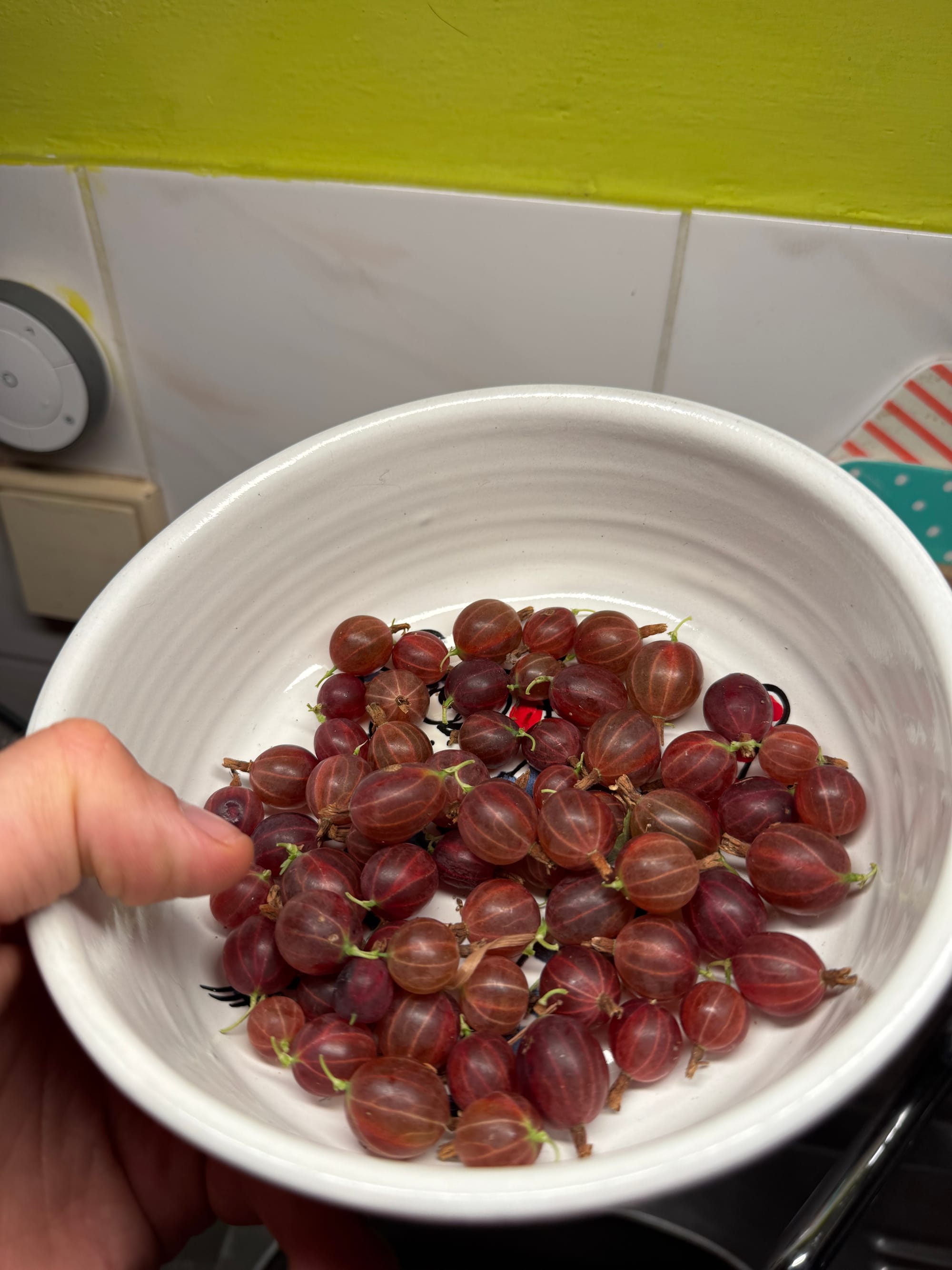
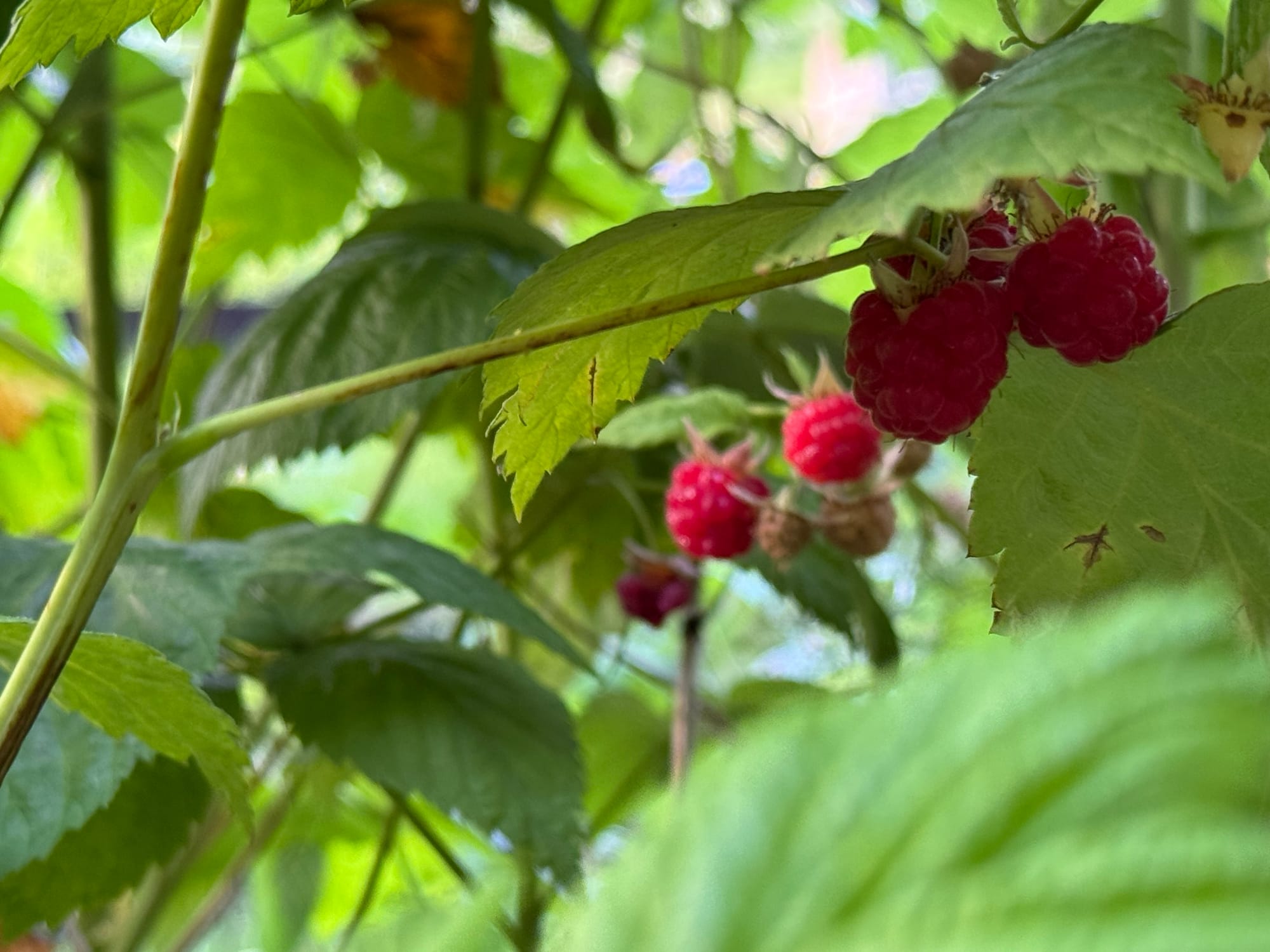
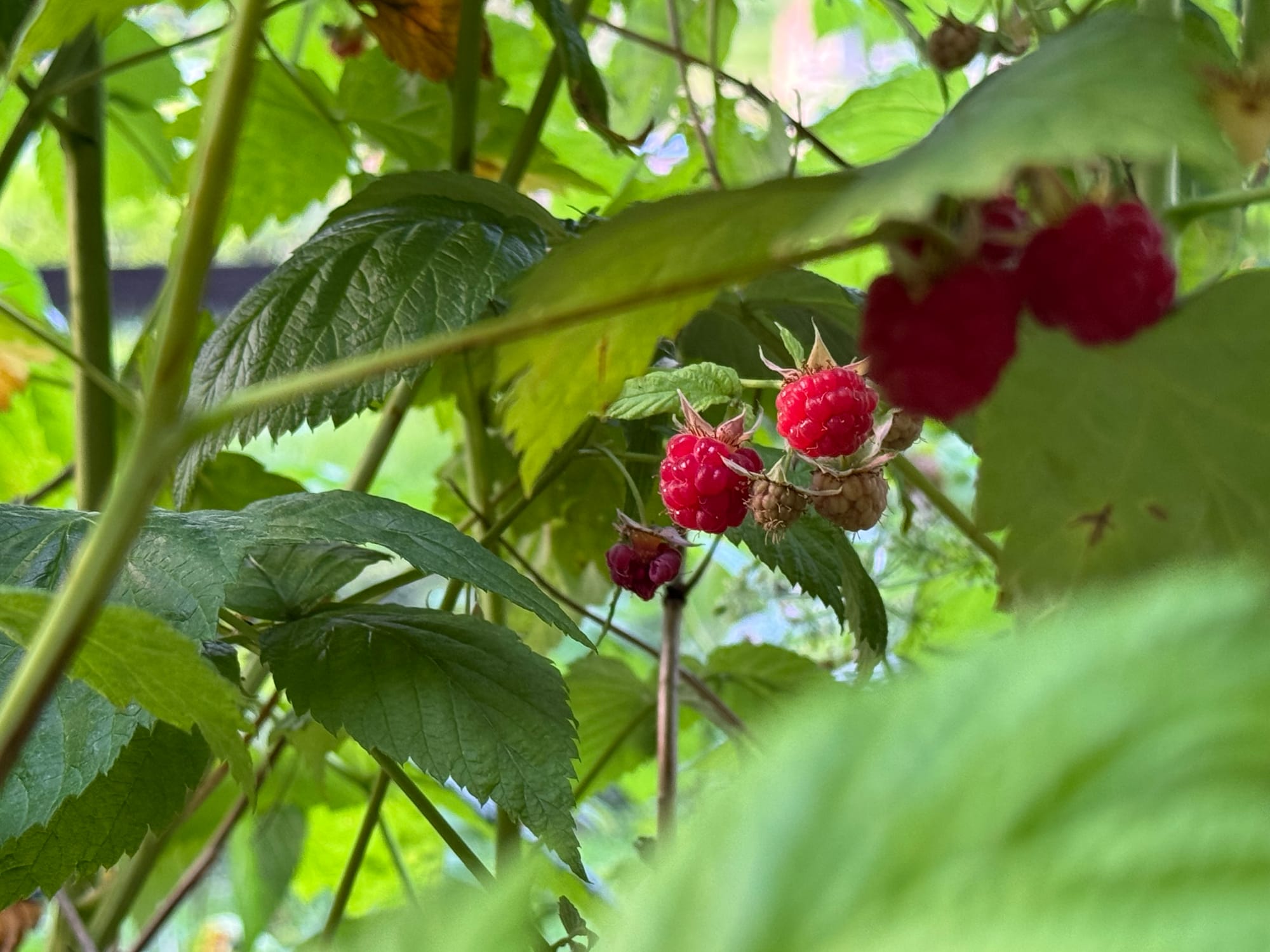
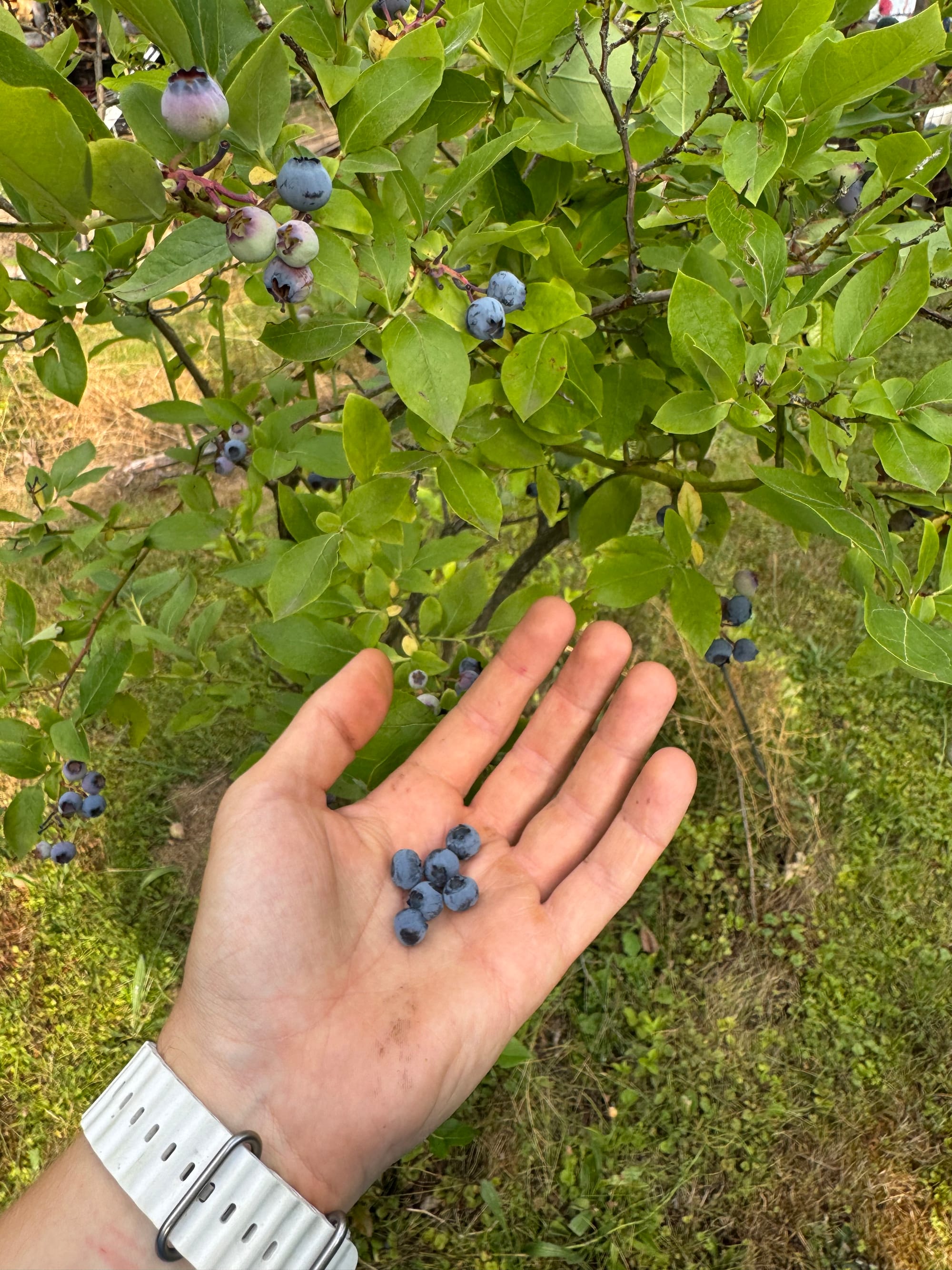
Finally. Berries.
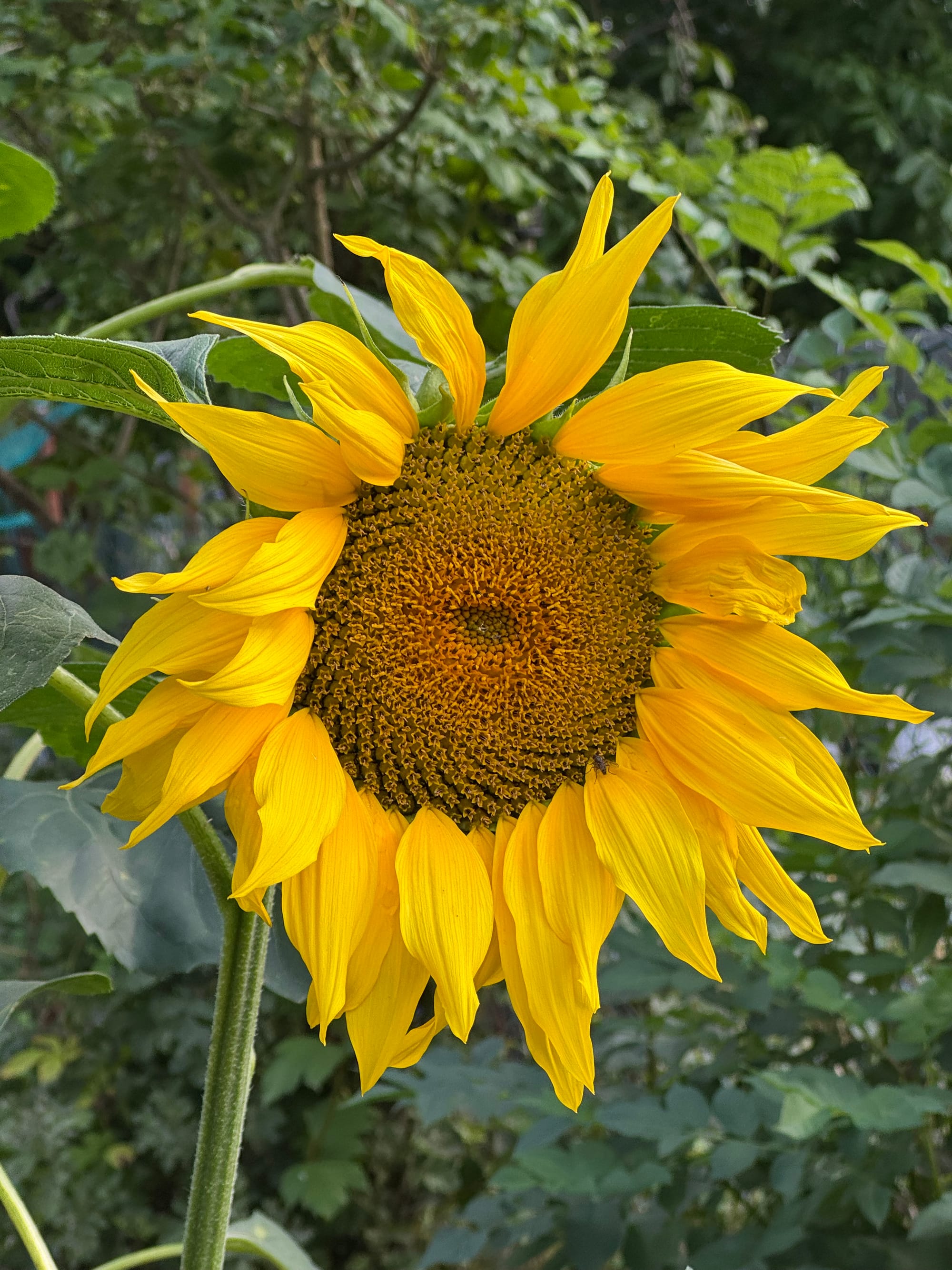
I have a confession I need to get off my chest. When it comes to nutrients and feeding my plants, I am pretty familiar with the holy trinity of NPK balance, also known as the primary macronutrients. I am also well aware of the existence of secondary macronutrients, magnesium and calcium, as well as various micronutrients. Because of my hydroponic endeavors, I am aware of the importance of pH balance and the pitfalls of nutrient lockouts when mixed incorrectly. And yet I fucked up because when it comes to the actual chemistry, I hit the wall. Due to this lack of knowledge, I incorrectly assumed spider mites were the reason my peppers and cucumbers were turning yellow, when in fact the mites were only a symptom of magnesium deficiency.
Total incompetence on my side. I should have paid more attention to the food I give to my plants, or in this case, I don’t give. Does that mean I will stop doing this stuff? The fuck nope. I use well‑directed rage and hate to improve and fix stuff pretty often.
Now that the beans are spilled and insecurities are off my chest, let’s move on to the update.
the brotato broadcast
I could not have chosen better varieties of tomatoes this year. I specifically picked fungus‑resistant types, and it was a good call. My neighbors are waging war on blight and potato rot, barely holding up and counting losses. I am counting kilos of tomatoes to harvest. Especially the hydroponic ones are making me very happy this year. The spa treatment I gave them initially is paying off.
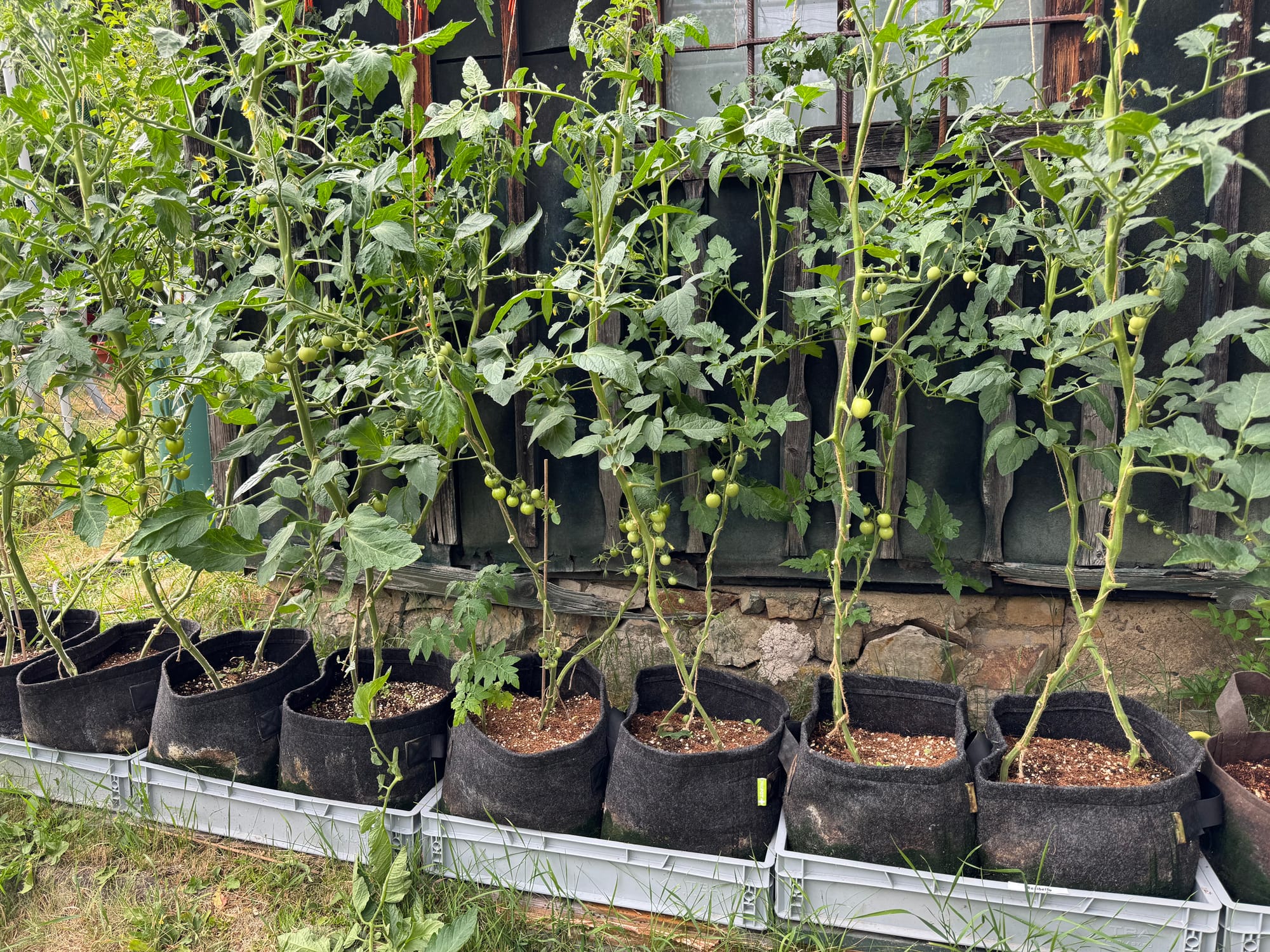
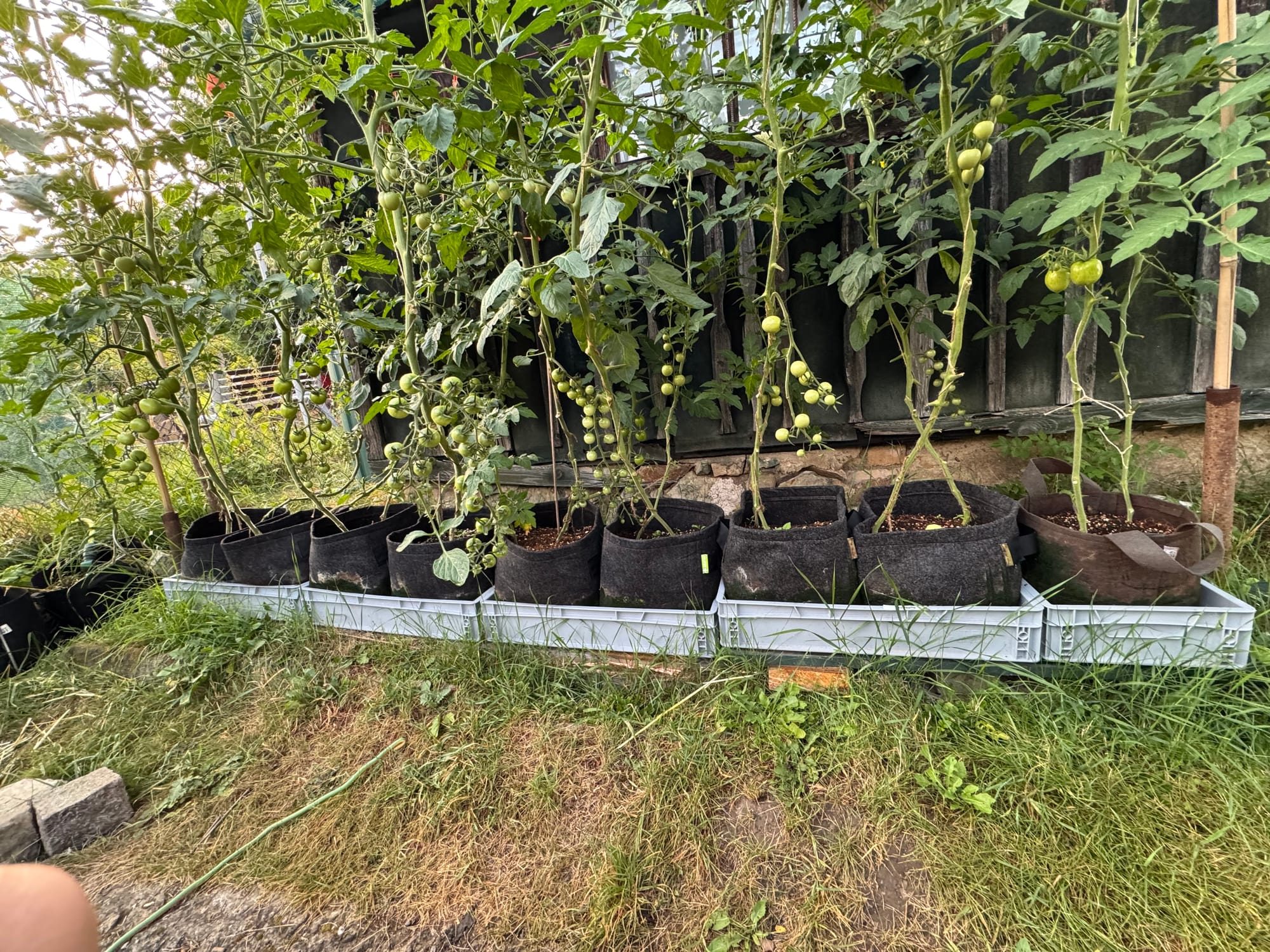
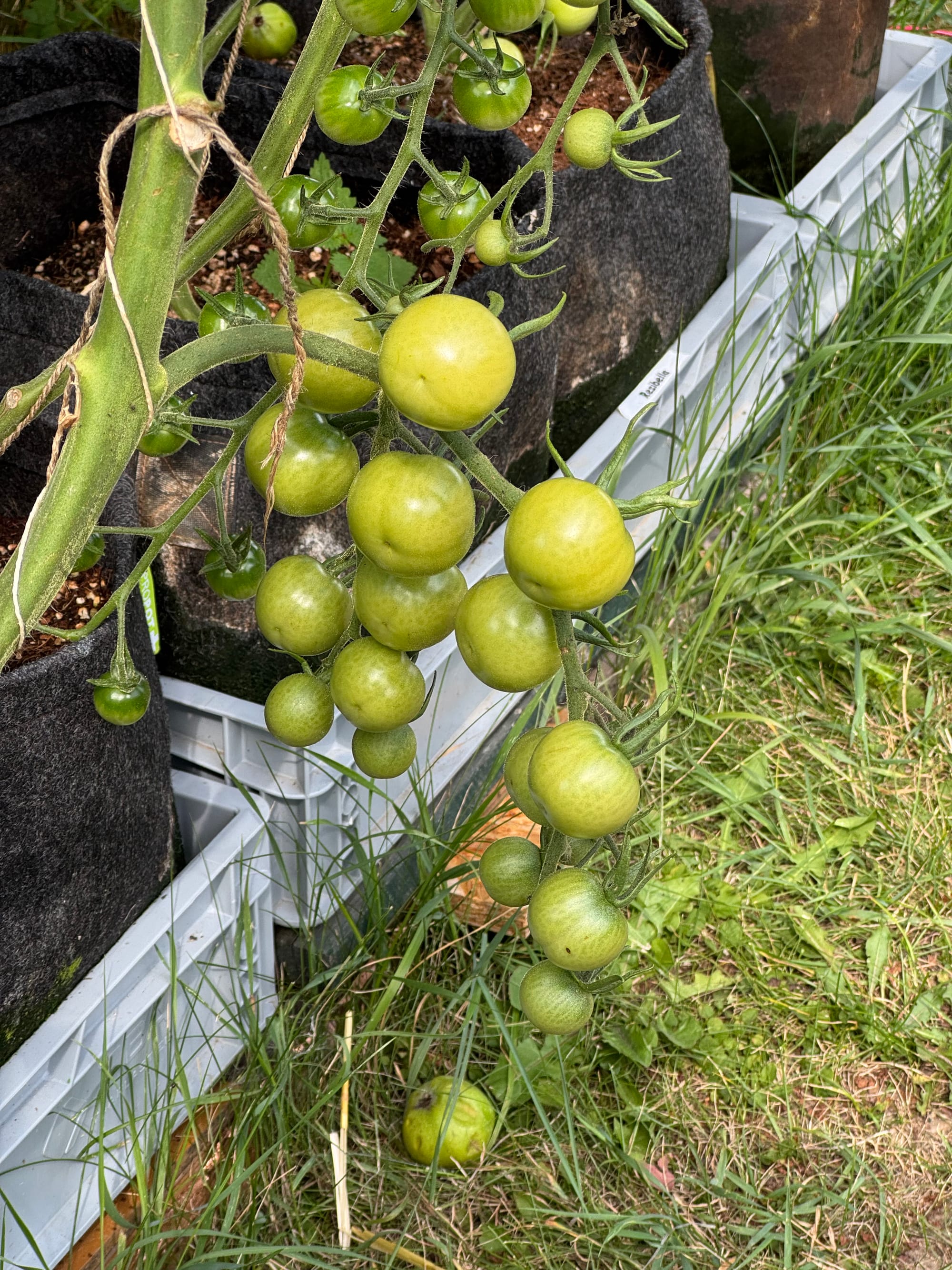
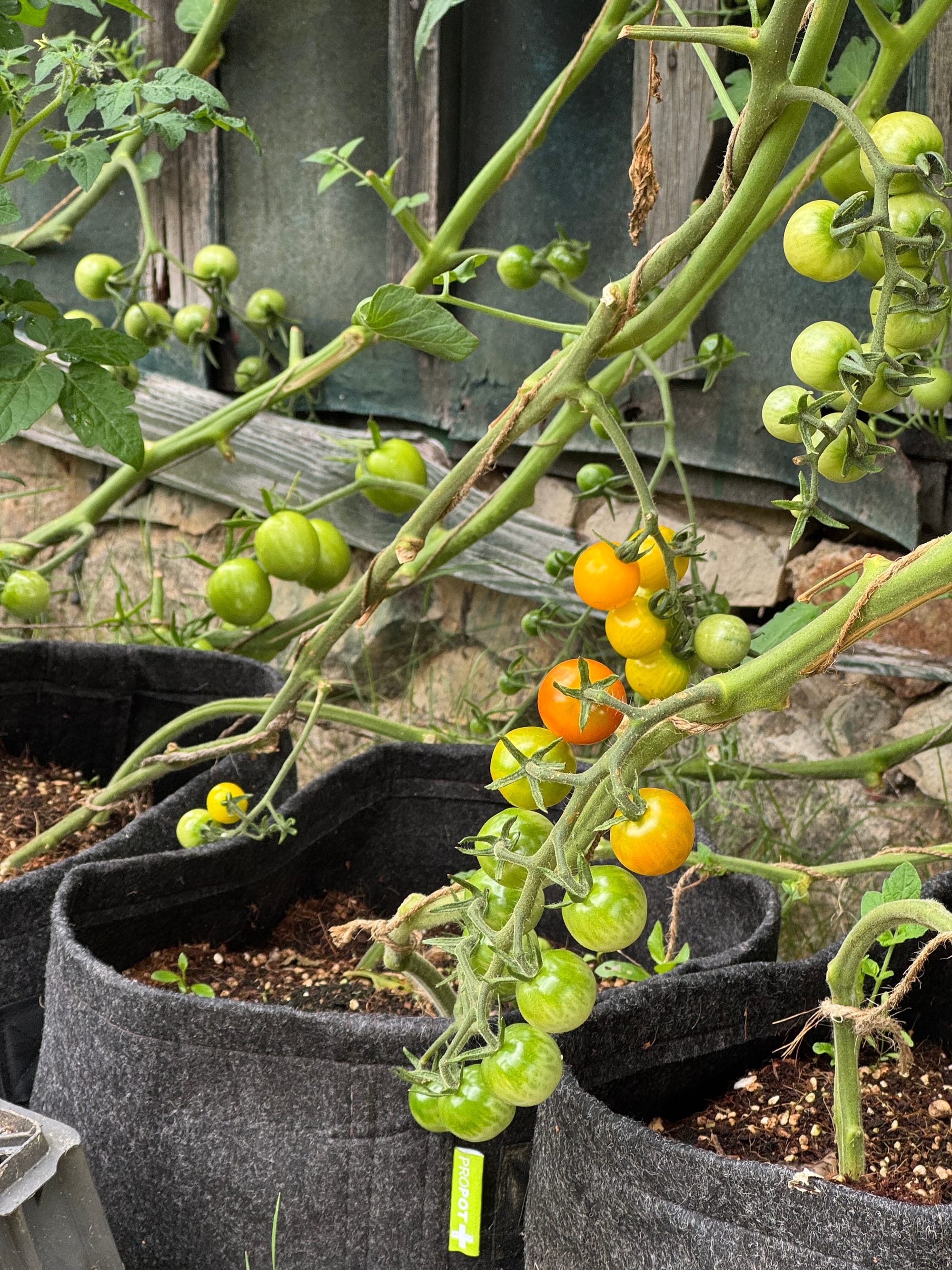
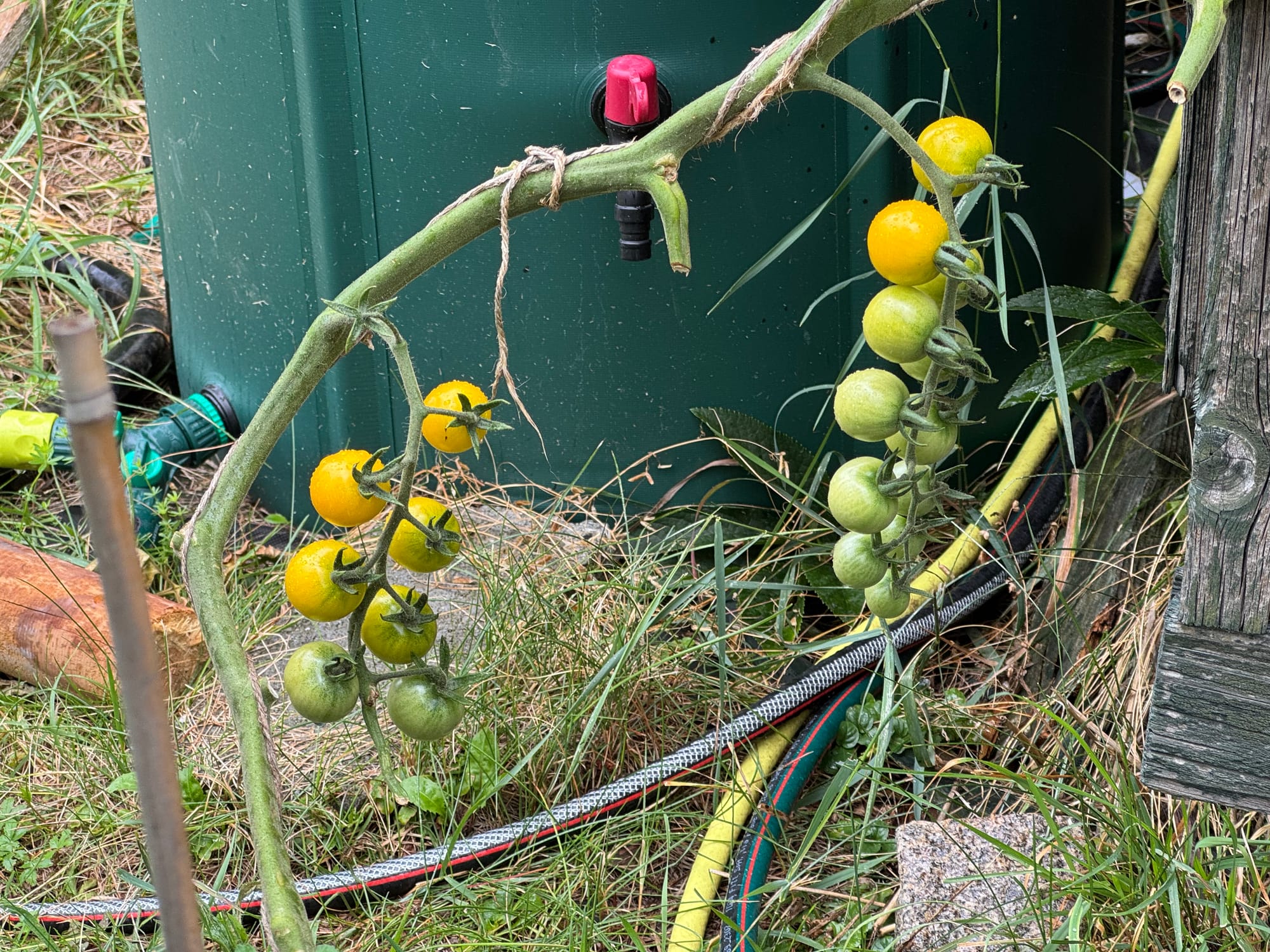
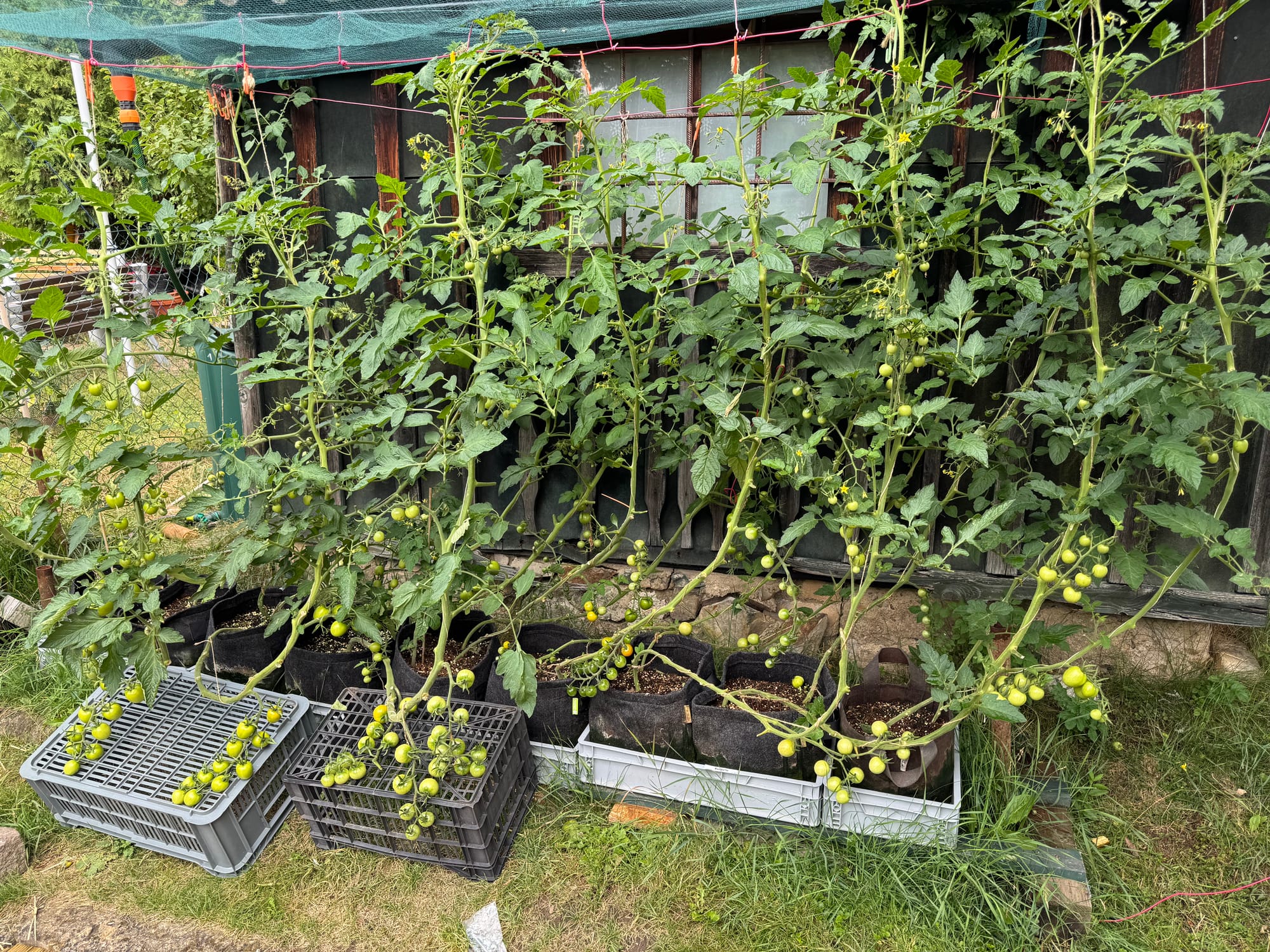

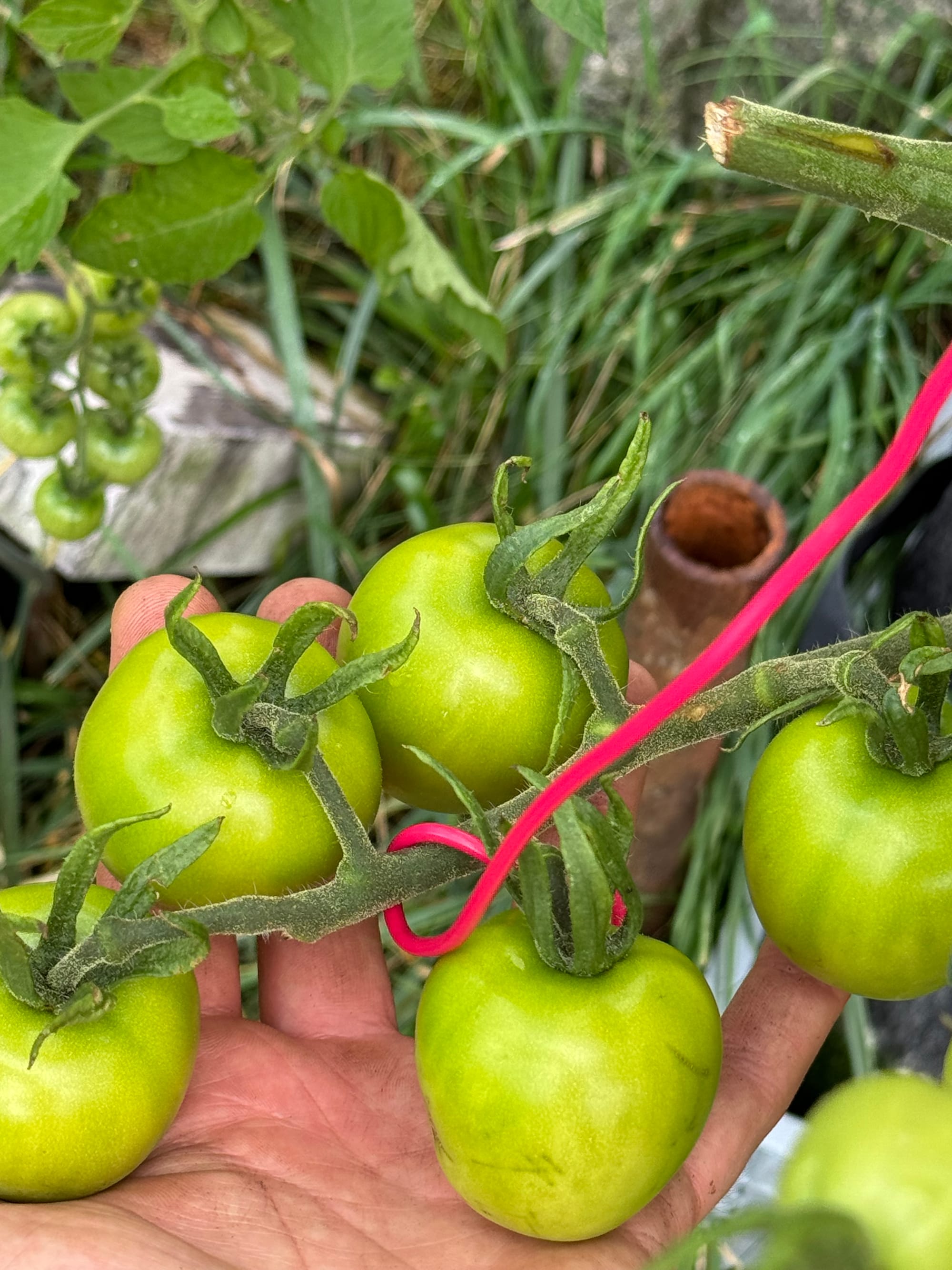
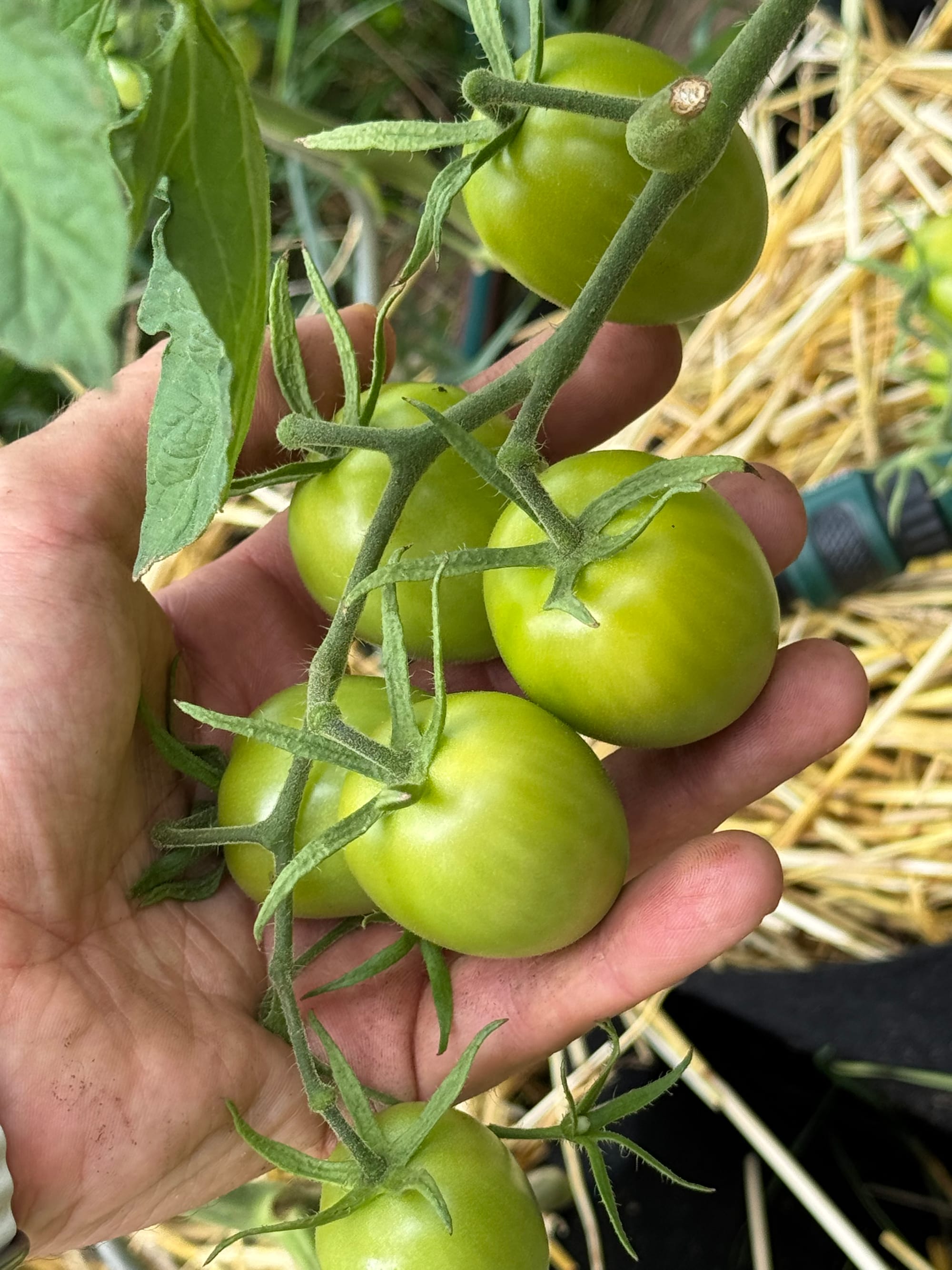
Fruits are getting heavy, I support them with empty crates
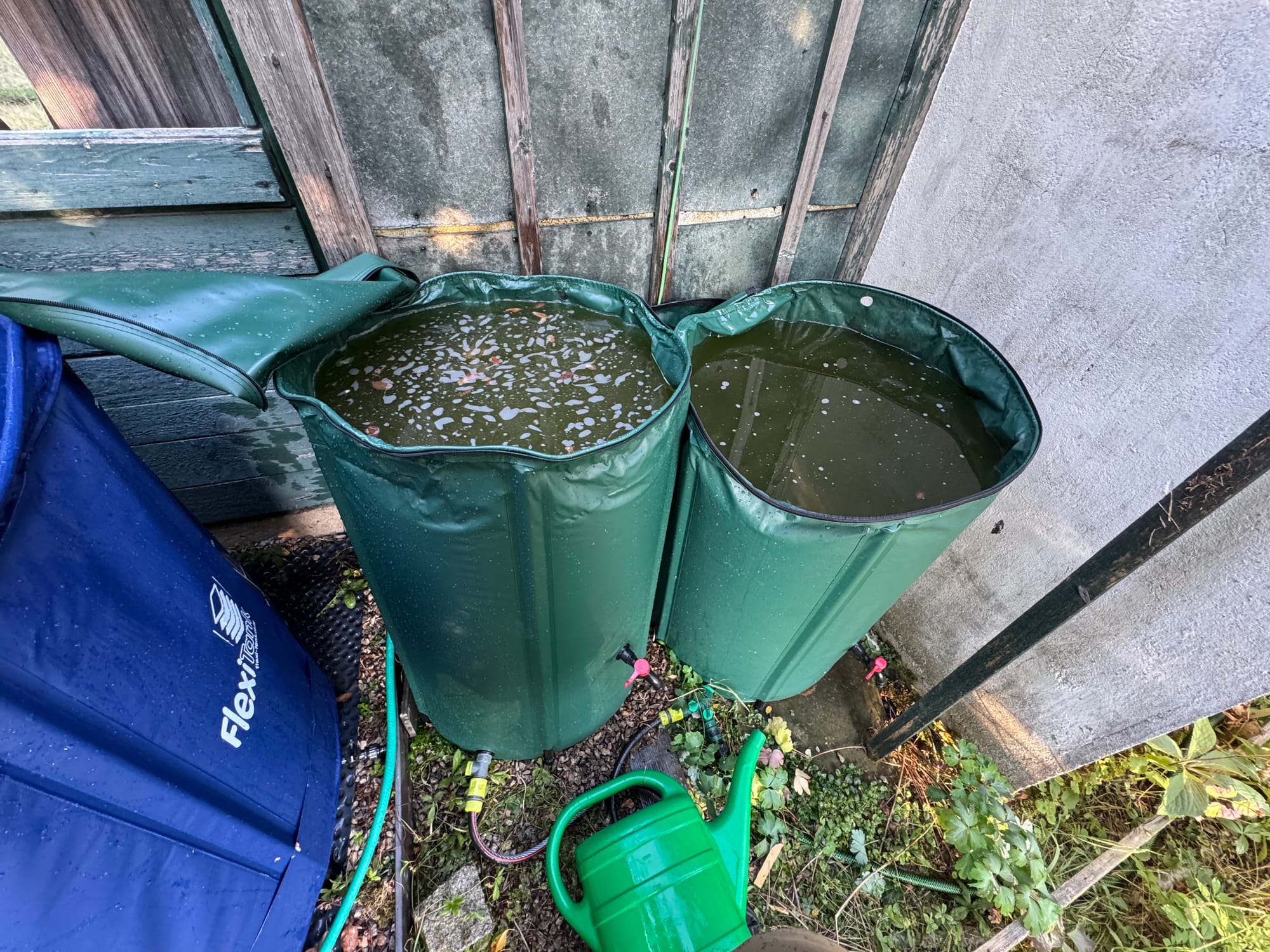
The fruits are large and plentiful, the plants are vigorous and strong, and the stems are very thick. However, I had some structural failures. The hemp strings I use for trellising sometimes fail catastrophically, leaving the plant lying on the ground.
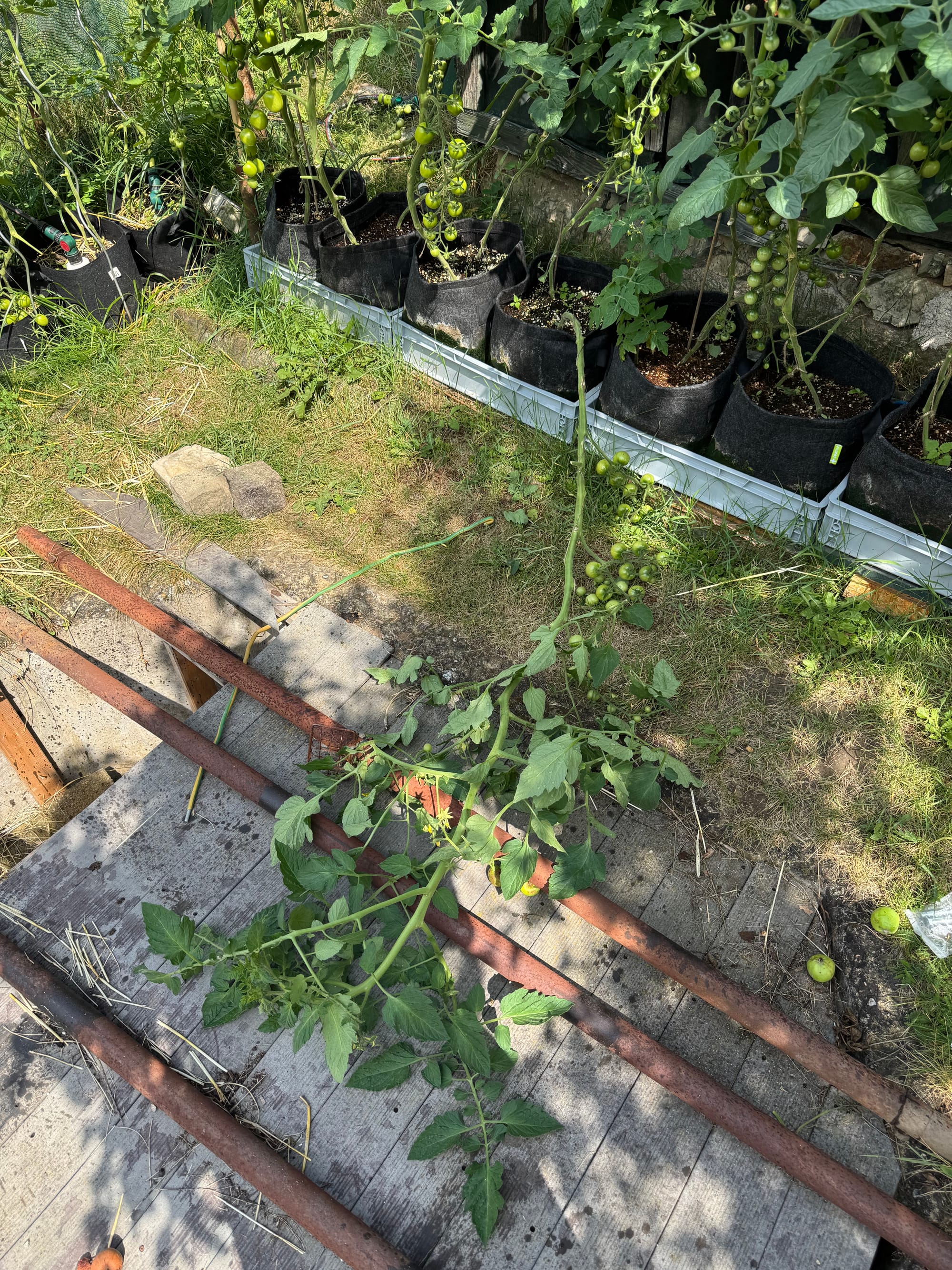
That would be fine, but the frame I used for trellising also failed. It was made of two bamboo sticks connected by a metal rod. And those bamboo sticks snapped in the middle.
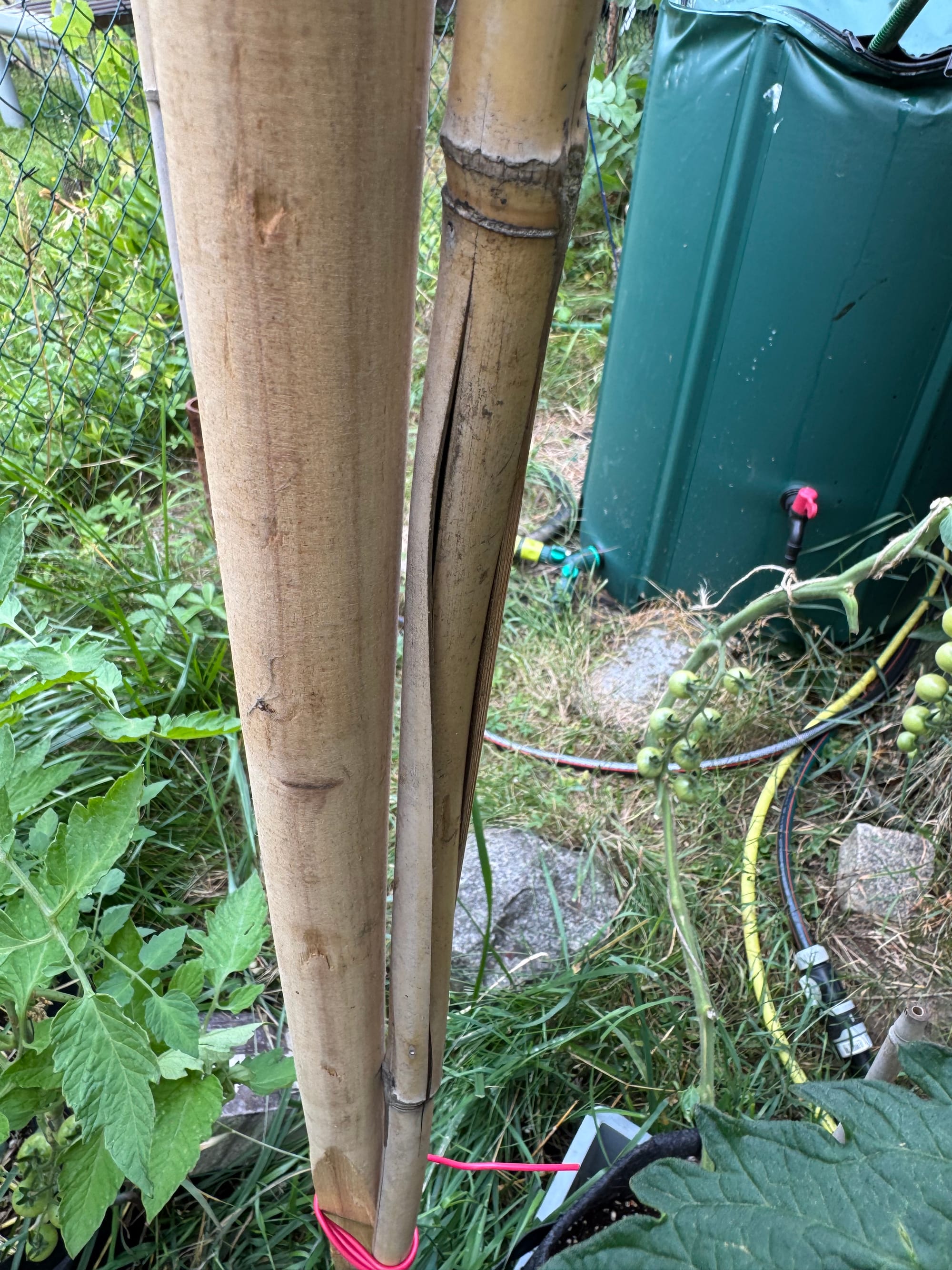
A great opportunity to whip out my welder, raise two thick stakes, and build a proper trellis frame. Also, a great opportunity to make some really disgusting welds. I suck at welding, obviously, but it holds up and supports plants way better than the old structure.
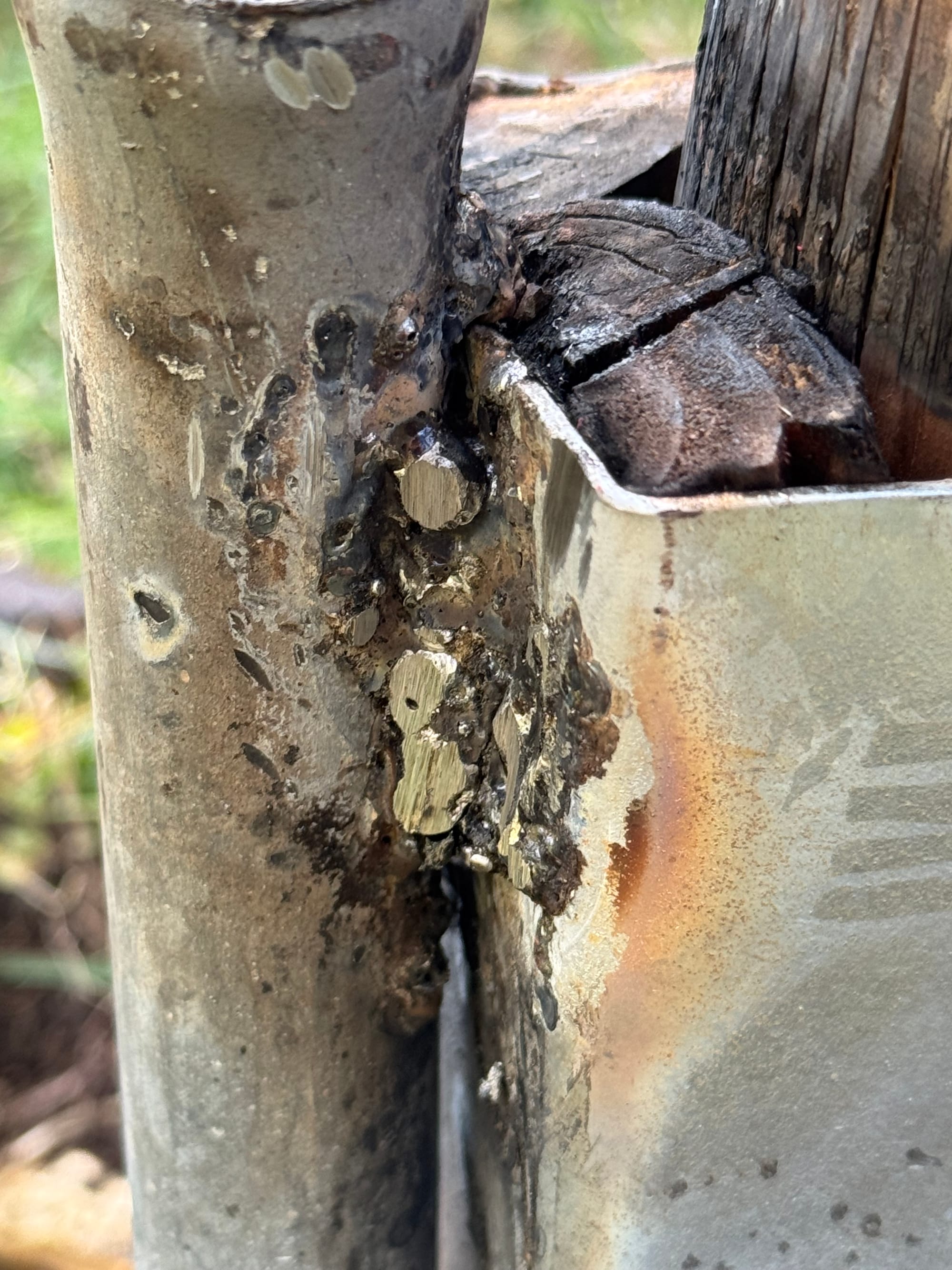
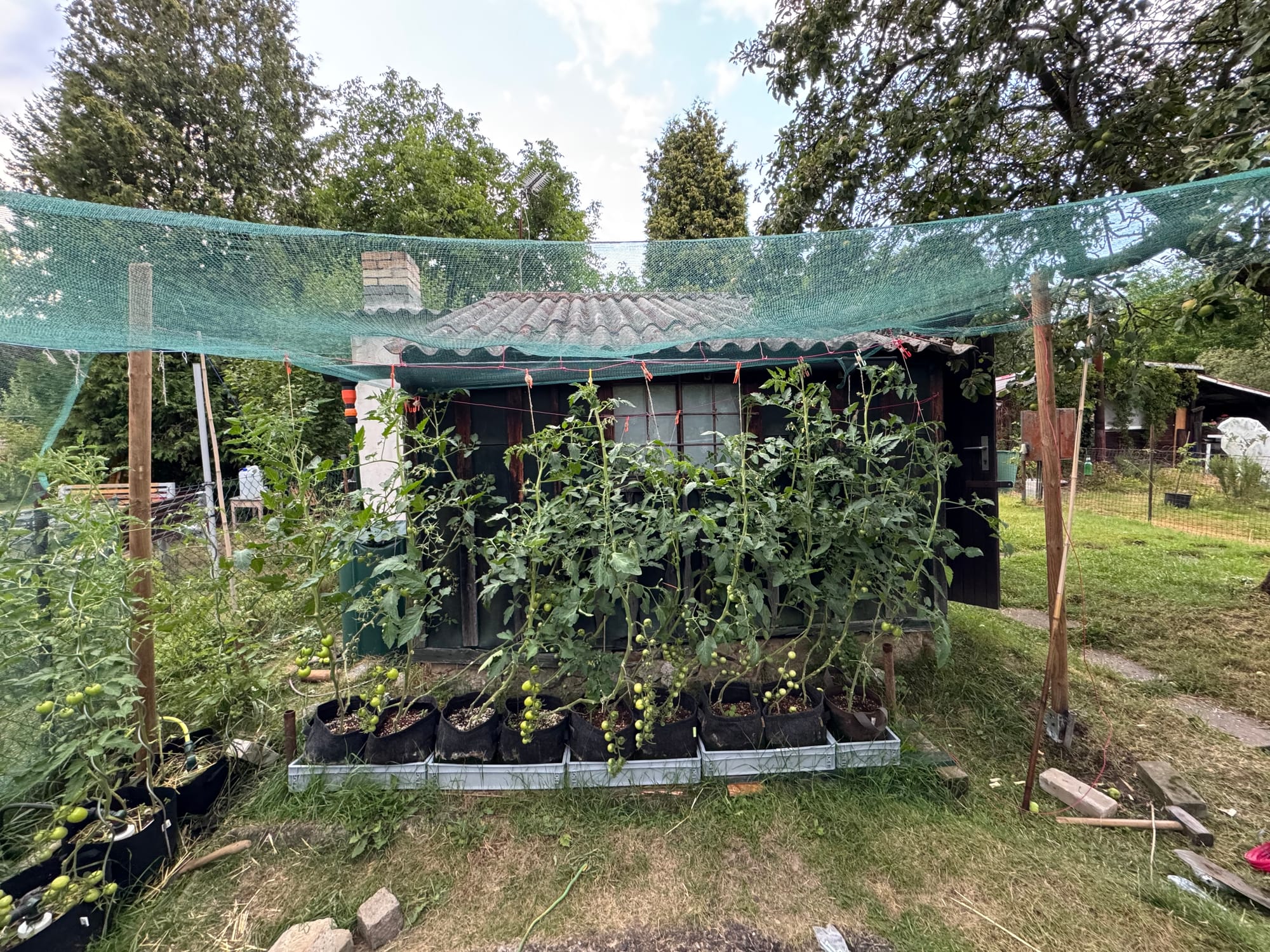
The tomatoes I grow in soil are doing great. They don’t show magnesium stress like my other plants, because I amended the soil before. That wasn’t even intentional. I wanted to add calcium into the mix, but only a granulated combination of magnesium and calcium was available. This probably saved them from the deficiency as well. Some of them show classic stress from early abuse, repetitive snapping, and repotting can cause thin stems and weird‑looking growth. From my experience, it’s mostly harmless. It just looks weird. Since they are producing healthy and tasty fruit, I’m not going to complain.
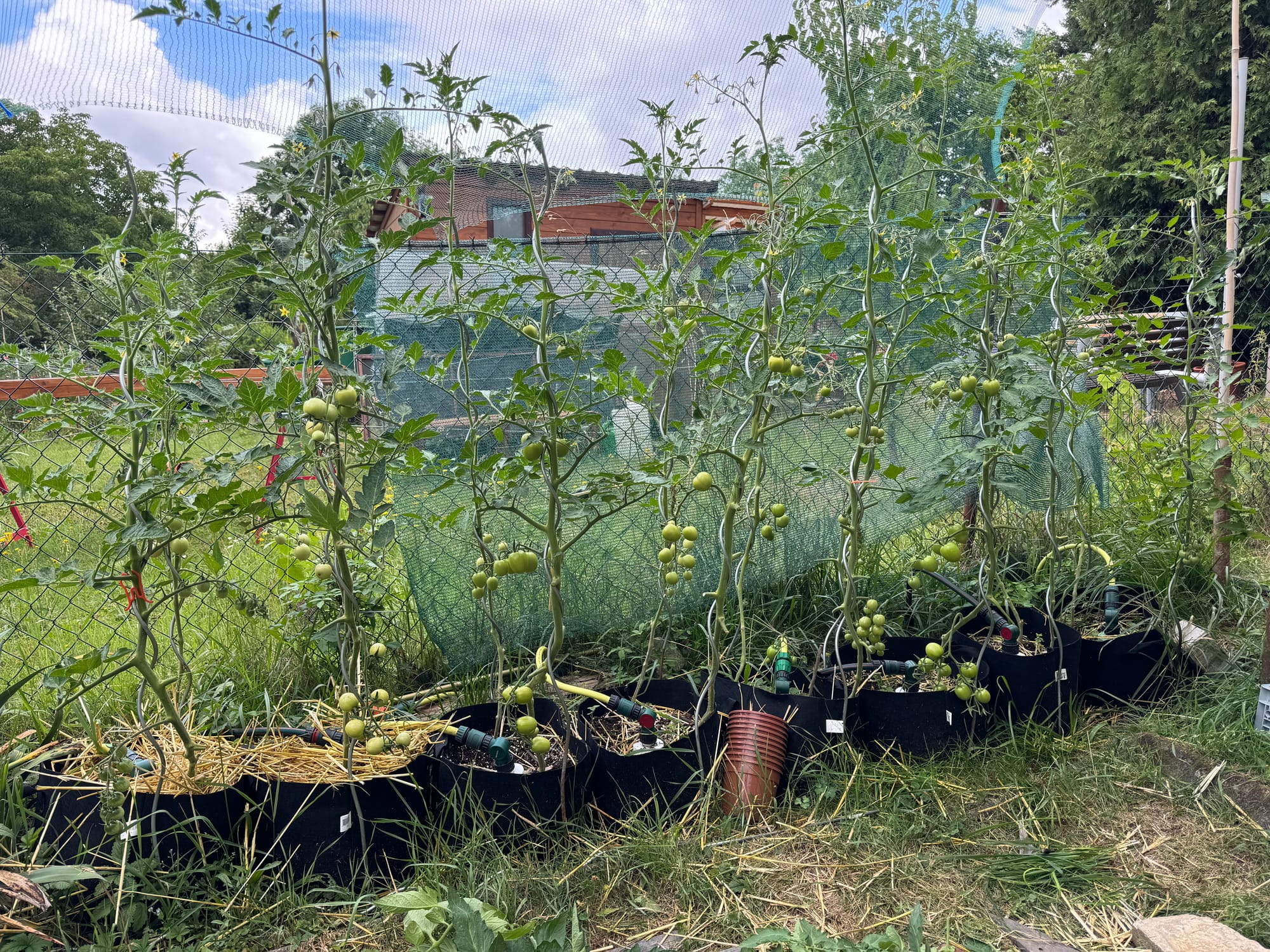
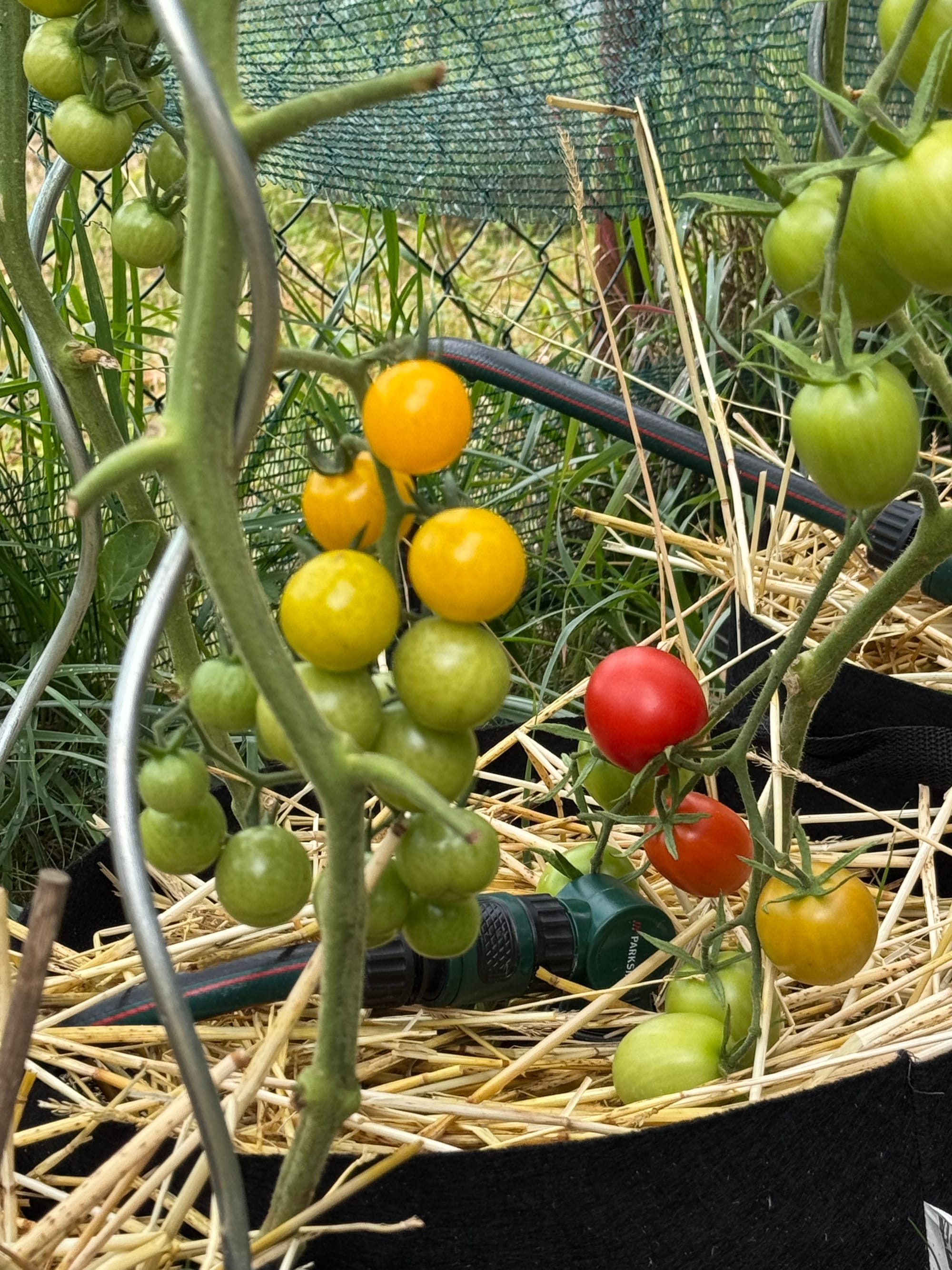

I’ve added some dry wheat straw from a nearby wheat field as mulch. Here I want to point out that it’s not wise to use wheat straw unless you are 100% sure no herbicide was used. Otherwise, you are going to kill your plants. It’s always a good idea to ask the owner. Mulching the tomatoes like this should help with evaporation on hot days, keep the soil evenly moist, and act as splash protection to keep leaves dry.
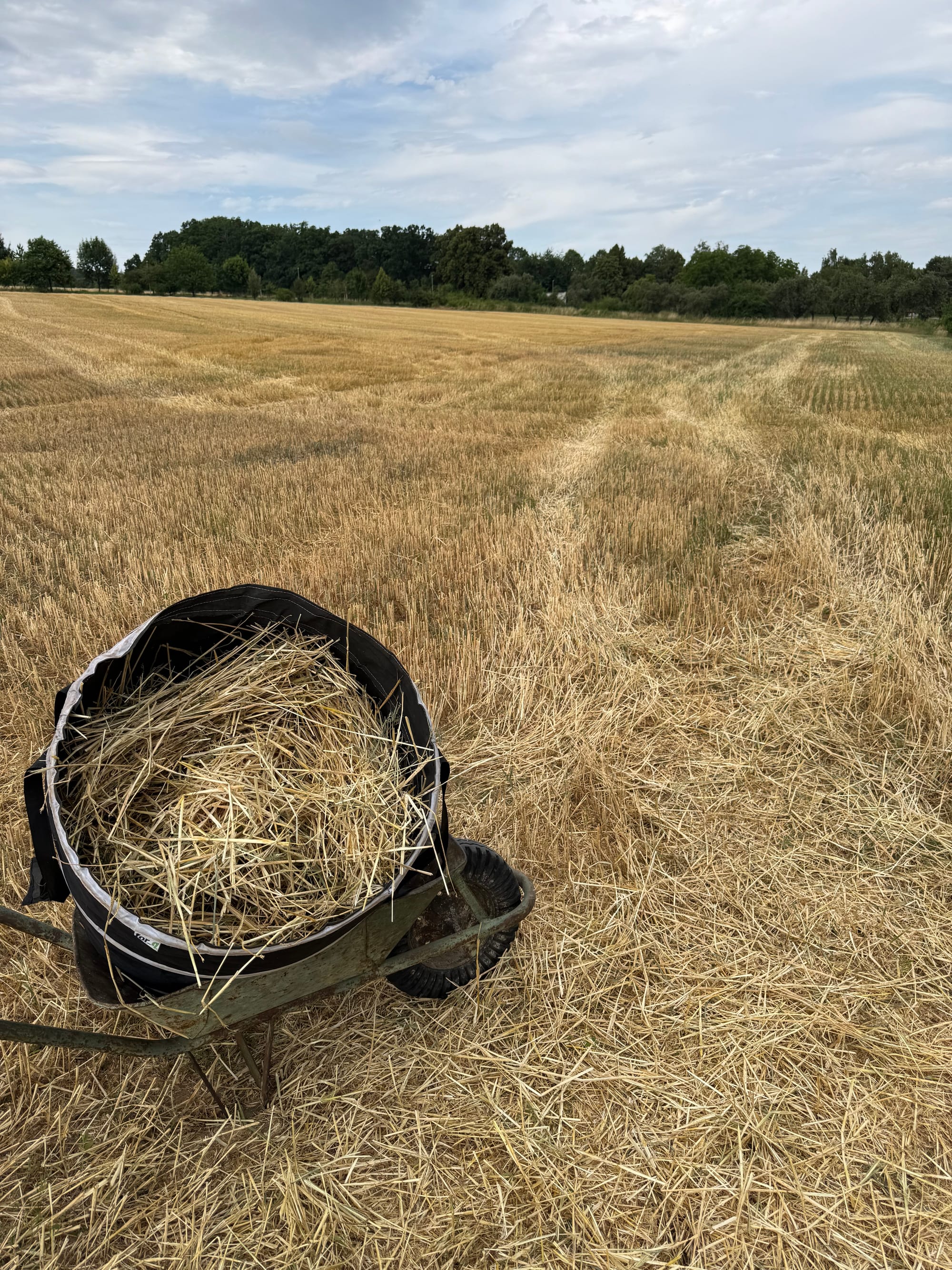
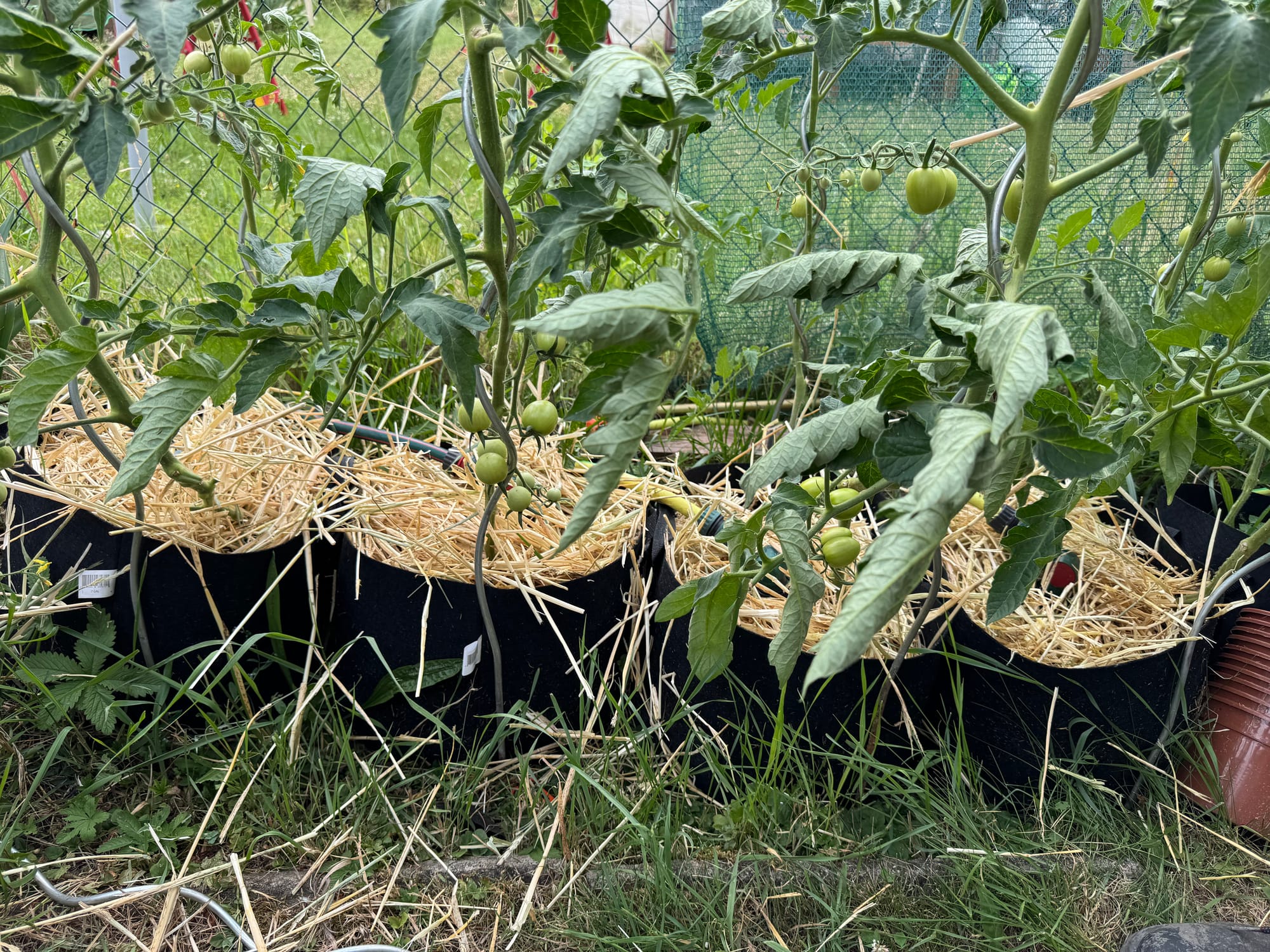
Speaking of dry leaves, this might be a controversial topic. When growing tomatoes outside, it is very important to keep the canopy airy and not humid to avoid infections. I heavily defoliate my plants through the season because I am more scared of fungal infection than of losing sugar content in the fruit. I usually wait until the first fruit develops, then strip all leaves from this point all the way down to the ground. The plant doesn’t care that much. These leaves are often shaded anyway and have no effect on taste or fruit development.
Then I regularly cut older mature leaves in half and remove some older leaves depending on conditions. There is no universal way to do this properly, but this is what works for me right now.
The Red Robin tomatoes in my greenhouse are, as in previous years, very productive considering their size. I even had to trellis them because they are unable to support themselves, even though it’s a determinate variety. However, this year, even though still productive, they have been hit by my incompetence. They show a slight magnesium deficiency, like other plants in the greenhouse I’ll talk about, but not as severe. Tomatoes are forgiving plants sometimes.

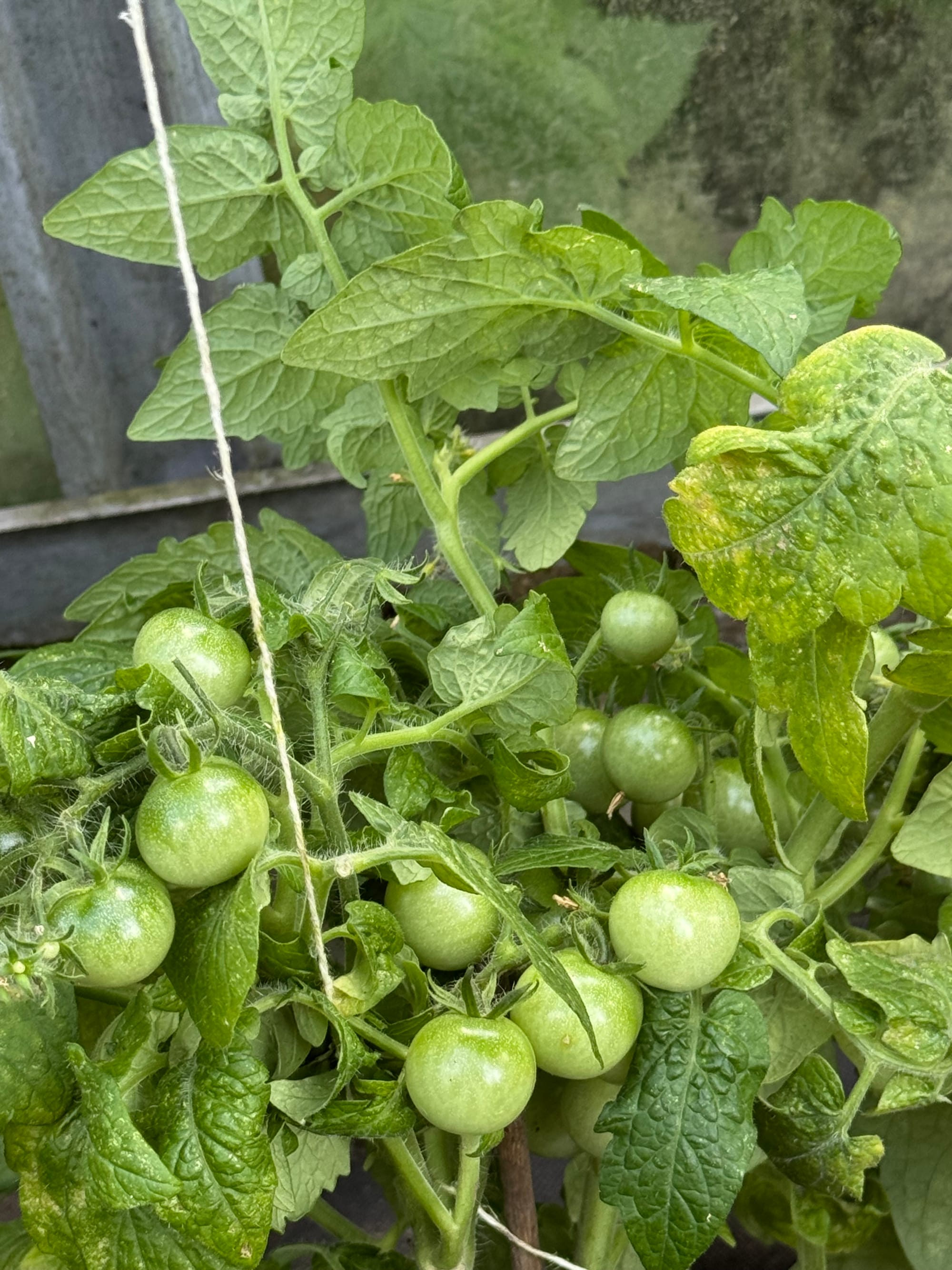
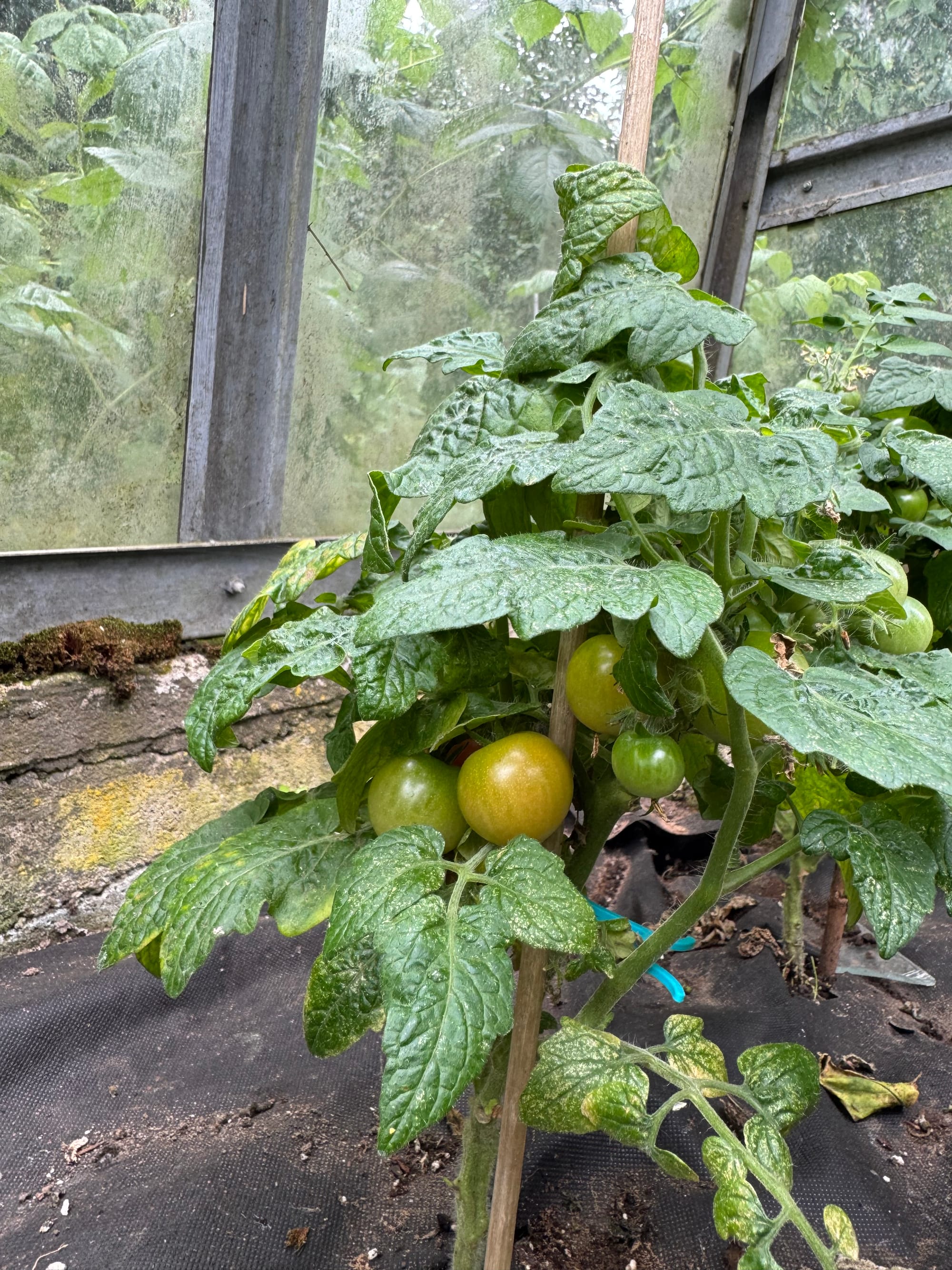
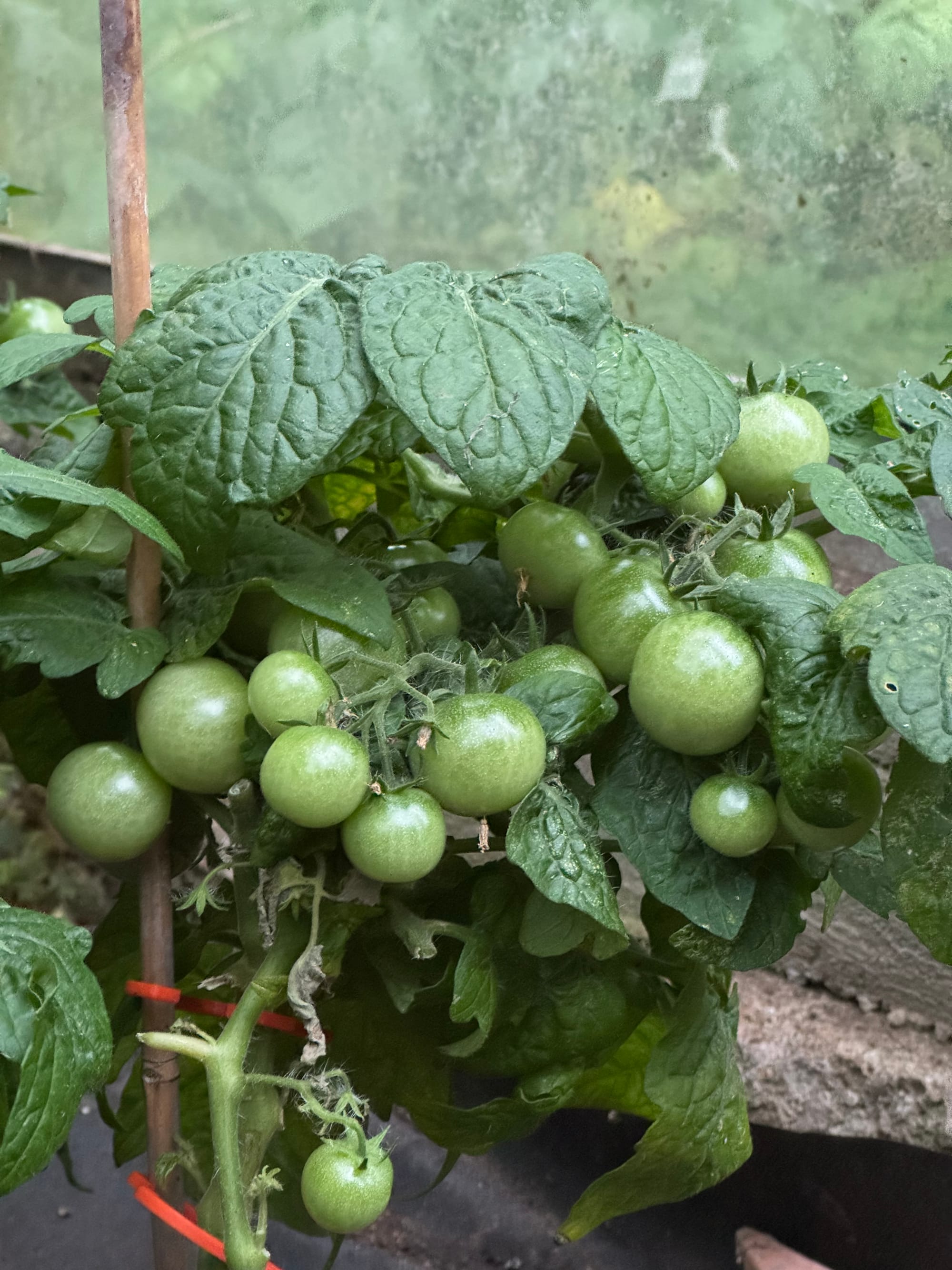
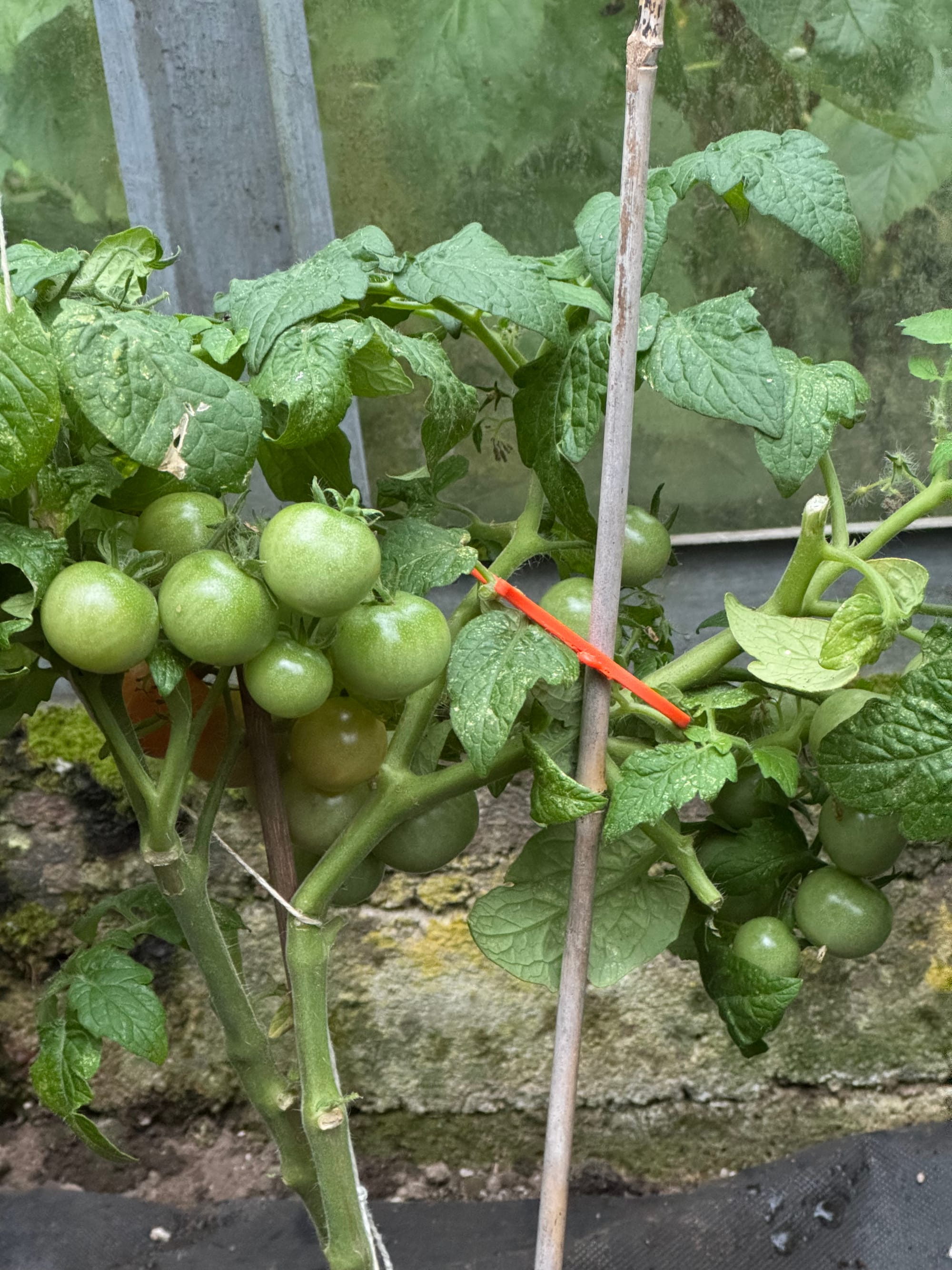
And to finish this section, let’s harvest potatoes. I waited for the tops to start dying off and didn’t want to wait for the first sign of blight or fungus.
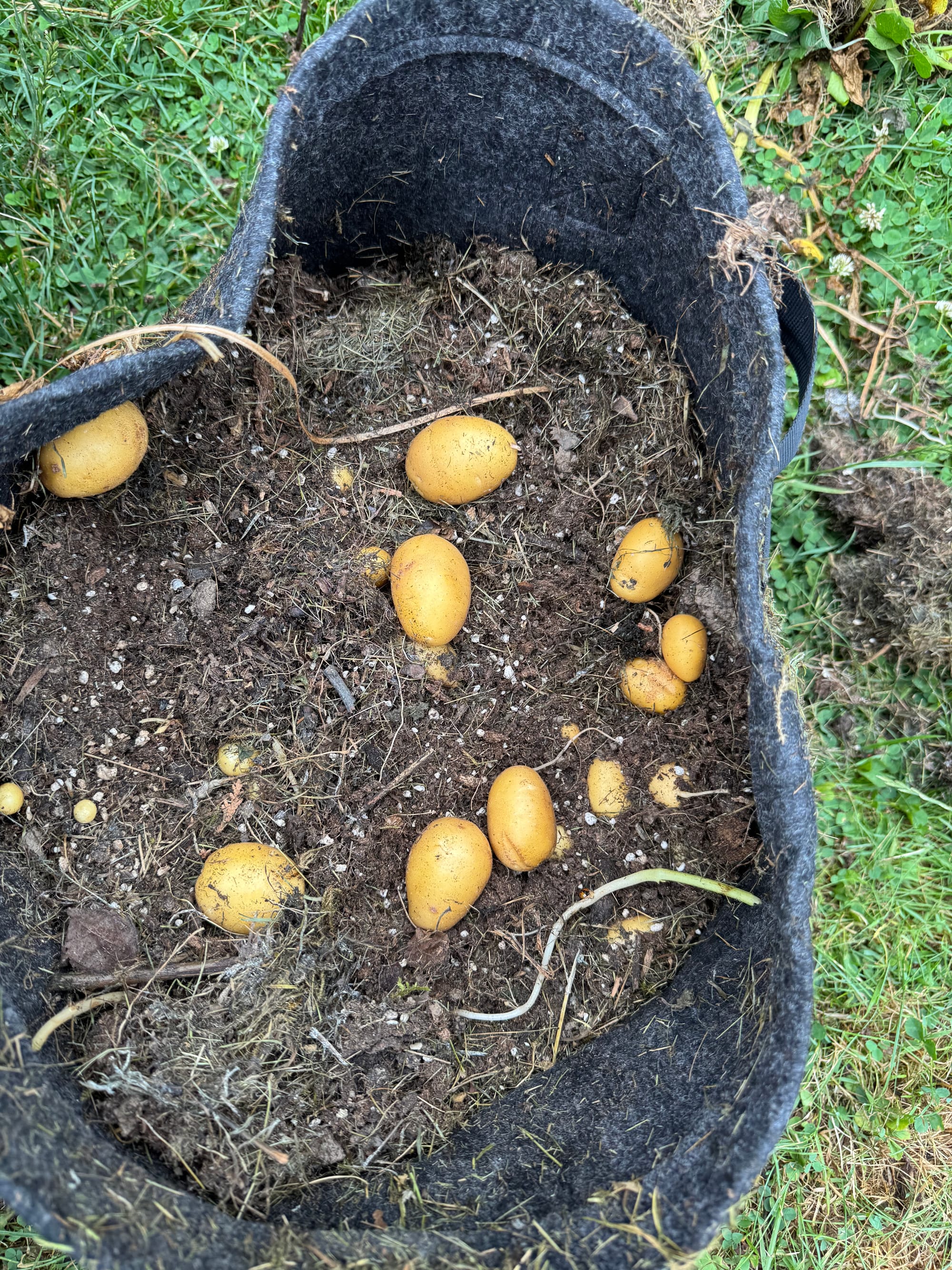
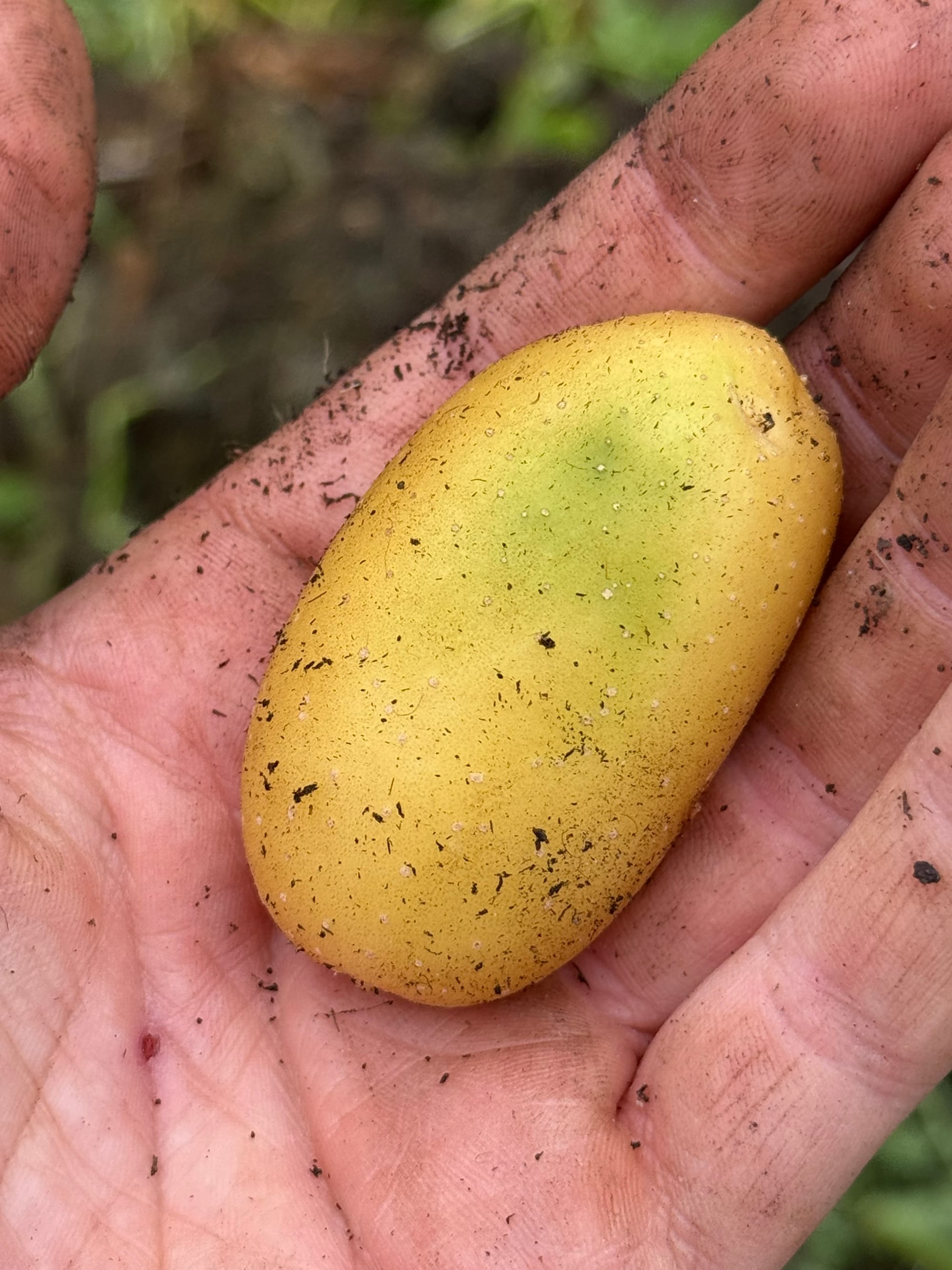
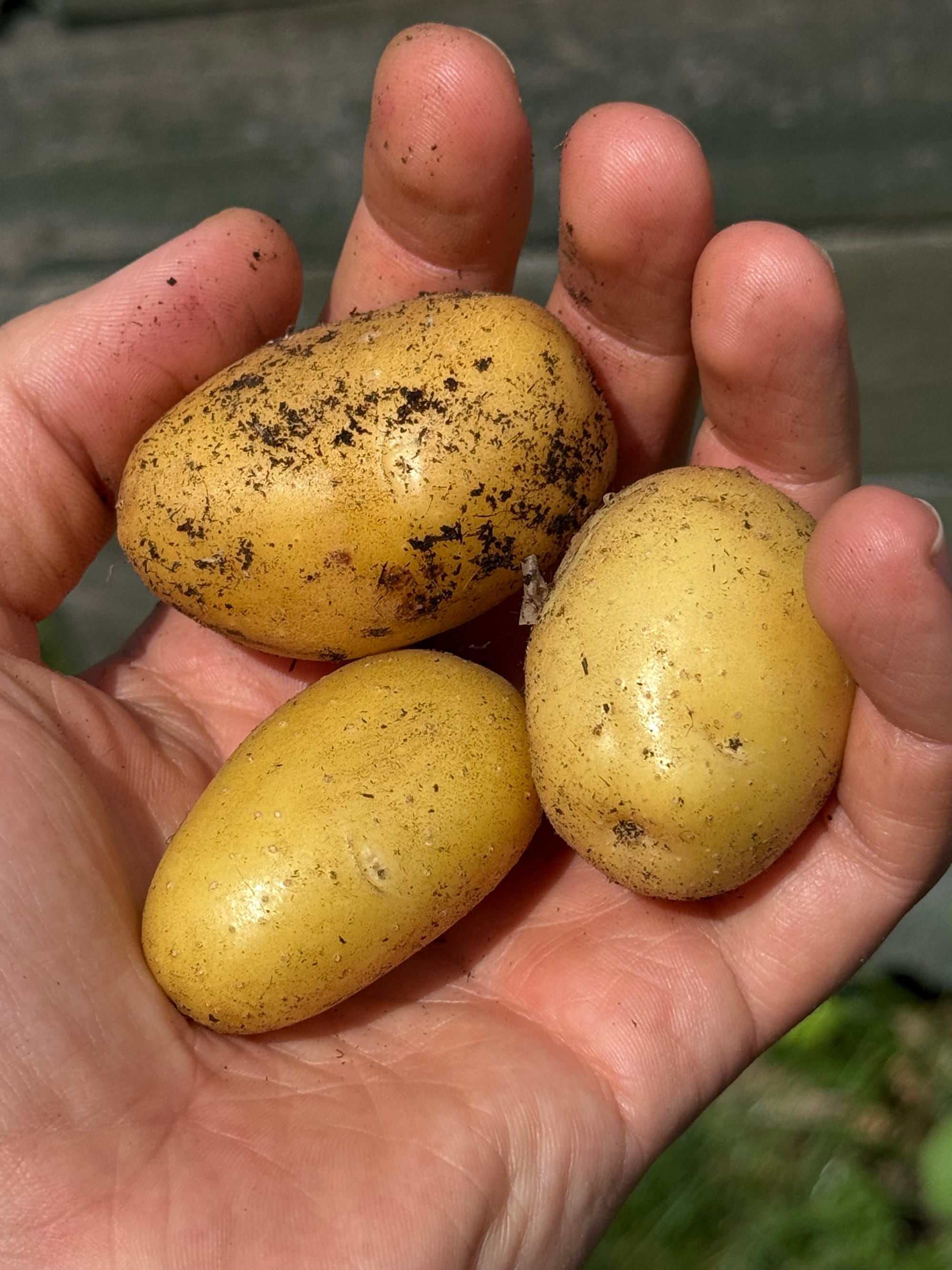
It's a nice look into the bag. I got my first green potato as well.
In the end, I harvested about 0.8–1.2 kg of spring potatoes from one bag. Not a bad harvest, but I expected a little more considering the amount of canopy.

I amended the soil, removed some of the grass mulch, and prepared some bags for zucchini seedlings patiently waiting for a new home.
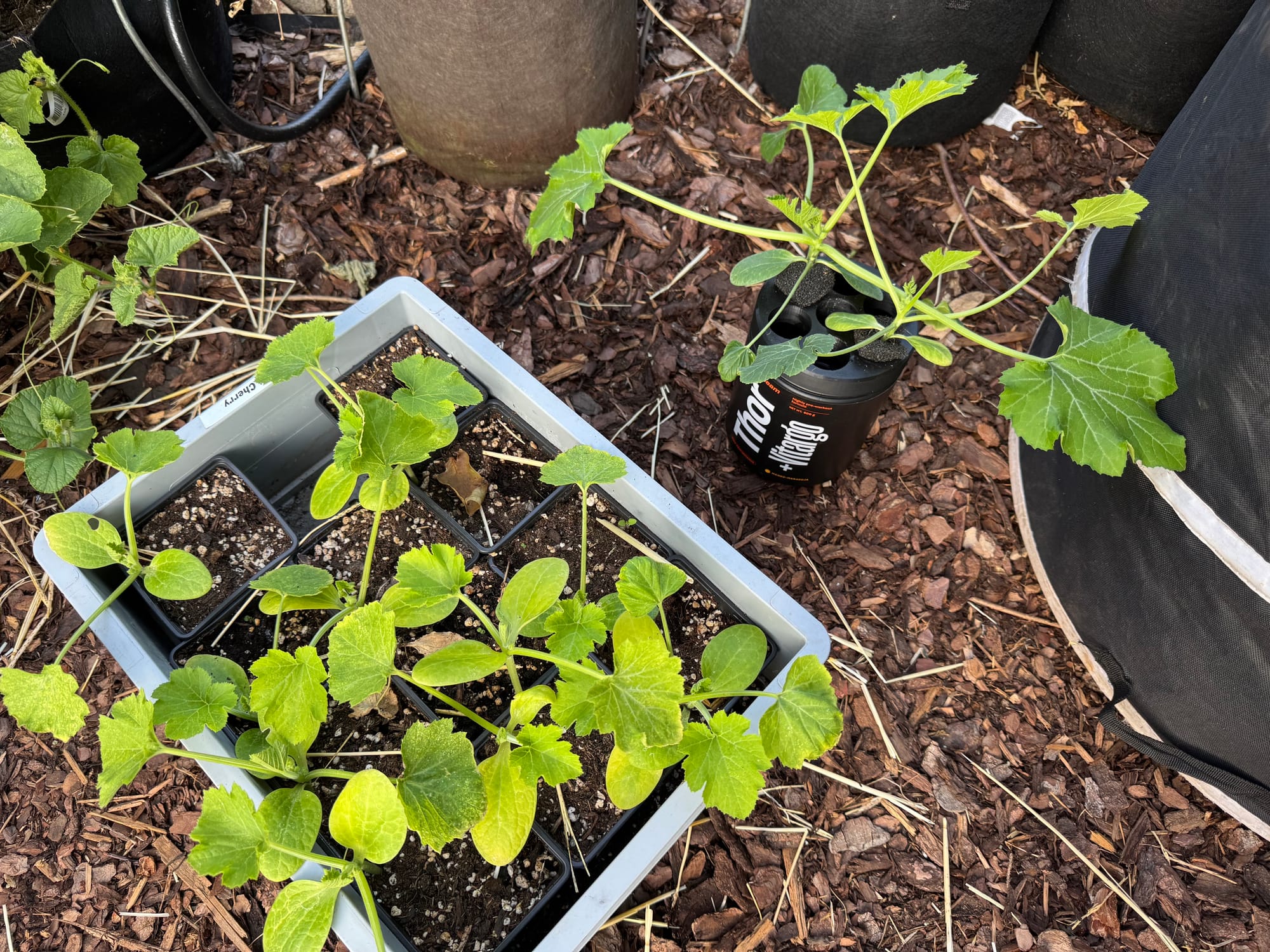
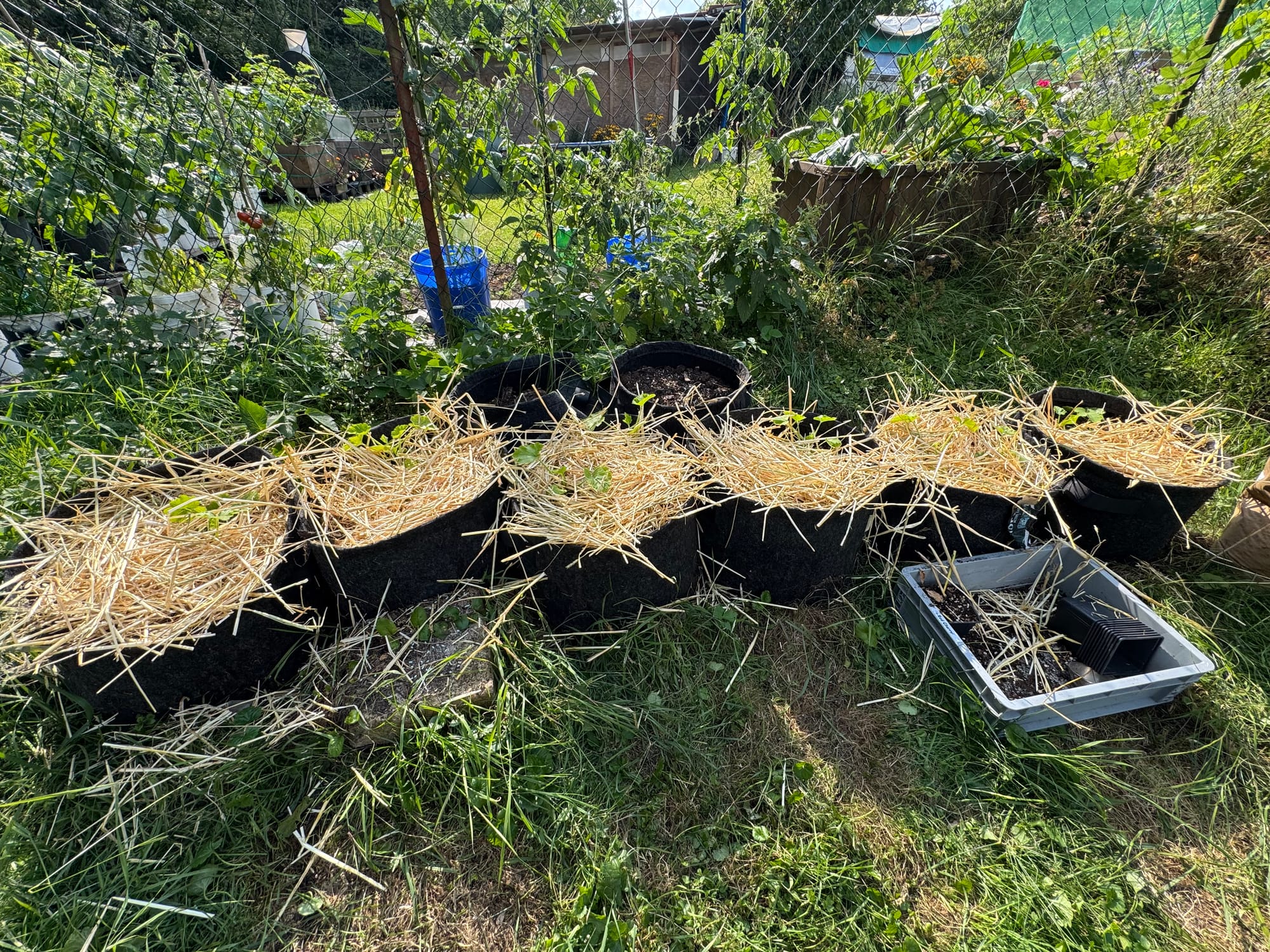

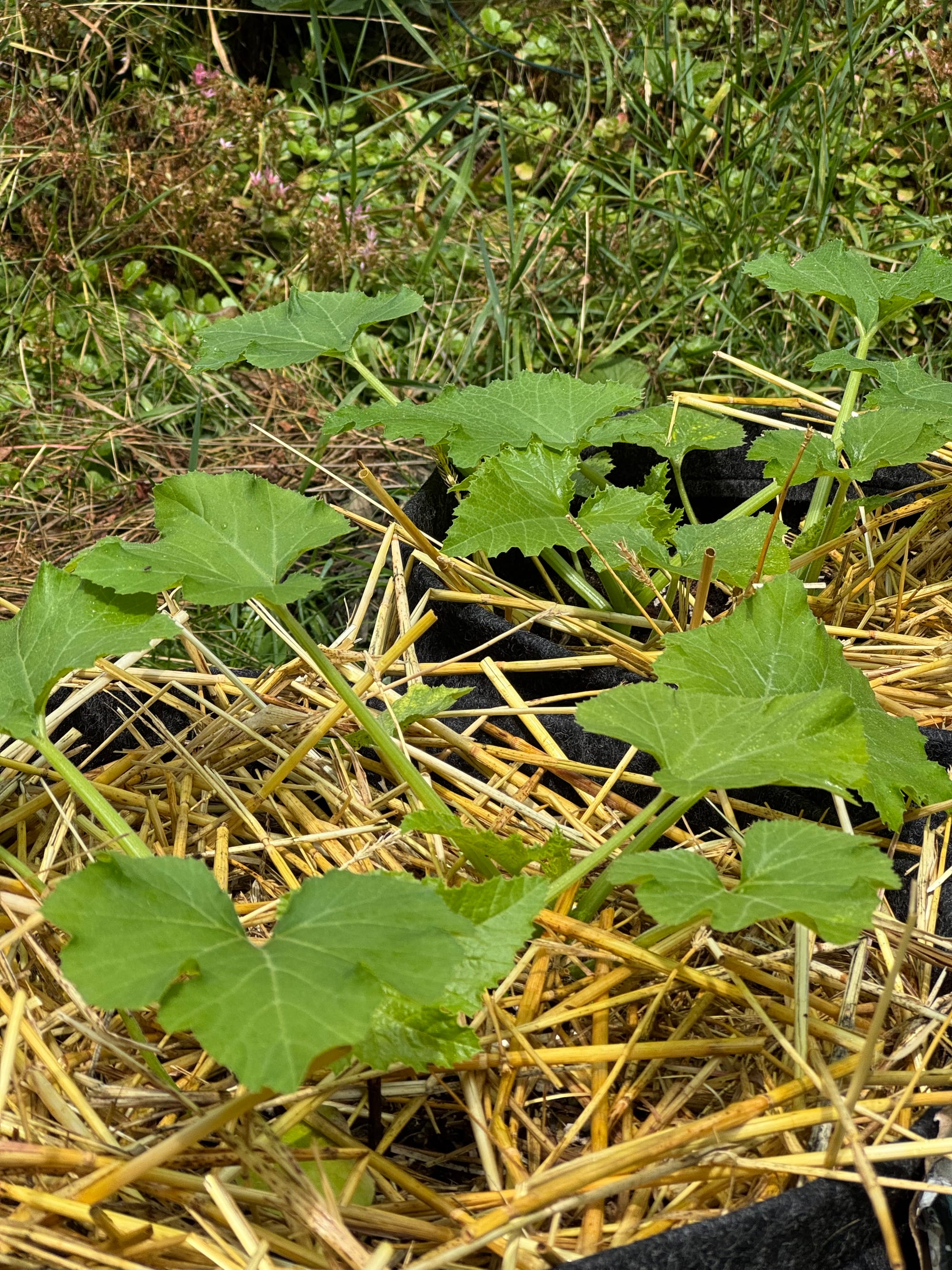
the spice girls
And now let’s move to the greenhouse to observe my failure. First of all, I want to point out that NeemAzal is very effective against spider mites. Drenching the plants in the solution multiple times removes them pretty nicely. It was only then that I started to wonder why the plants were turning yellow.
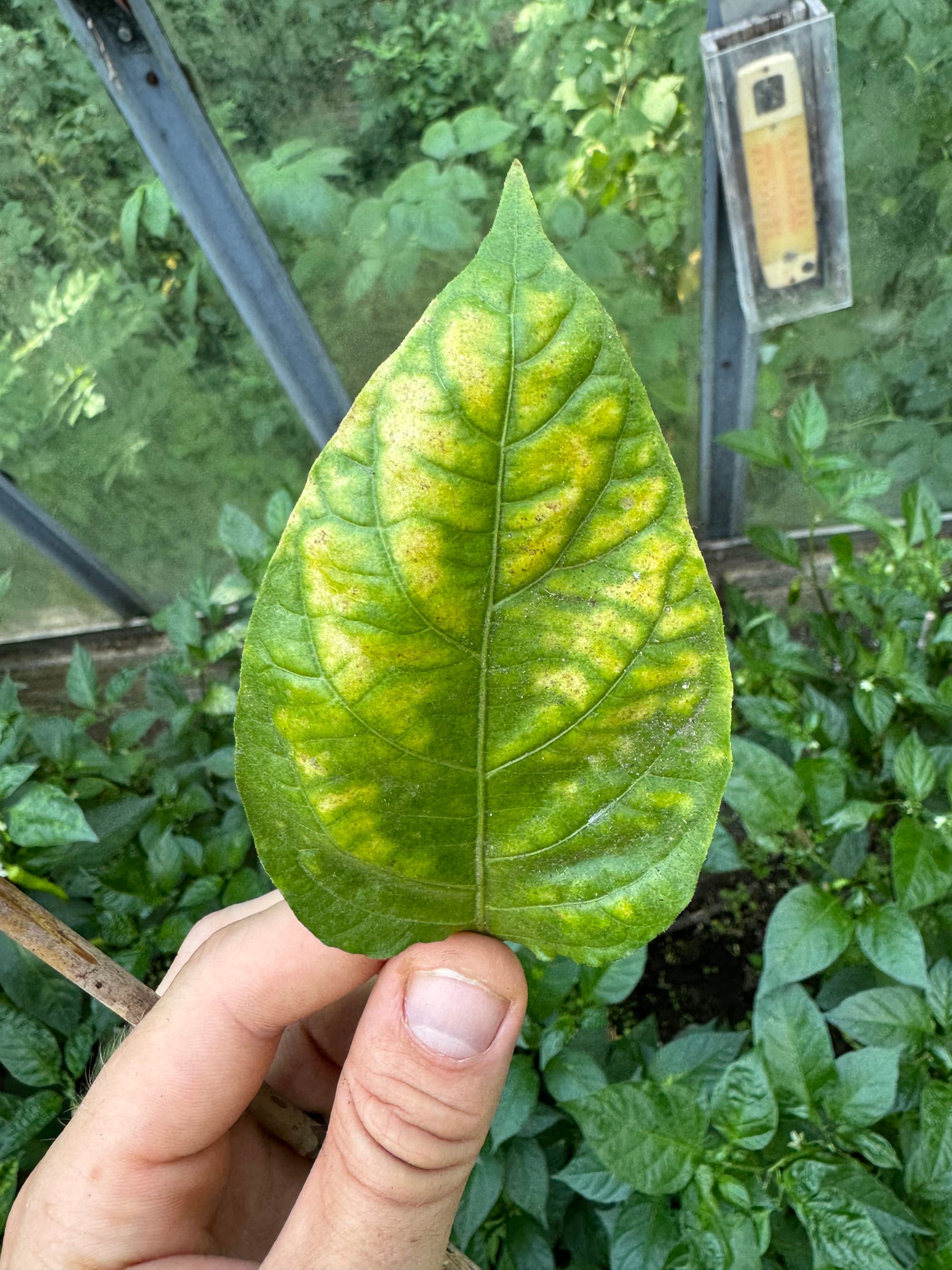
For some reason, one half of the greenhouse is affected more than the other. I always try to shuffle the soil in there, but I might be doing a bad job. The bell peppers, Bajka, and Meika, aside from the magnesium issue, are doing fine. The weather and early abuse stunted them a lot, however, and I’ll be glad to see any peppers at all. There is still plenty of time, but mostly for green peppers, unless the gods of global warming shift the season well into October.
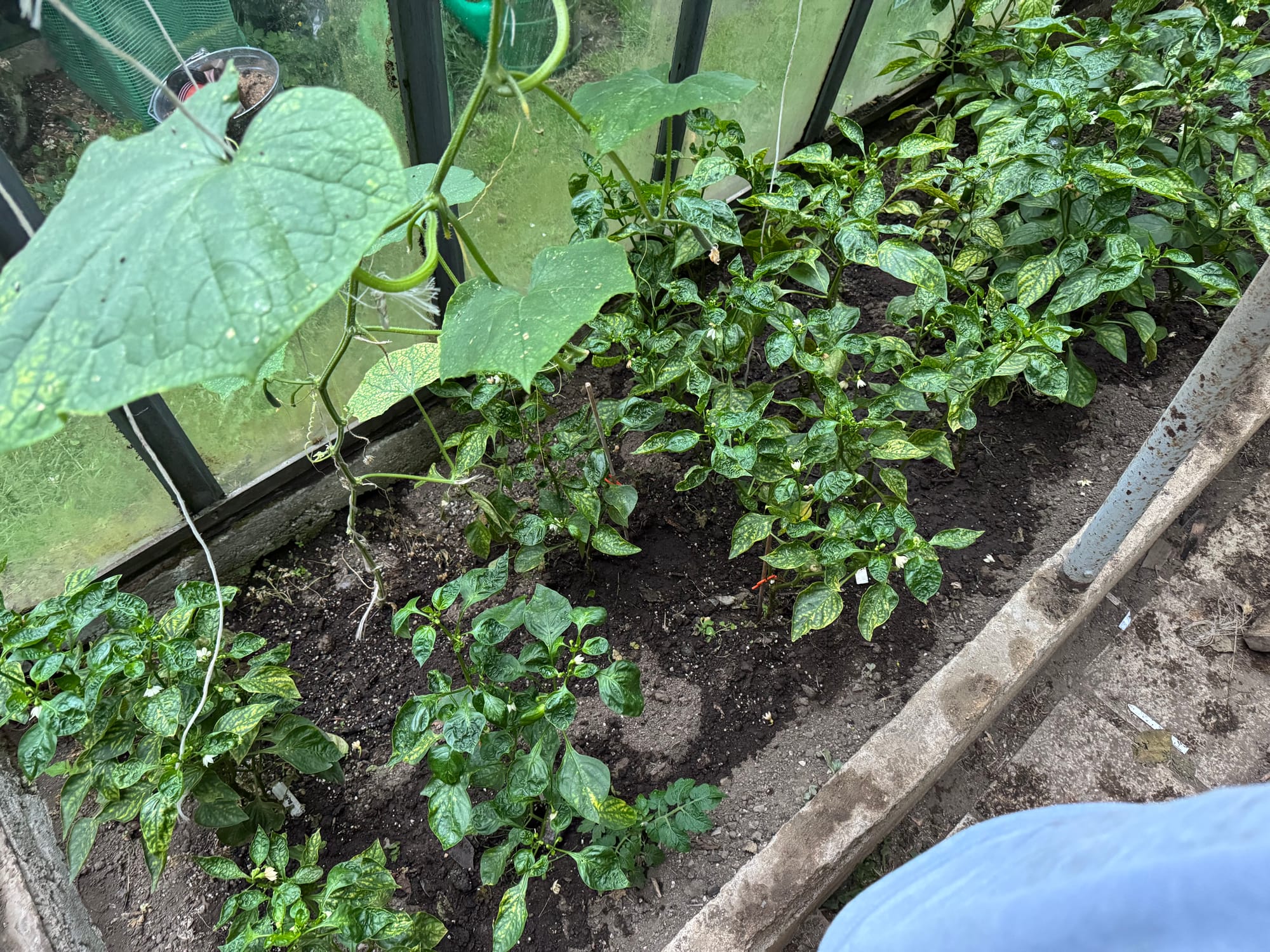
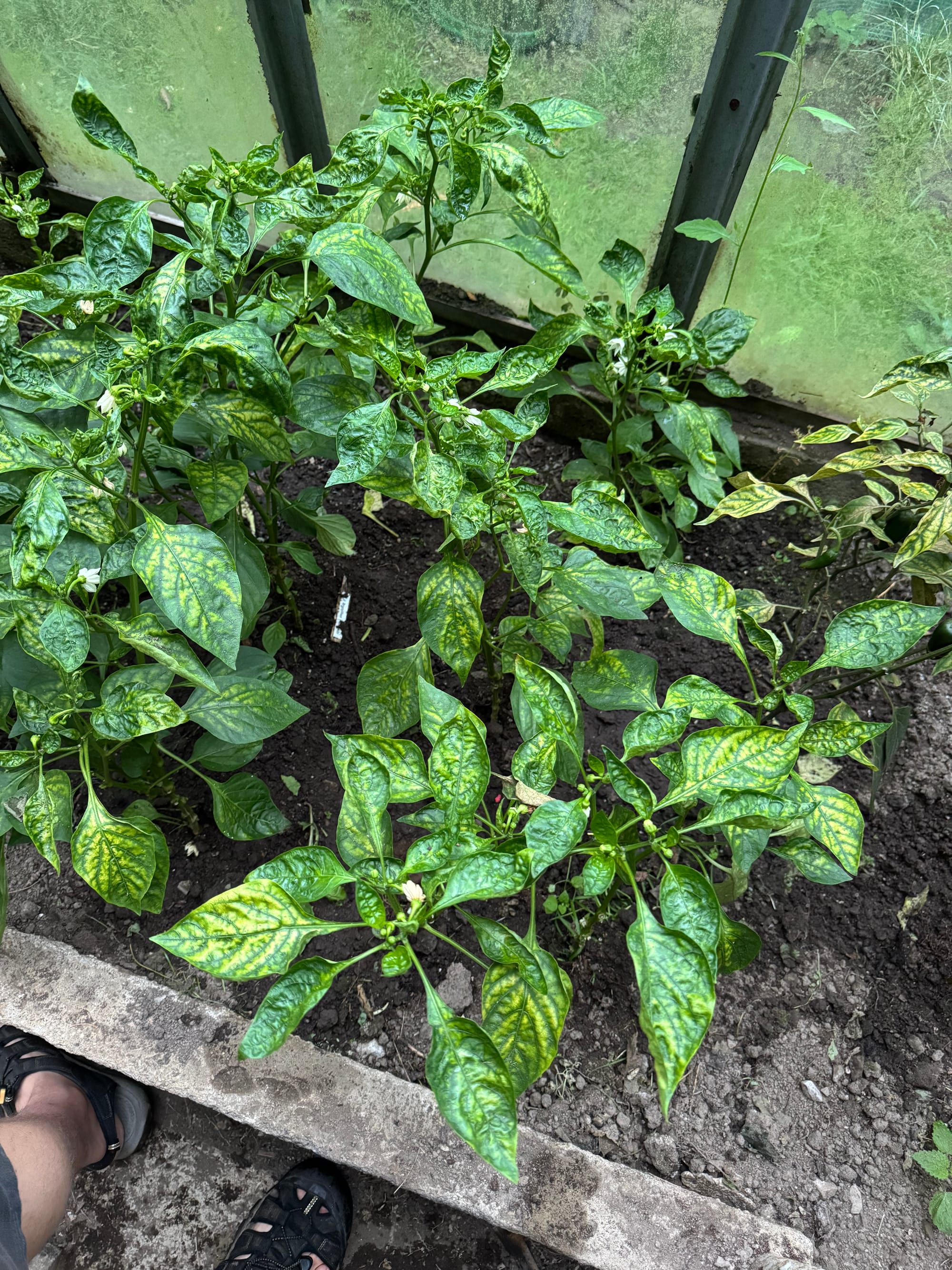
The bell peppers on left side of the greenhouse are affected more than the habaneros on the right.
What makes me very happy in the pepper world this year are habaneros. There are so many fruits slowly turning bright yellow again that I will have to start eating spicy food more often to keep up with the production.
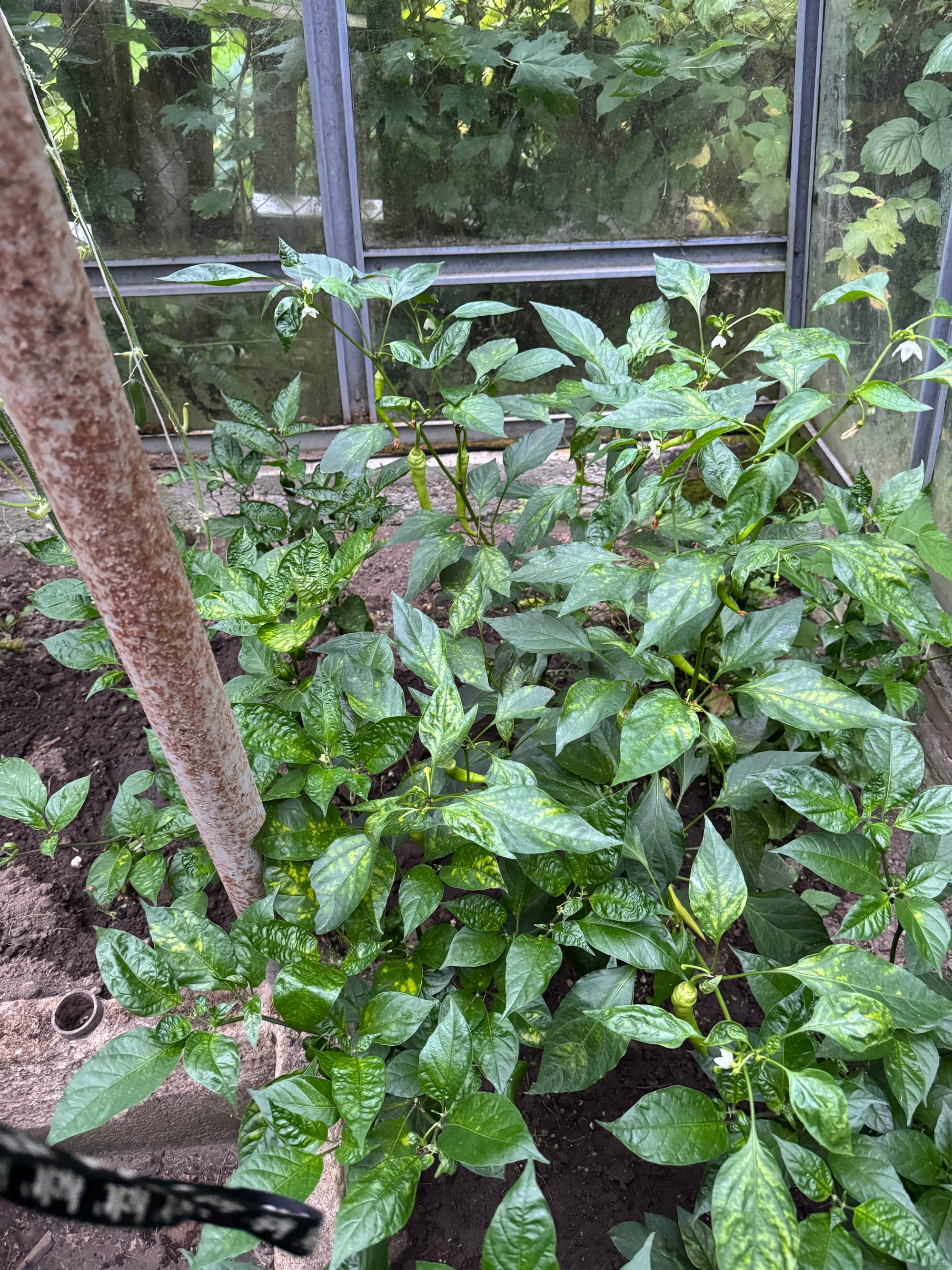
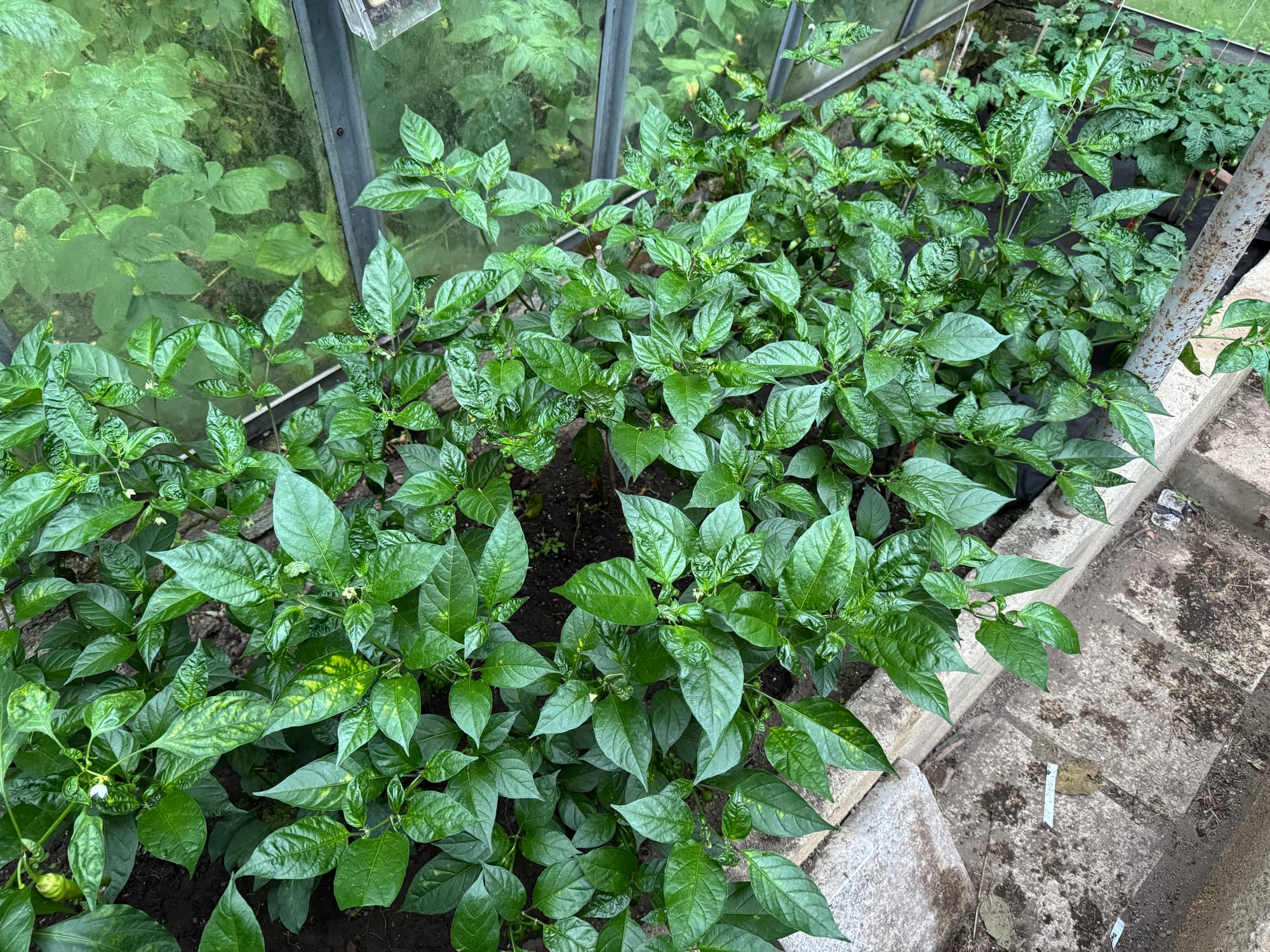
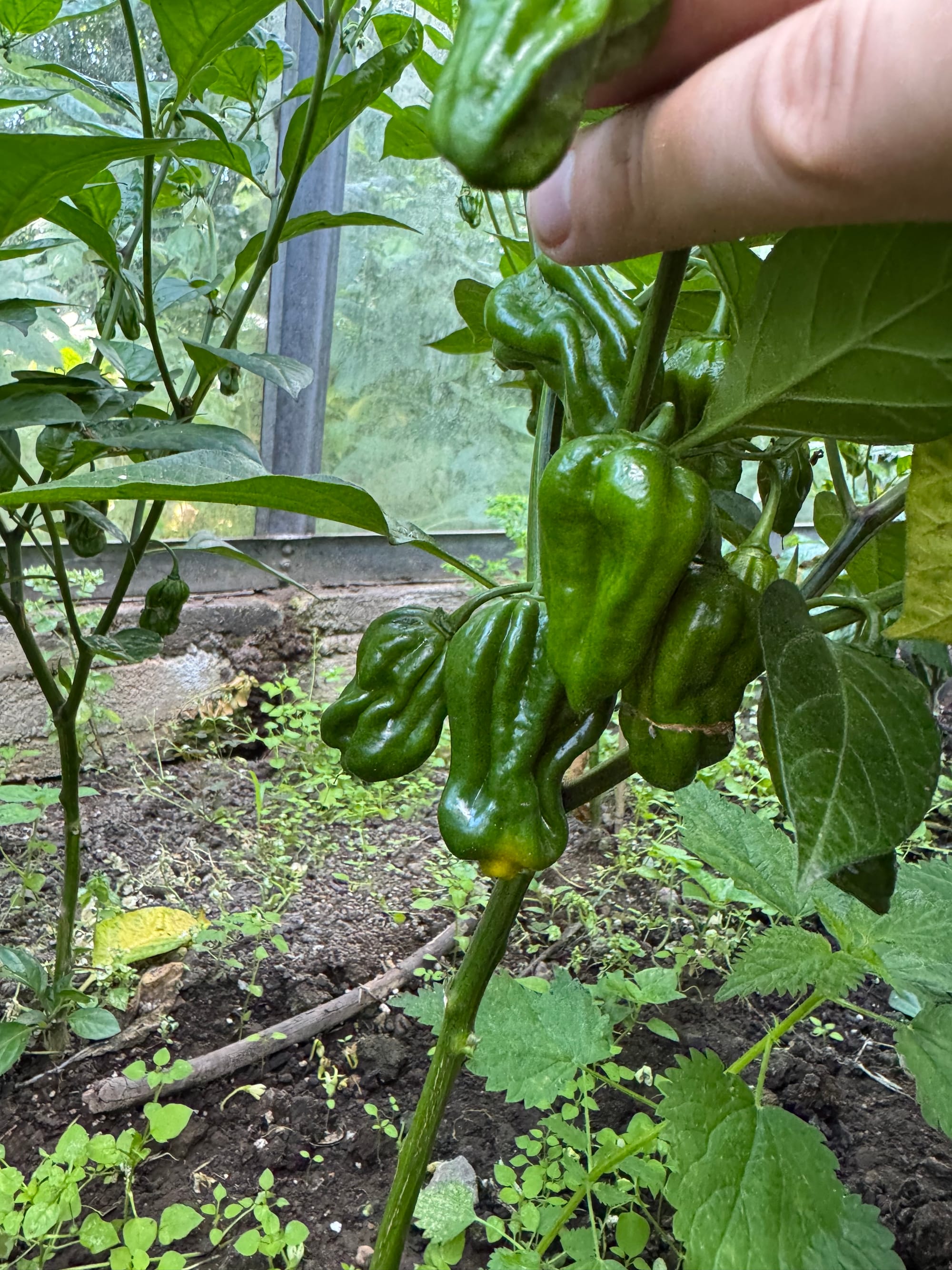
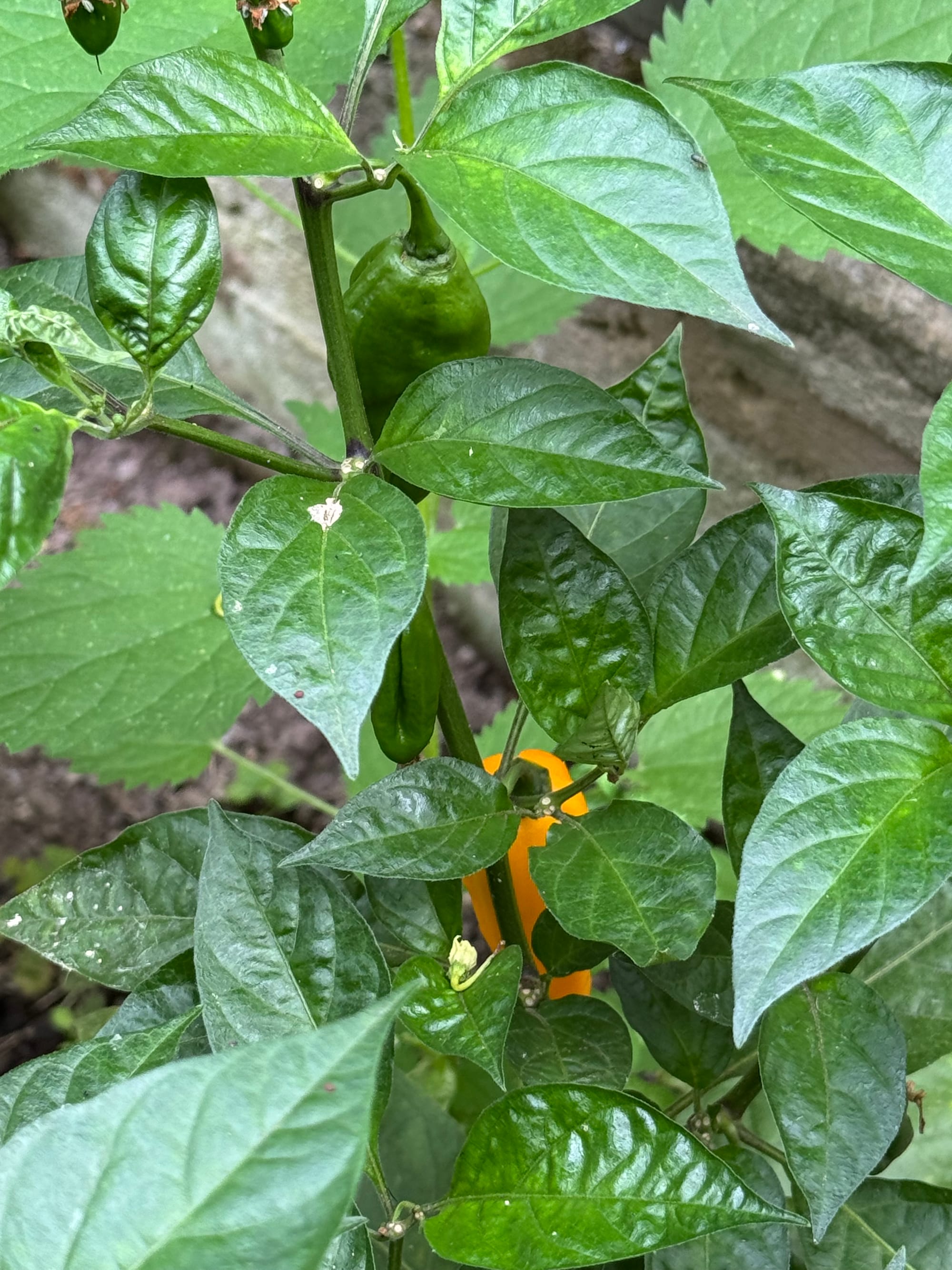

And here we go again.
And now let’s address the issue.

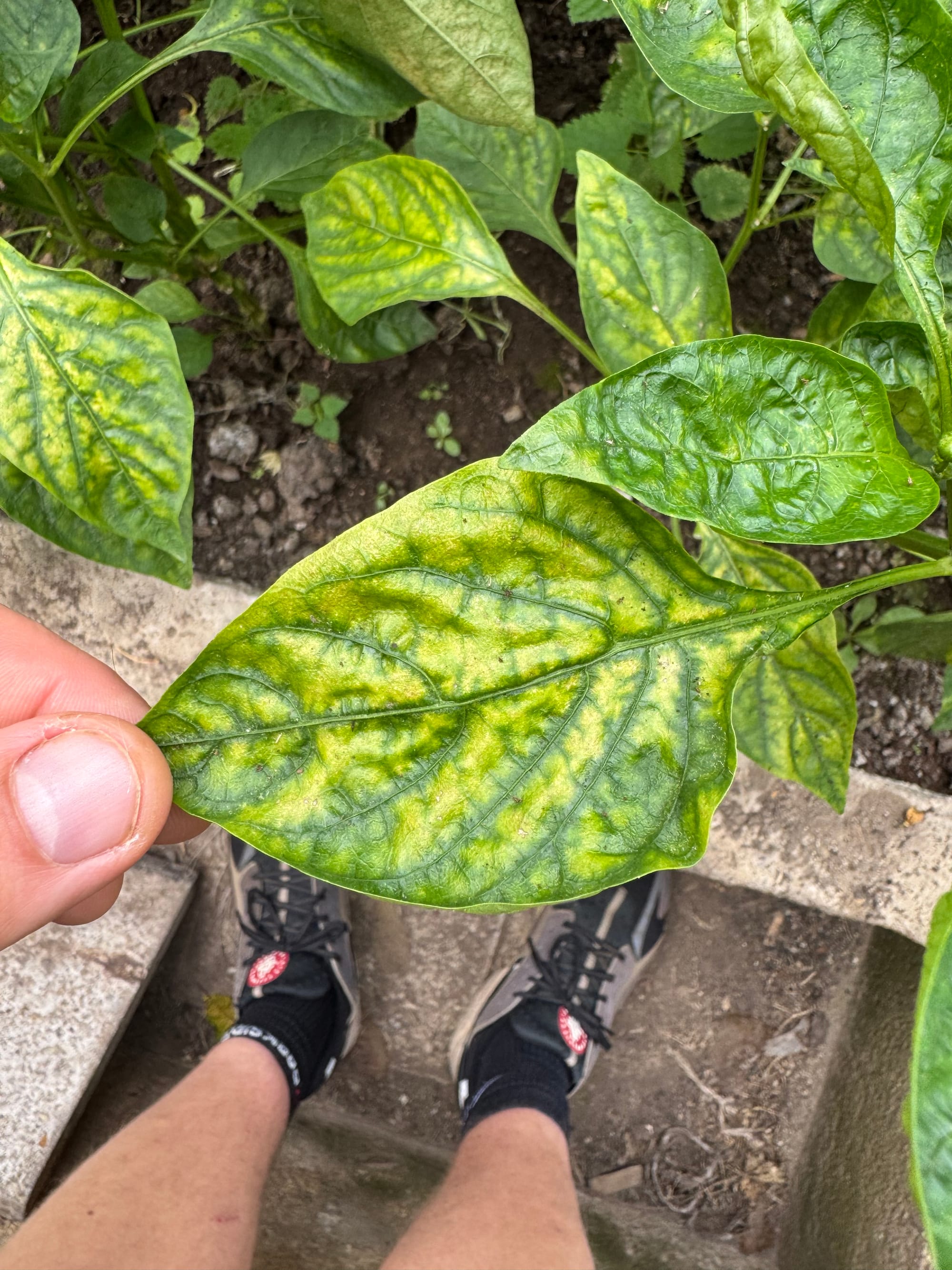

This pattern is called interveinal chlorosis. It’s basically the lack of chlorophyll between the veins of the leaf. There is more than one cause, but this particular one is caused by magnesium. Magnesium is a “mobile” element in the plant,which means that when there is a lack of it, the plant can take some from older leaves and push it into new growth. That’s the difference from iron deficiency, because iron is “immobile” and the plant can’t pull it out. With iron, this pattern shows on newer leaves first.

And what does magnesium even do in the leaf? If we look at the chlorophyll molecule, we can see that the magnesium atom is the central part of it.

So why is magnesium missing from my soil suddenly? To be honest, it’s not as sudden as it might seem. I checked some photos from previous years, and there are signs of magnesium deficiency too, usually later in the season, which is probably the reason I didn’t pay that much attention to it. So what changed this year? There is one thing, the last missing piece of the puzzle, and it only shows how complex gardening is. Magnesium deficiency doesn’t always mean there is no magnesium in the soil; it means there is no magnesium in the plant. And while the soil isn’t exactly rich in magnesium, or any other element that might be missing, the conditions are poor enough that the roots simply won’t absorb it. And what are these poor conditions in my case? It’s the pH.
Ignoring soil acidity for years, dumping kilos of peat mix everywhere, and as a final nail in the coffin, sprinkling everything with Hnojík, which further lowers the pH because it’s so good, led me to this point. A pH of 5.5.
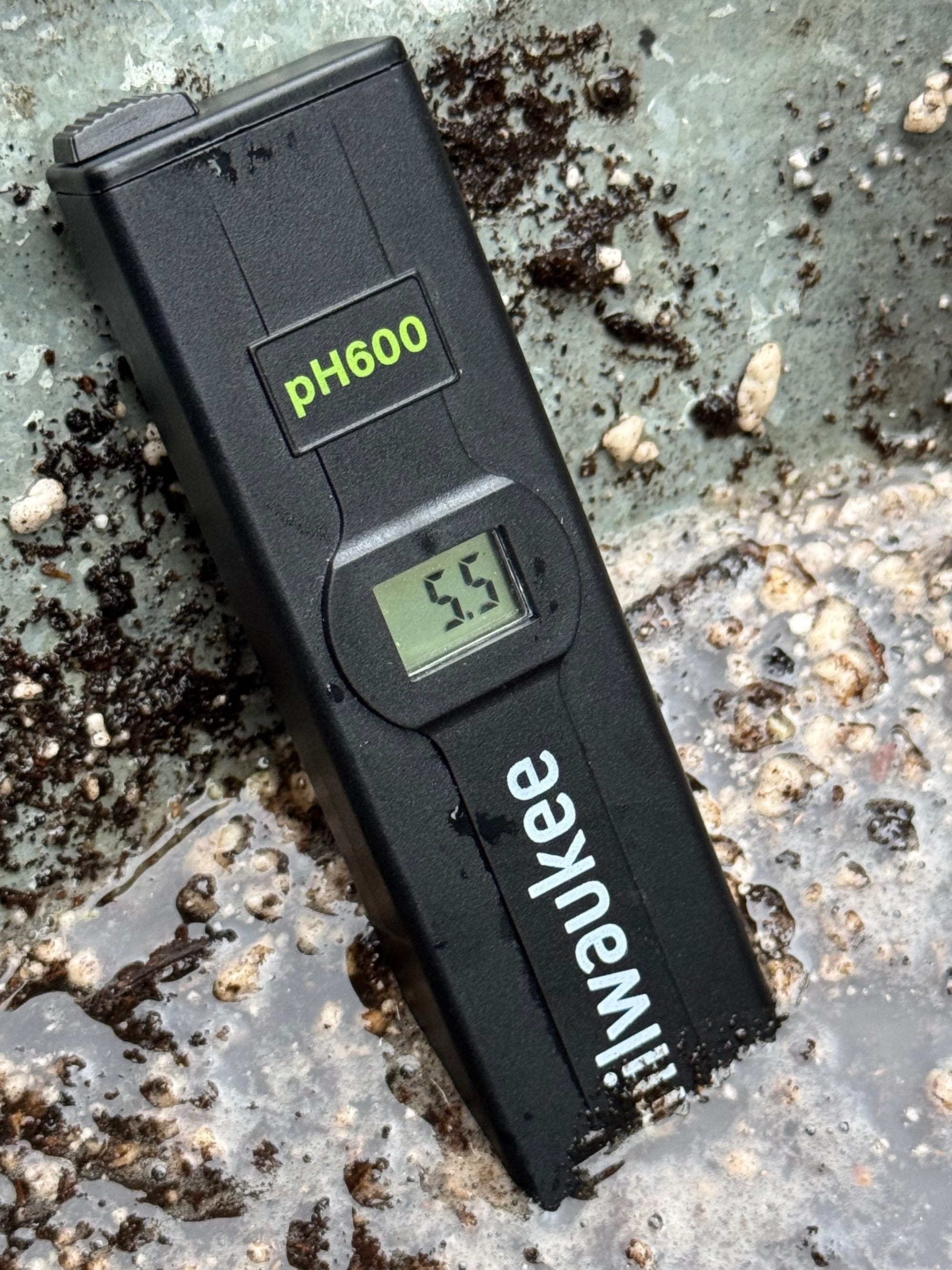
The issue is identified, now it’s time to fix it, right? I bought some arsenal for the battle: Epsom salt, fulvic acid, and more granulated magnesium+calcium combo. The Epsom salt and fulvic acid are for immediate response through foliar feed.This will stop the chlorosis, and it’s even possible to re‑green damaged leaves, because magnesium is a mobile element and can return. Fulvic acid helps with nutrient uptake and makes them more available to the roots.
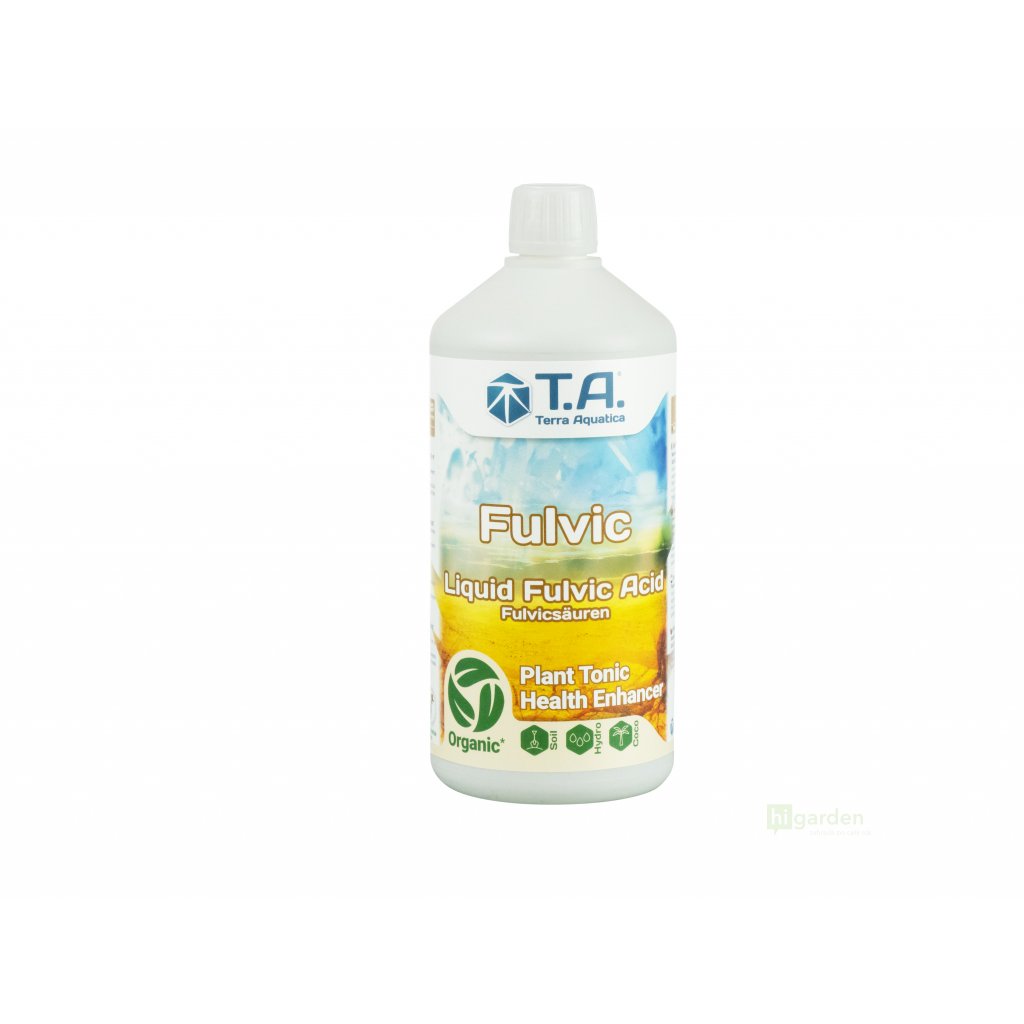
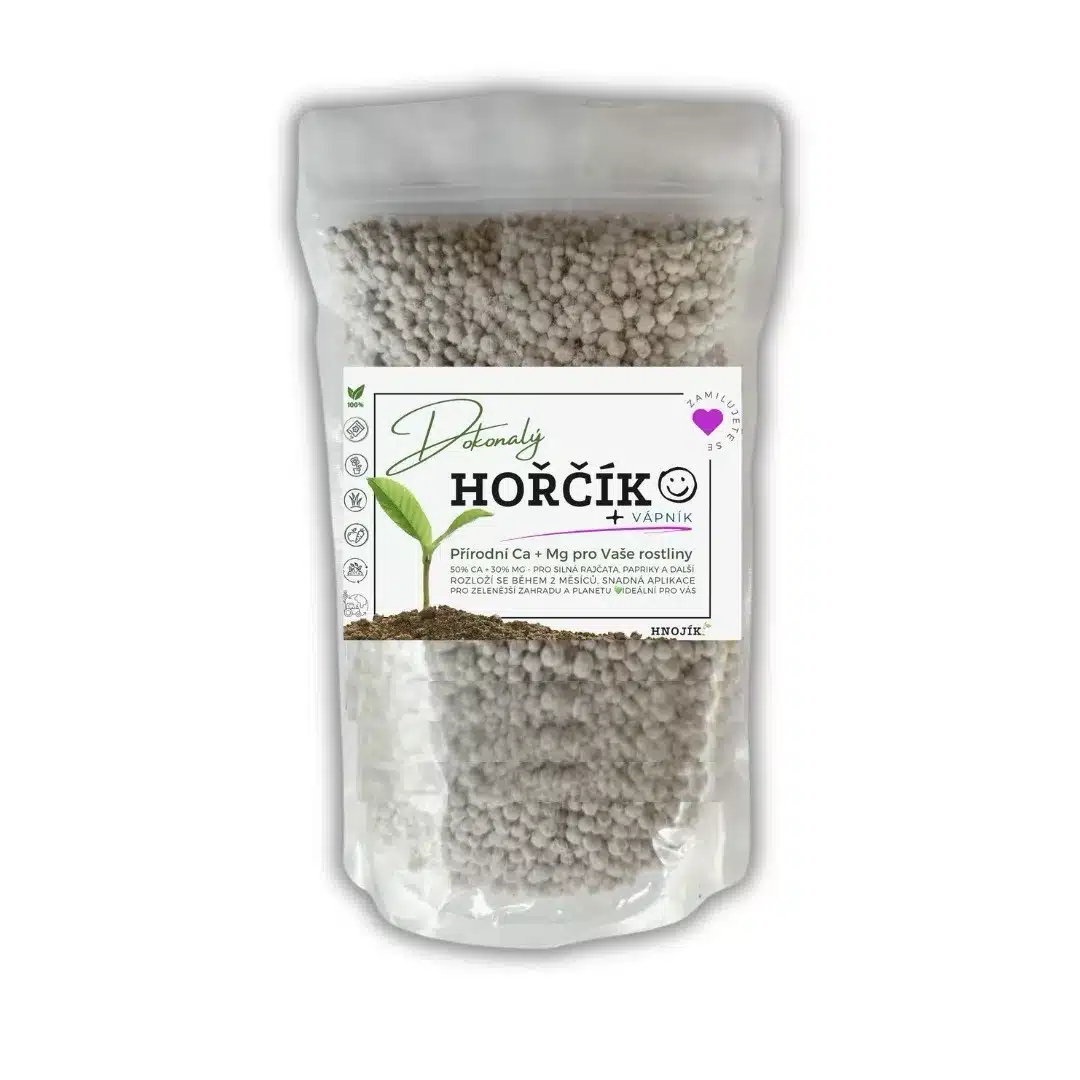
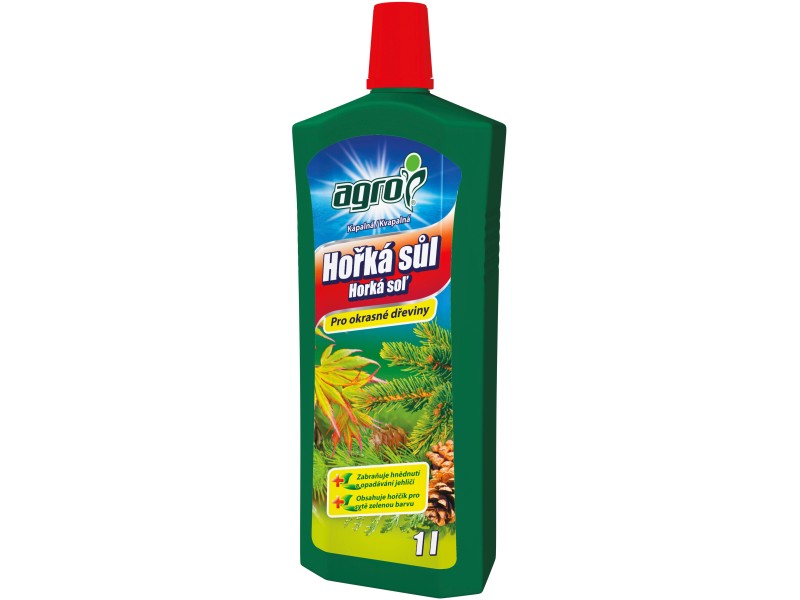
This combination, together with the long‑term solution in the form of granulate, should fix the issue for this season and give me some time to figure out what to do this fall to fix it permanently. It might also be worth noting that I’m not the only one struggling with magnesium deficiency this year. Neighbors and even people in different parts of the country are reporting similar issues. I can even observe similar deficiency in weeds and nettles. However, it’s still something I should have known, properly diagnosed earlier, and fixed earlier. Ironically, I amended my tomato mix with the granulate back in May. As already mentioned, tomatoes are very calcium‑hungry, and that saved them, because the calcium is in the form of calcium carbonate, which naturally raises soil pH.
the payback
Peppers and tomatoes are naturally tolerant of some nutrient‑related abuse and recover faster than my bank account after payday. Cucurbits, on the other hand, are prima donnas of the plant world. Temperature dips for a second? Mild wind gust? And they break down. For this reason, a cucumber is often grown near tomatoes as an indicator plant.
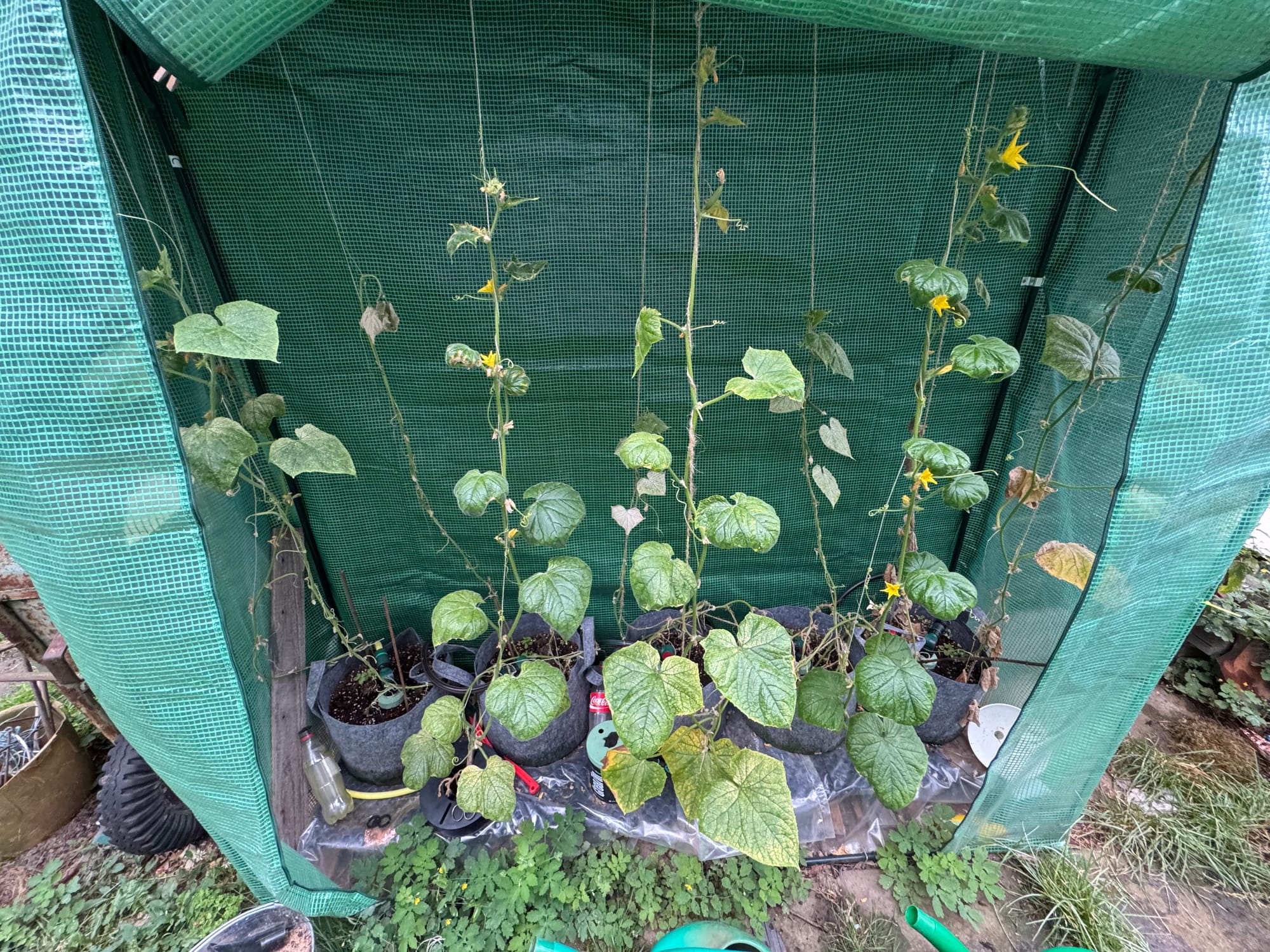
Well, let’s say that my salad cucumbers were like the grilled chicken indicator on your car’s dashboard. They are surviving, but barely, and it’s too late for them anyway. The end is nigh. Even with all that malnutrition and abuse, they pushed some nice foliage and fruit. I’m actually quite surprised.
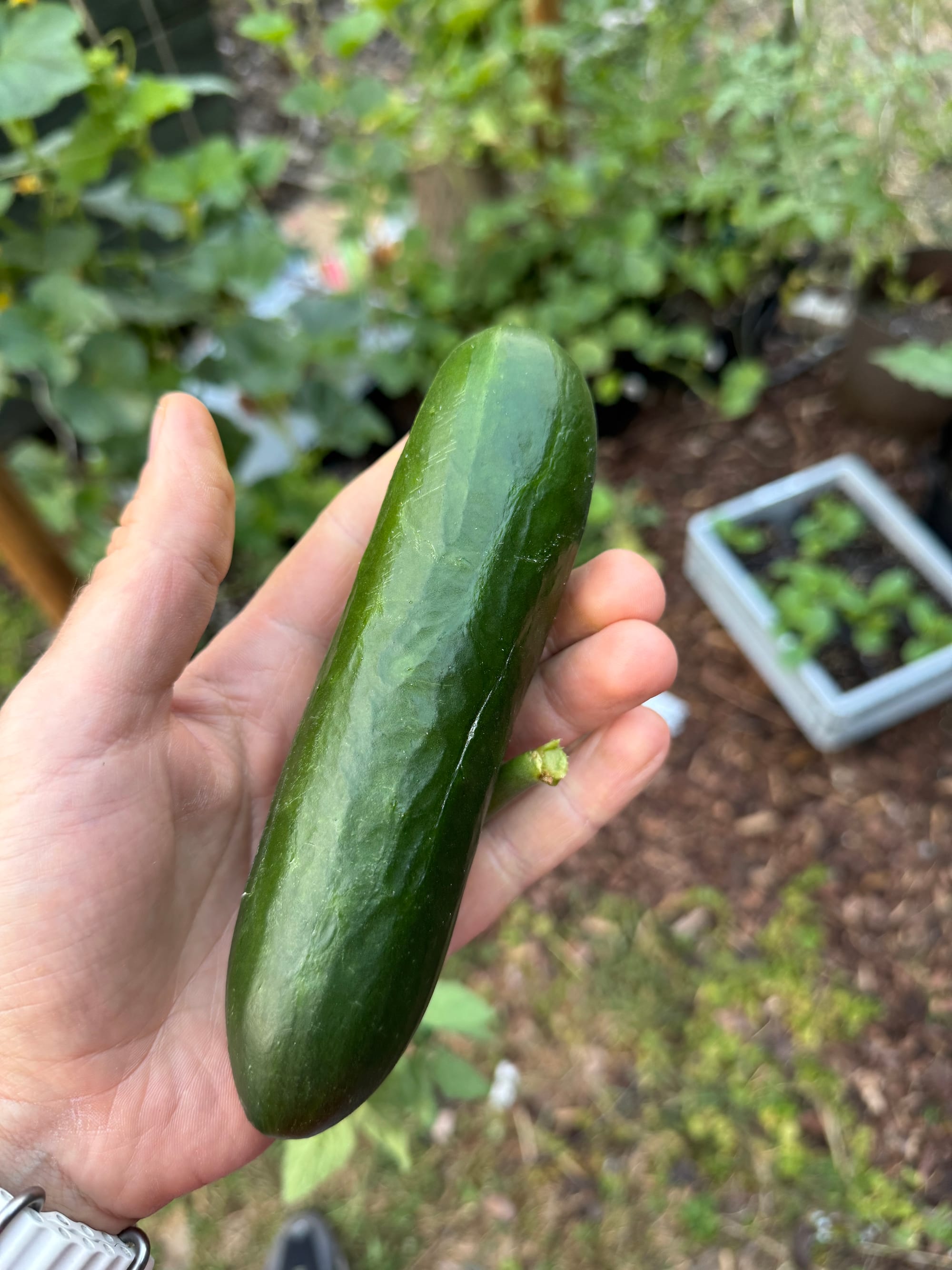
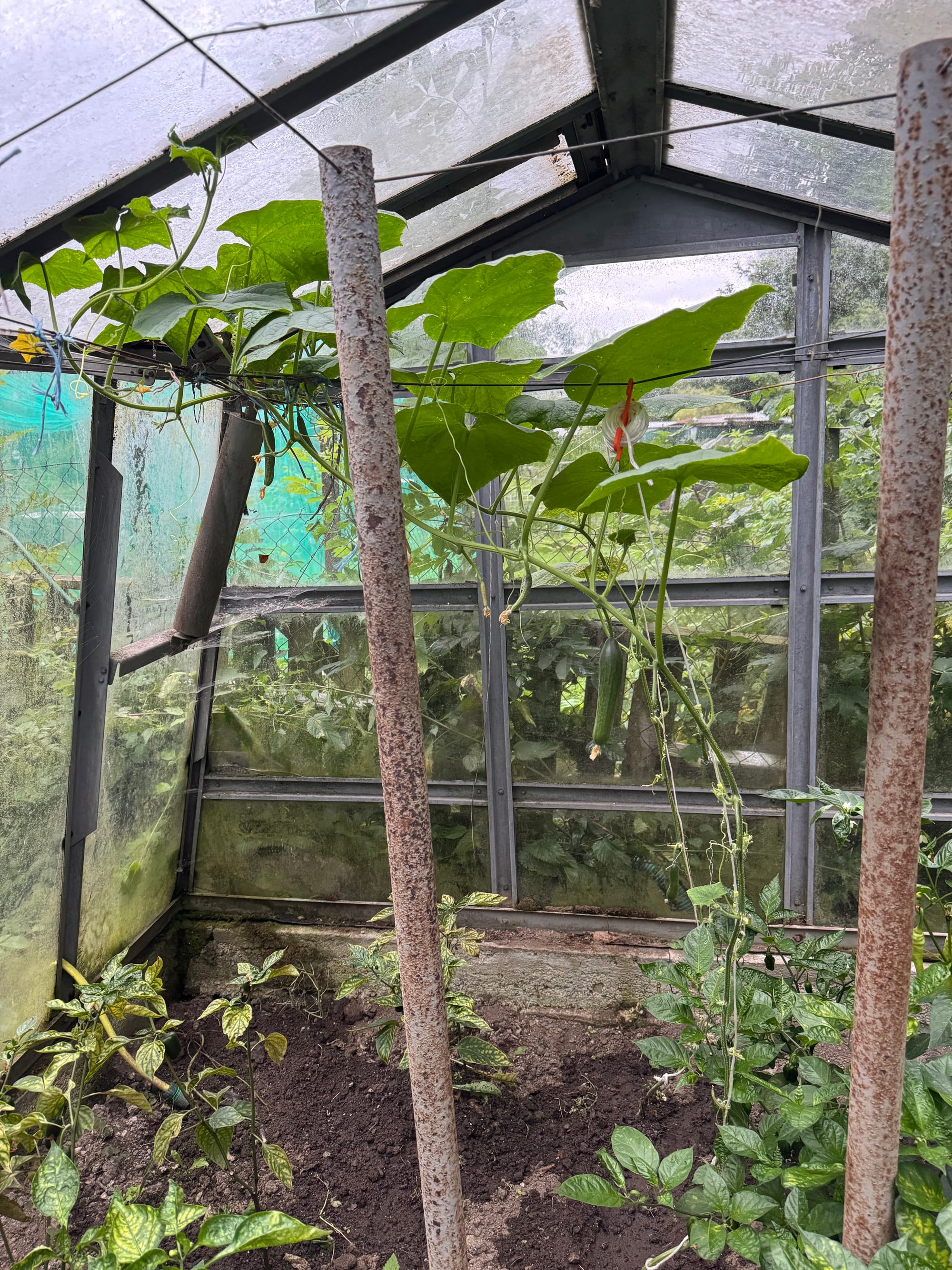
There is no time for mourning. I decided to make one last shot and go all in. The cucumber I’m growing in the Kratky Euro crate is thriving. It’s lush, produces a lot of fruit, and grows very quickly. The root mass is beautiful. The bubbler helps a lot, and the roots are spreading toward the air stone.
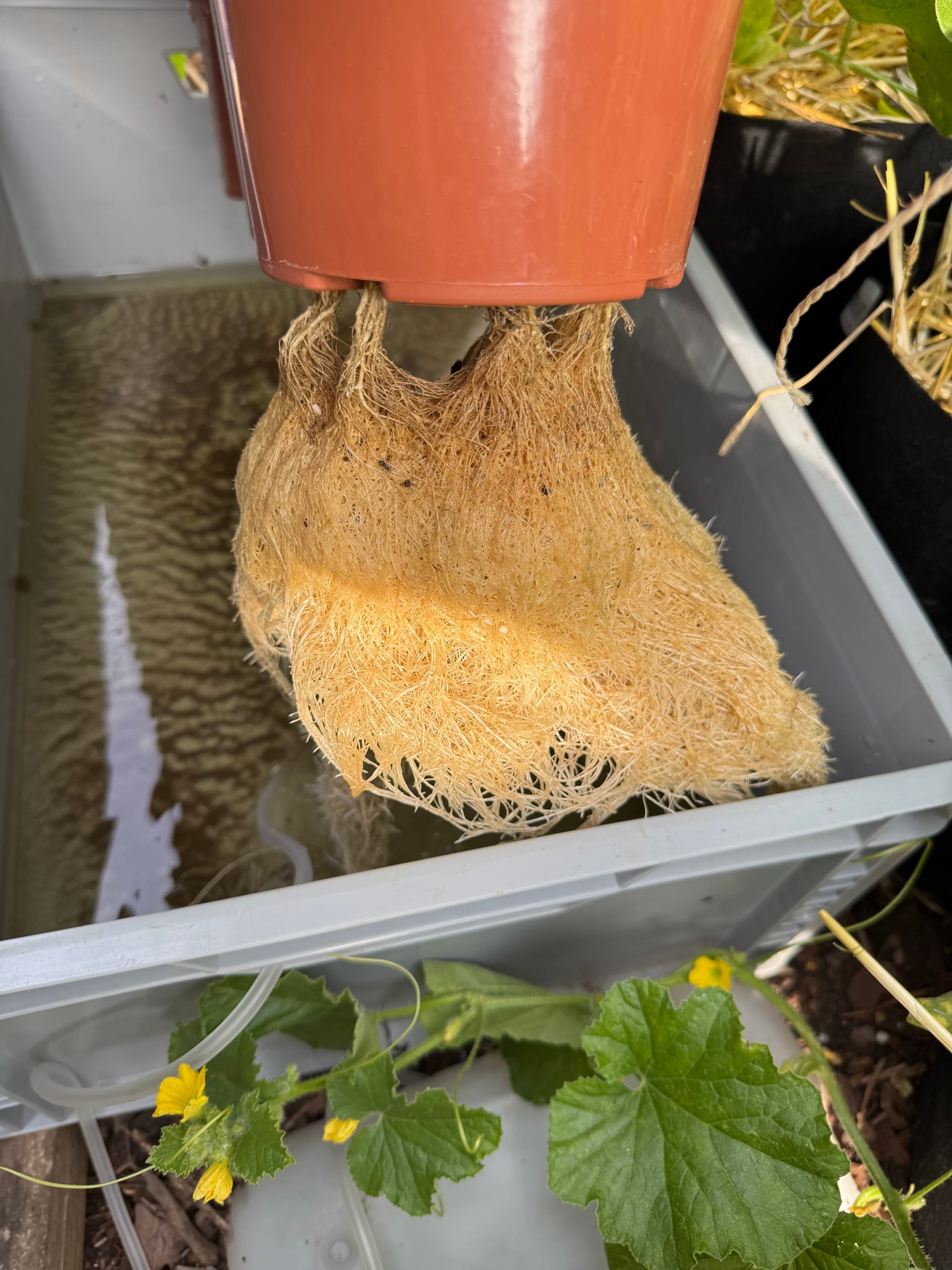
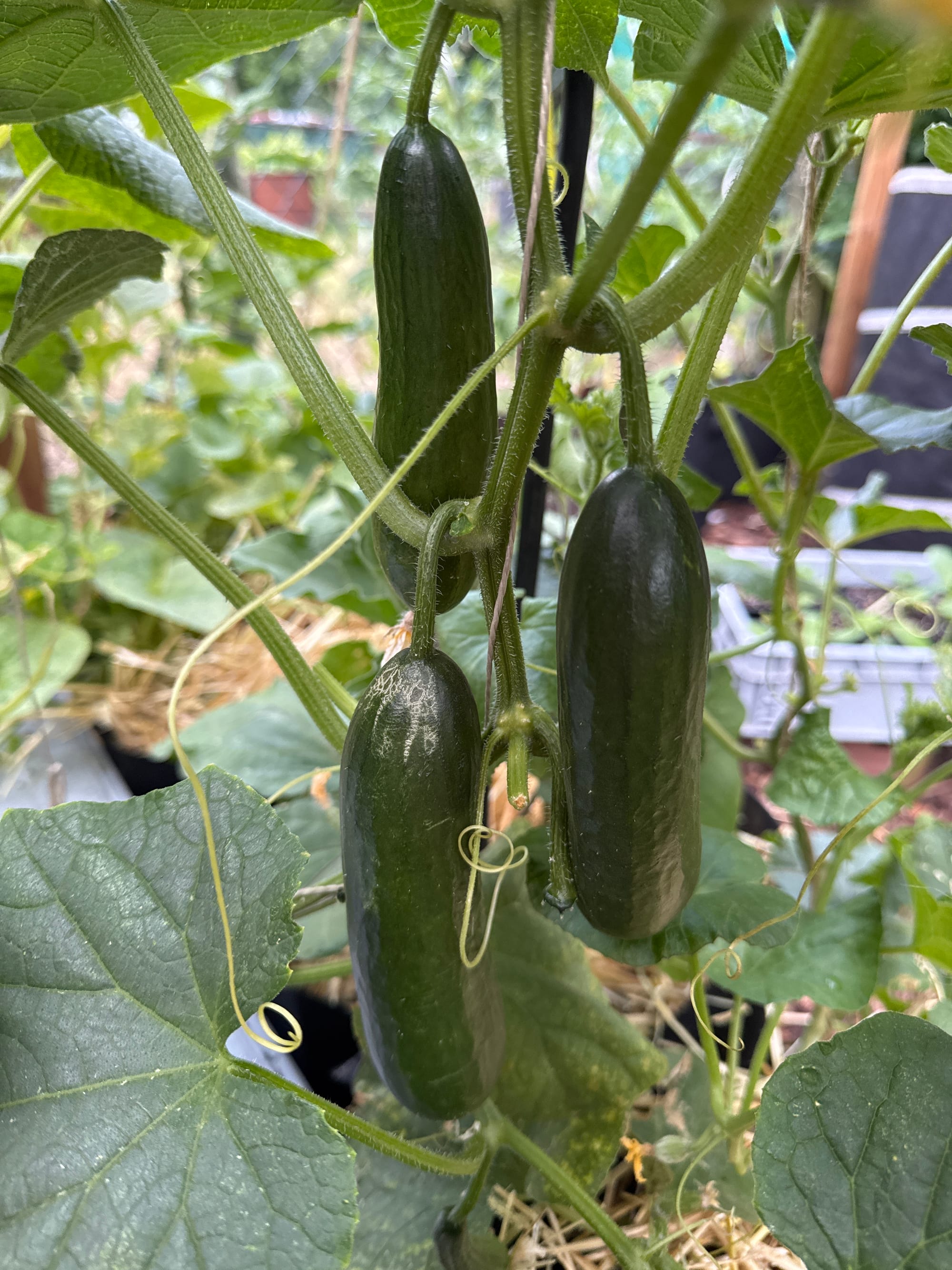
Looking at this development, I made an executive decision: I’m going to grow Kratky salad cucumbers this year. They usually need around 50–70 days from seed to produce, but I plan to speed them up and squeeze it into 40–60 days. Or less. While at it, I used two zucchini plants as a test run.
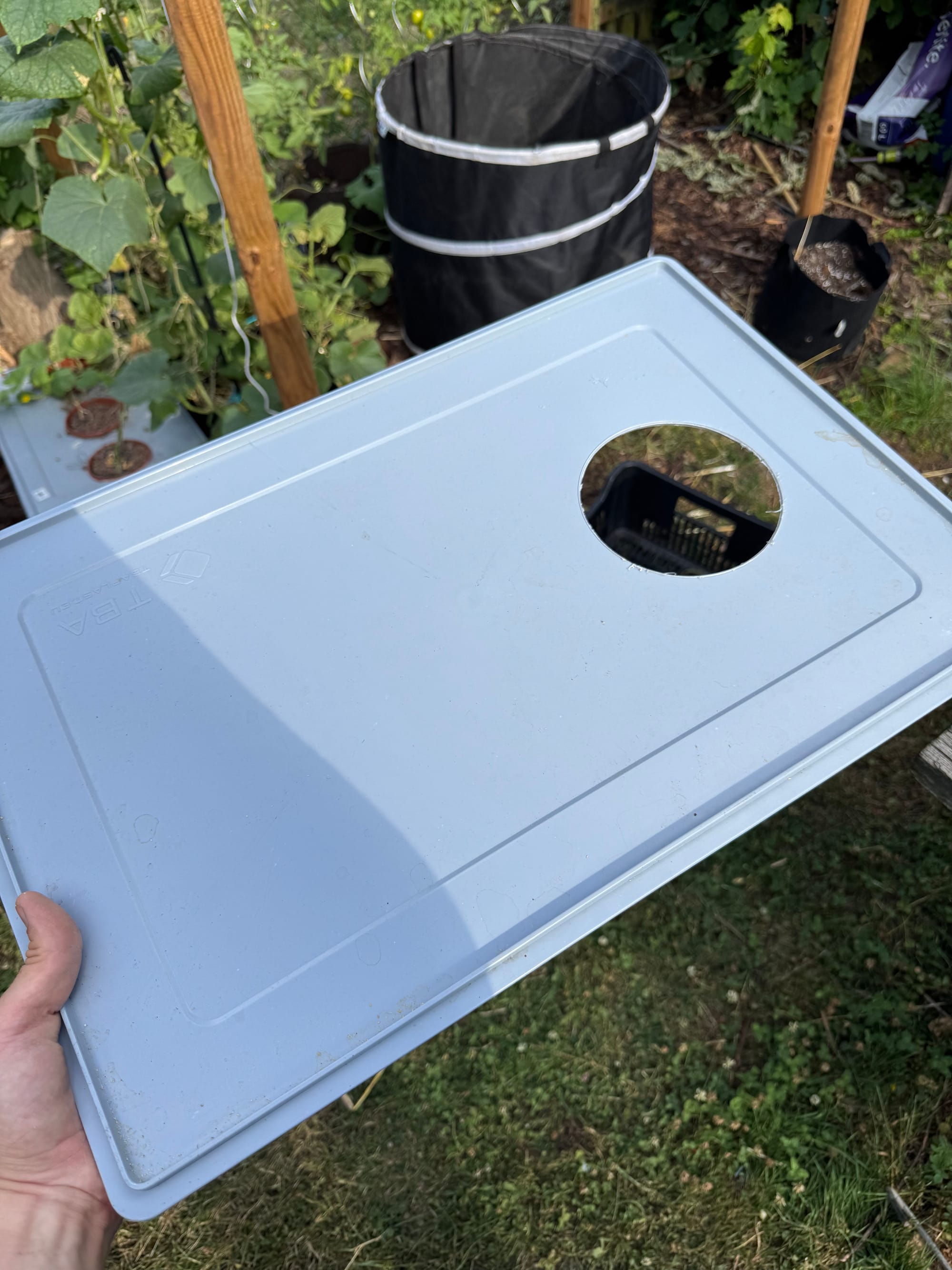
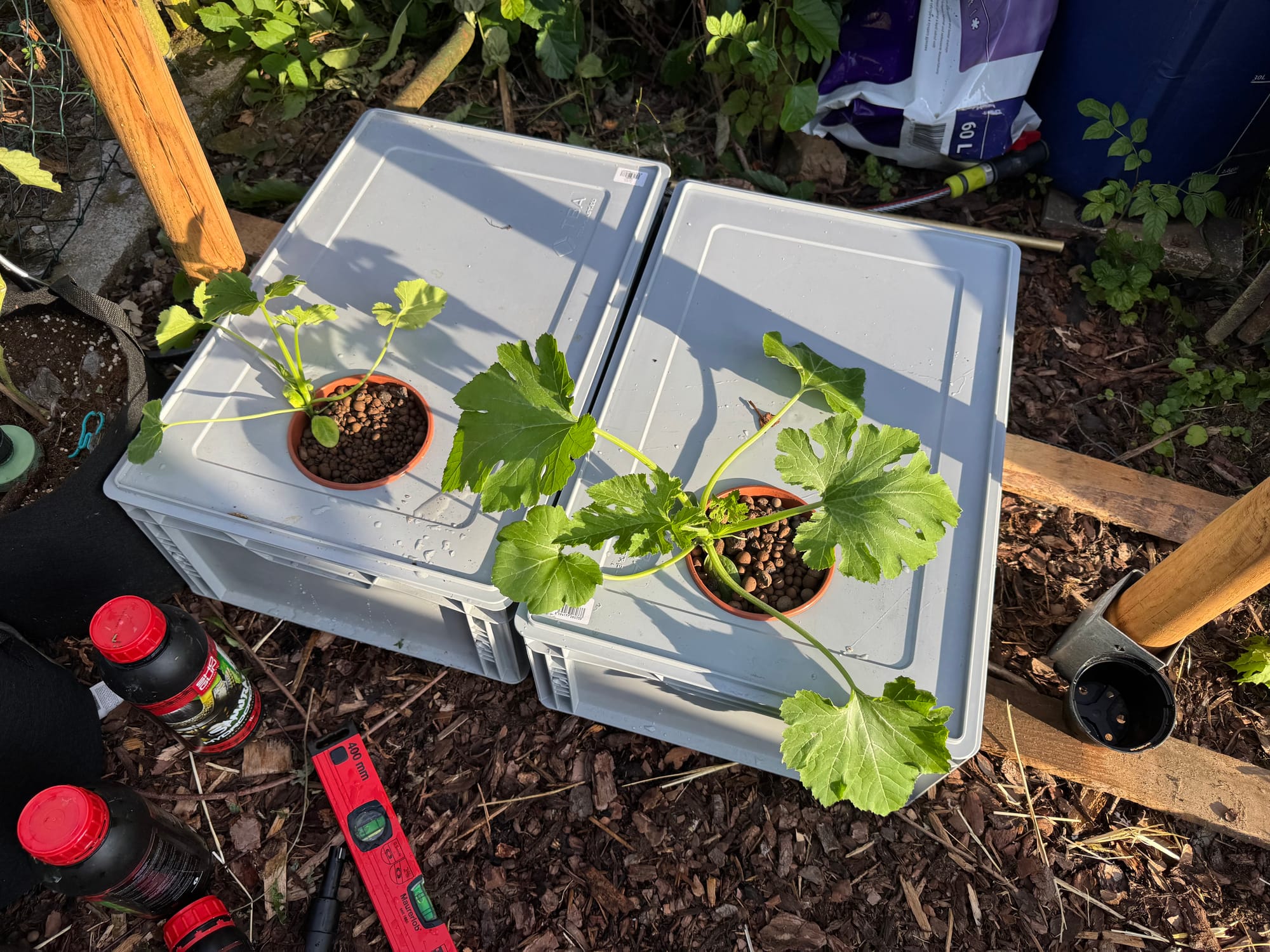
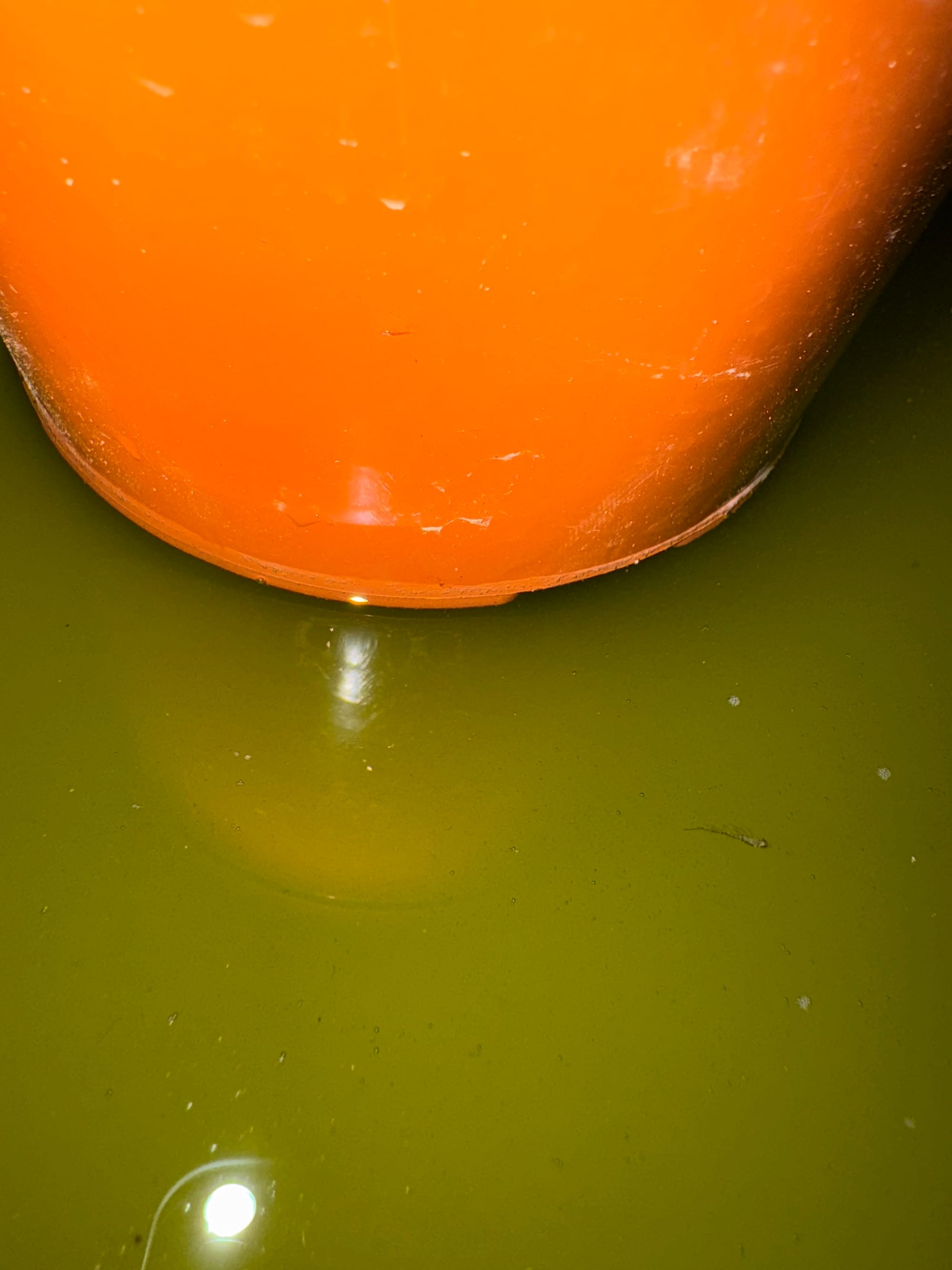
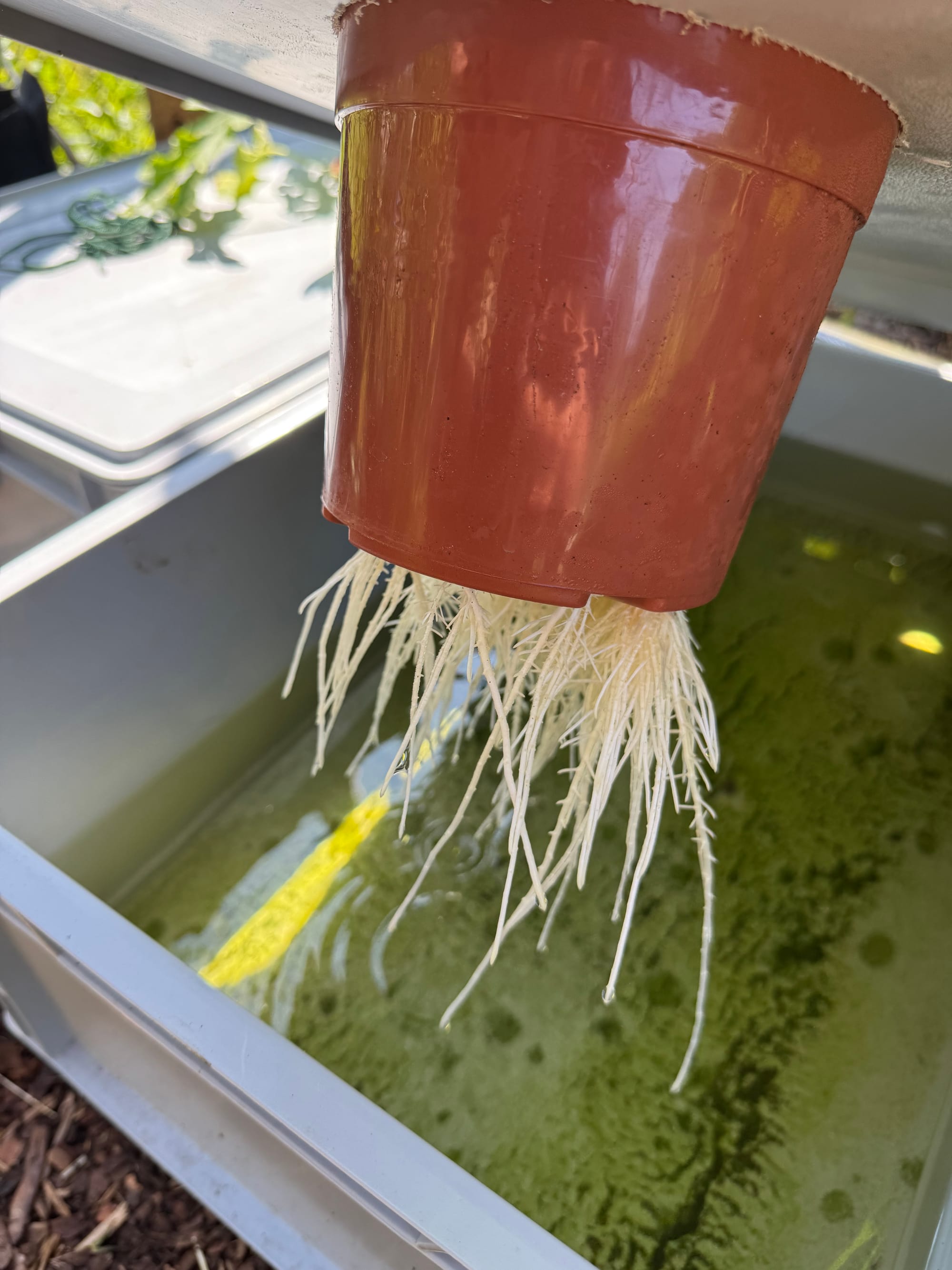
I used ~30 Persika seeds, soaked them in Clonex Start, and about three days later had successful germination. I selected 24 of the best‑looking sprouts and transplanted them into 12 coco pellets directly into a KUGGIS propagator. We are counting days in here. It took only a week from seed to first true leaves and some nice white roots.
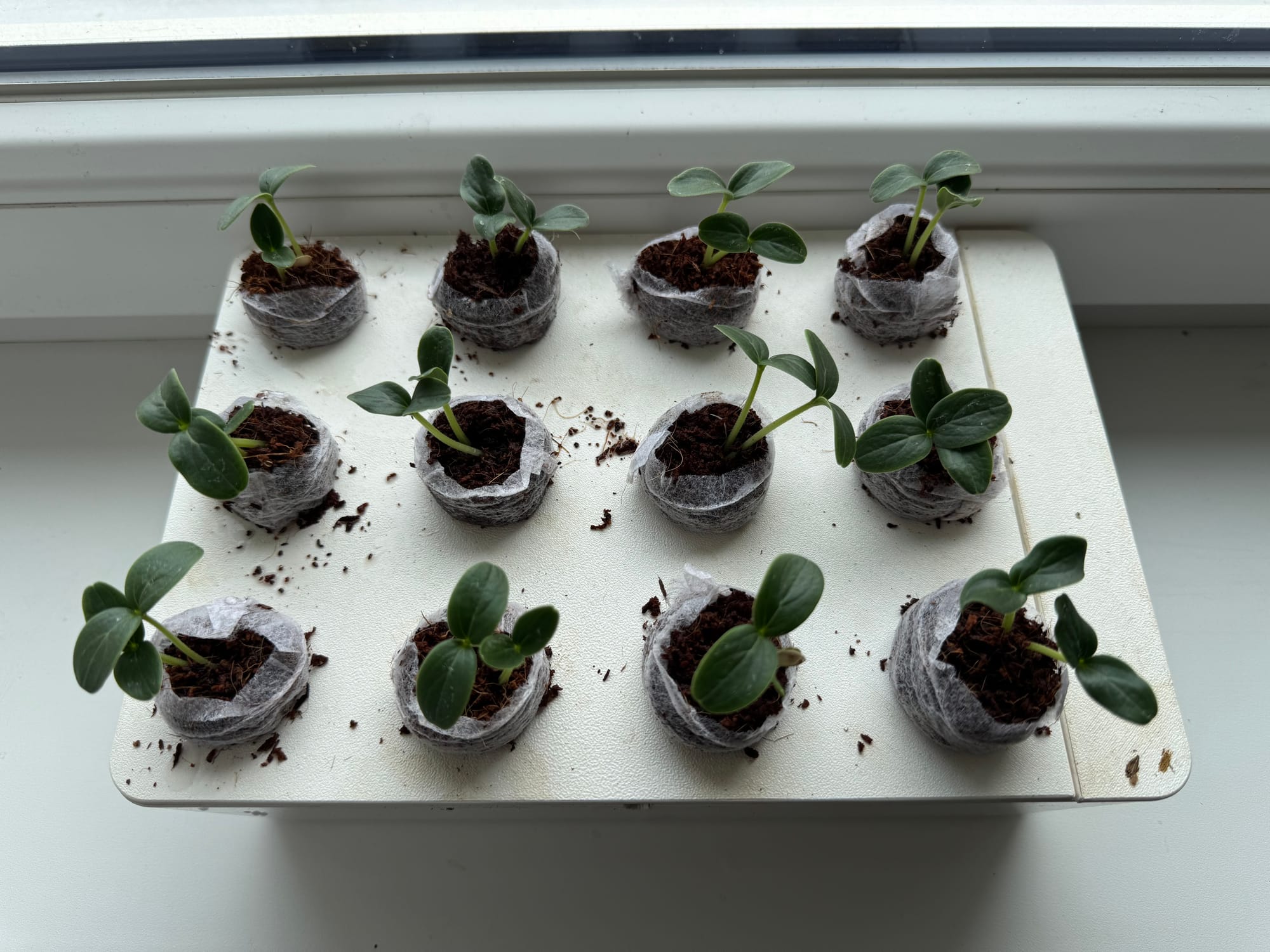
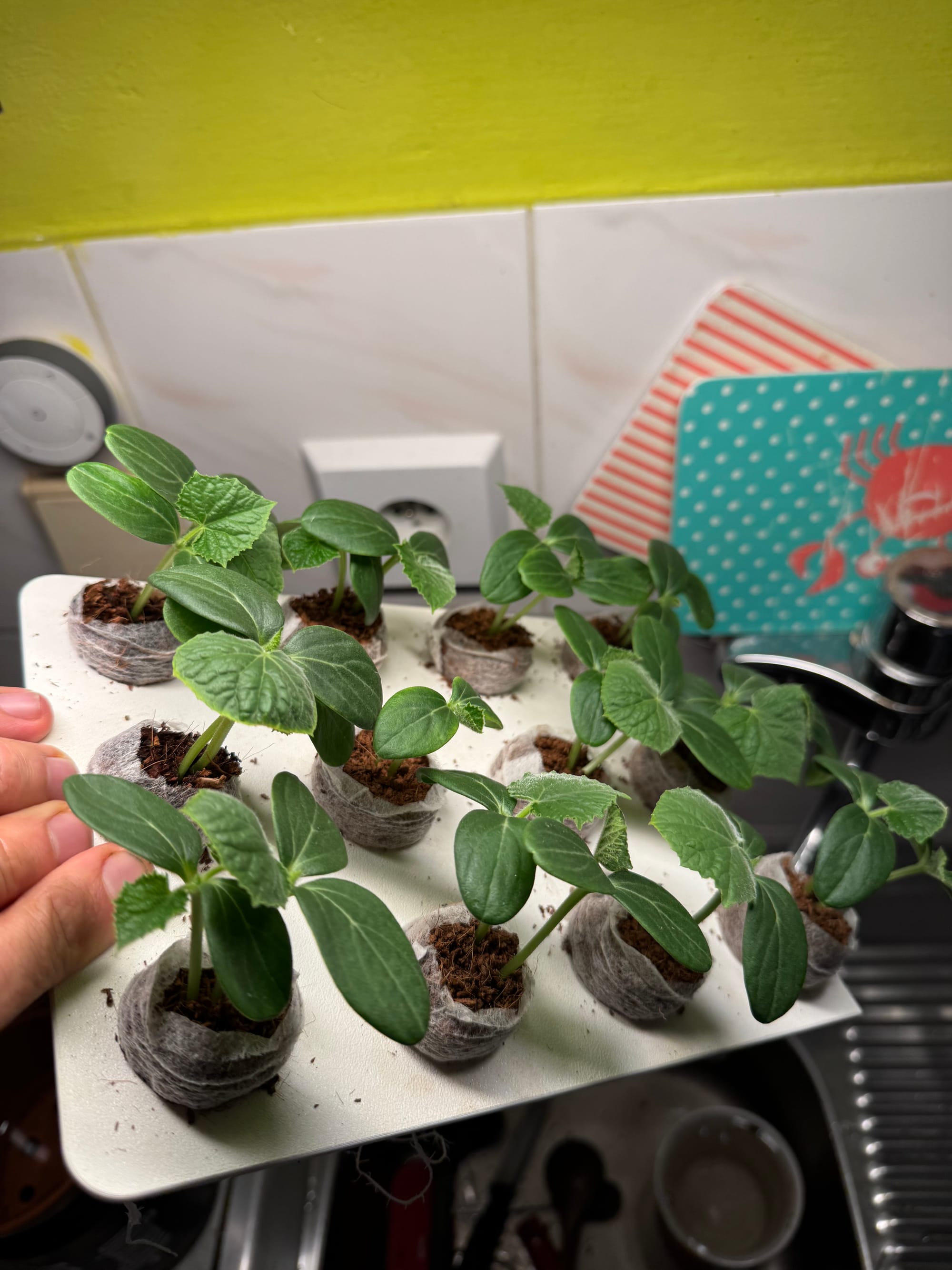
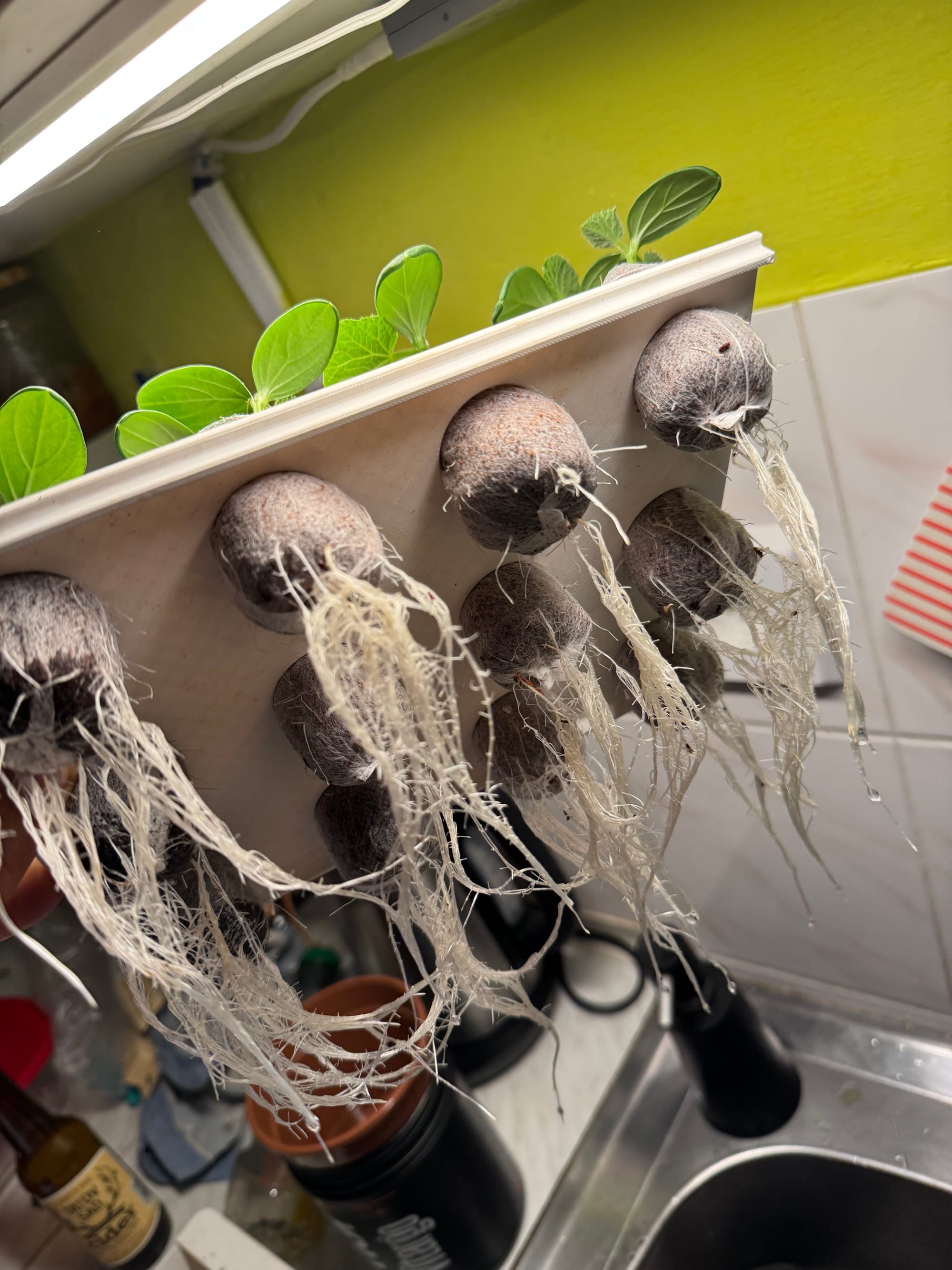
Checking the nutrient solution of the existing Kratky setup, I noticed a pretty strong EC creep. My target for cucumbers was 1.8–2.0 EC, but checking occasionally, it went all the way up to 2.6. While cucumbers should survive, it’s a littleoutside of my comfort zone. I knew this was unacceptable for the ones I was propagating and decided to use Terra Aquatica TriPart. From my experience, it keeps EC stable and creeps very slowly. Consulting the internet confirmed this: Shogun Hydro fertilizers work best in recirculating systems, while mine is non‑recirculating.
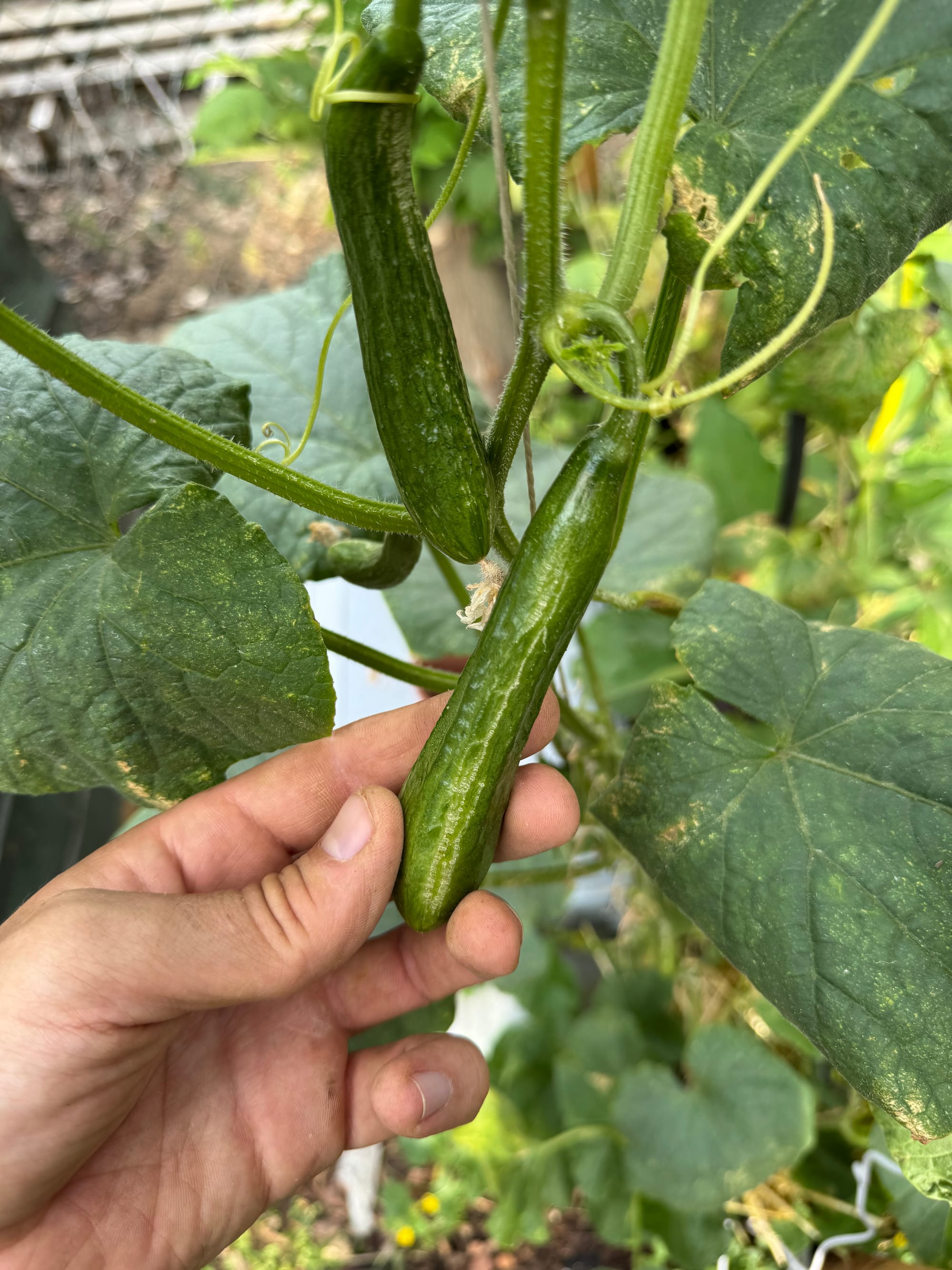
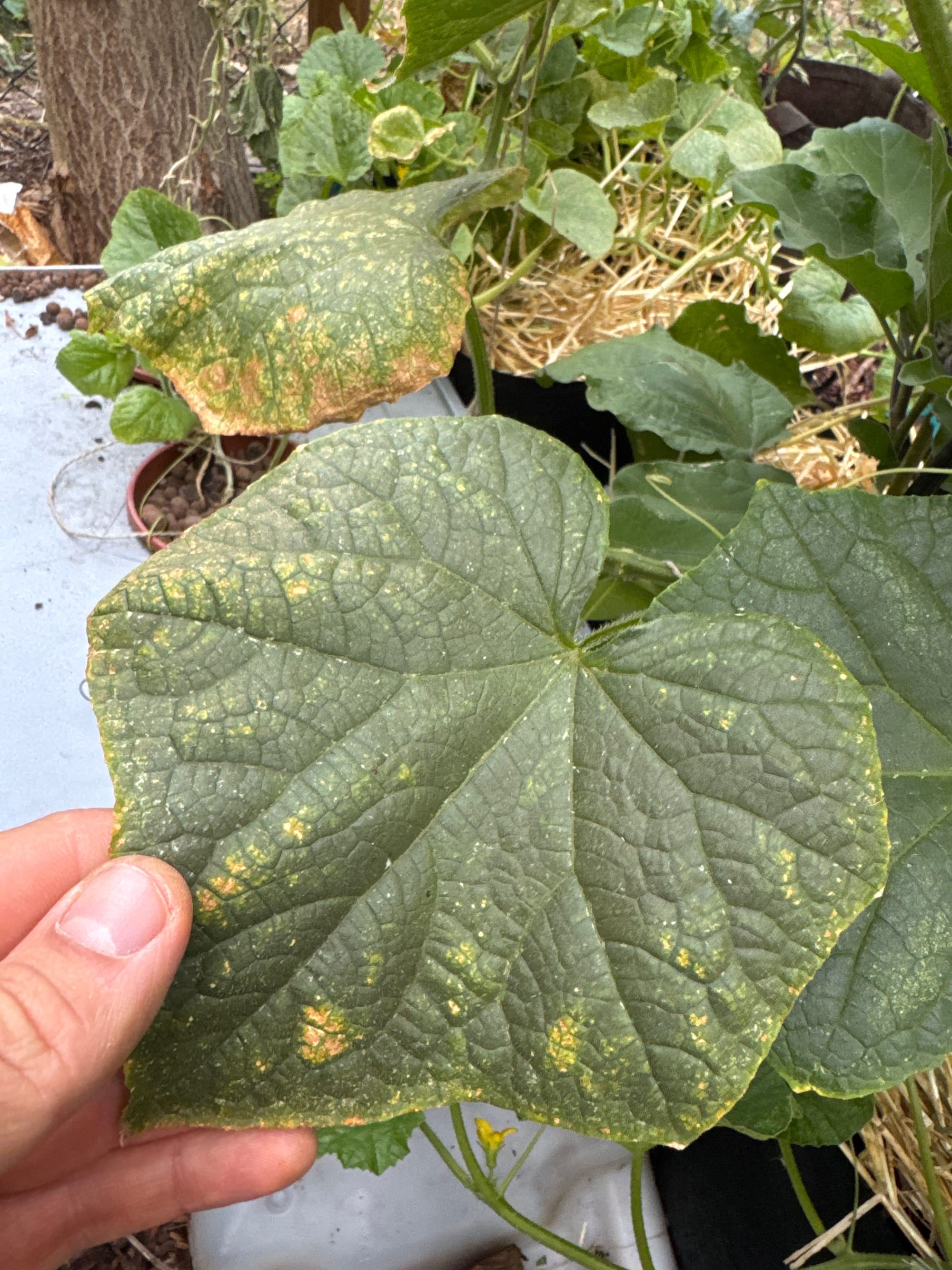
The high EC leads to some stress marks. Like corking and "rusting" leaves because of the salt accumulation.
The cucumbers are currently chilling in the final propagation stage inside a grow box. I’m waiting for the first week of August, when the weather gets milder, to give them the best chance to survive. Three of them will grow in the euro crate system similar to the zucchini setup, and two will replace the dying cucumbers in 40L painters’ buckets.
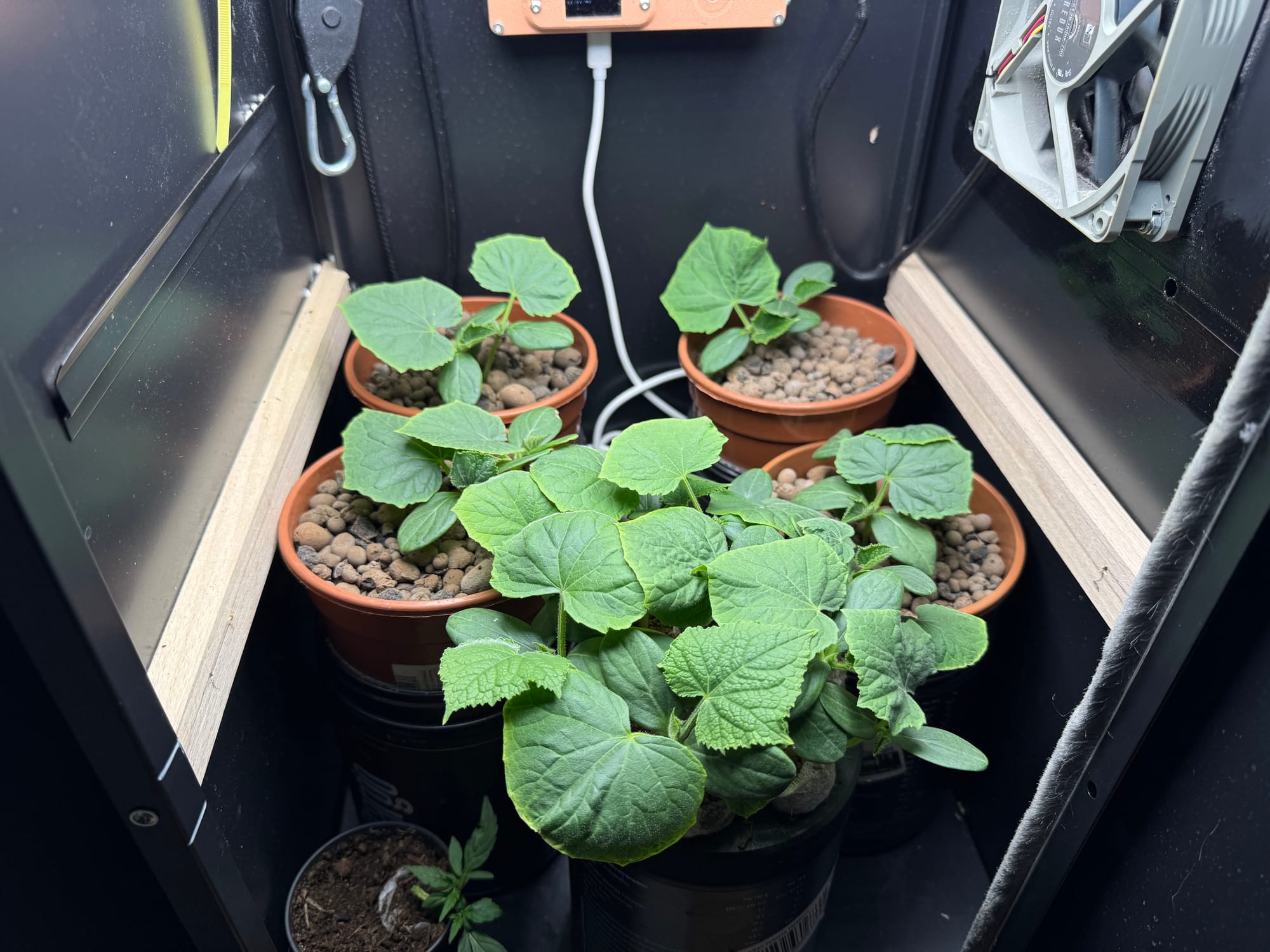
the exotic exception
Measuring and figuring out the soil issue, I suspect it’s the reason my melons were always on the verge of dying, producing only one fruit per season. But I have some minor success with the cantaloupe. I have fruits. Plural.
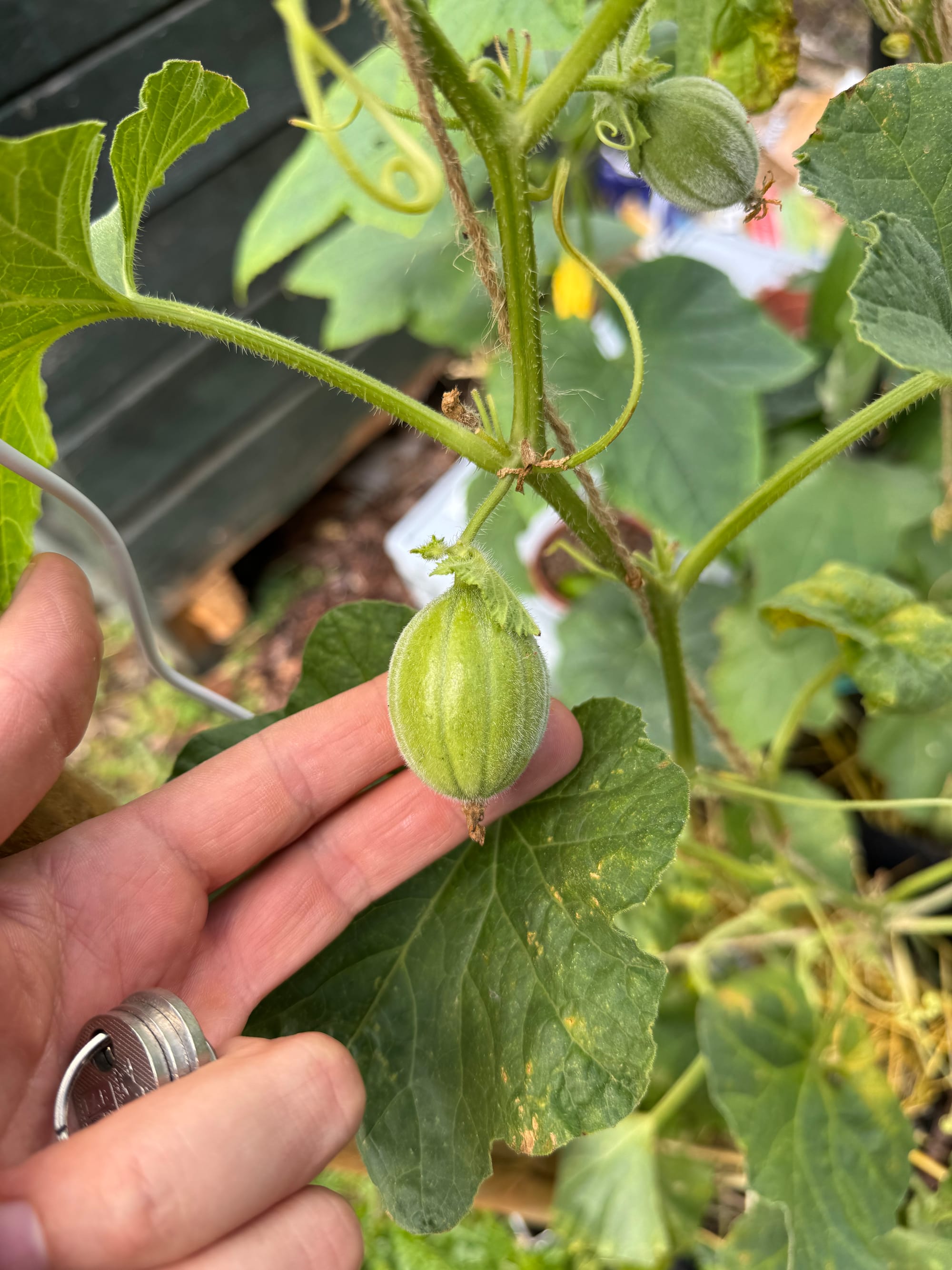
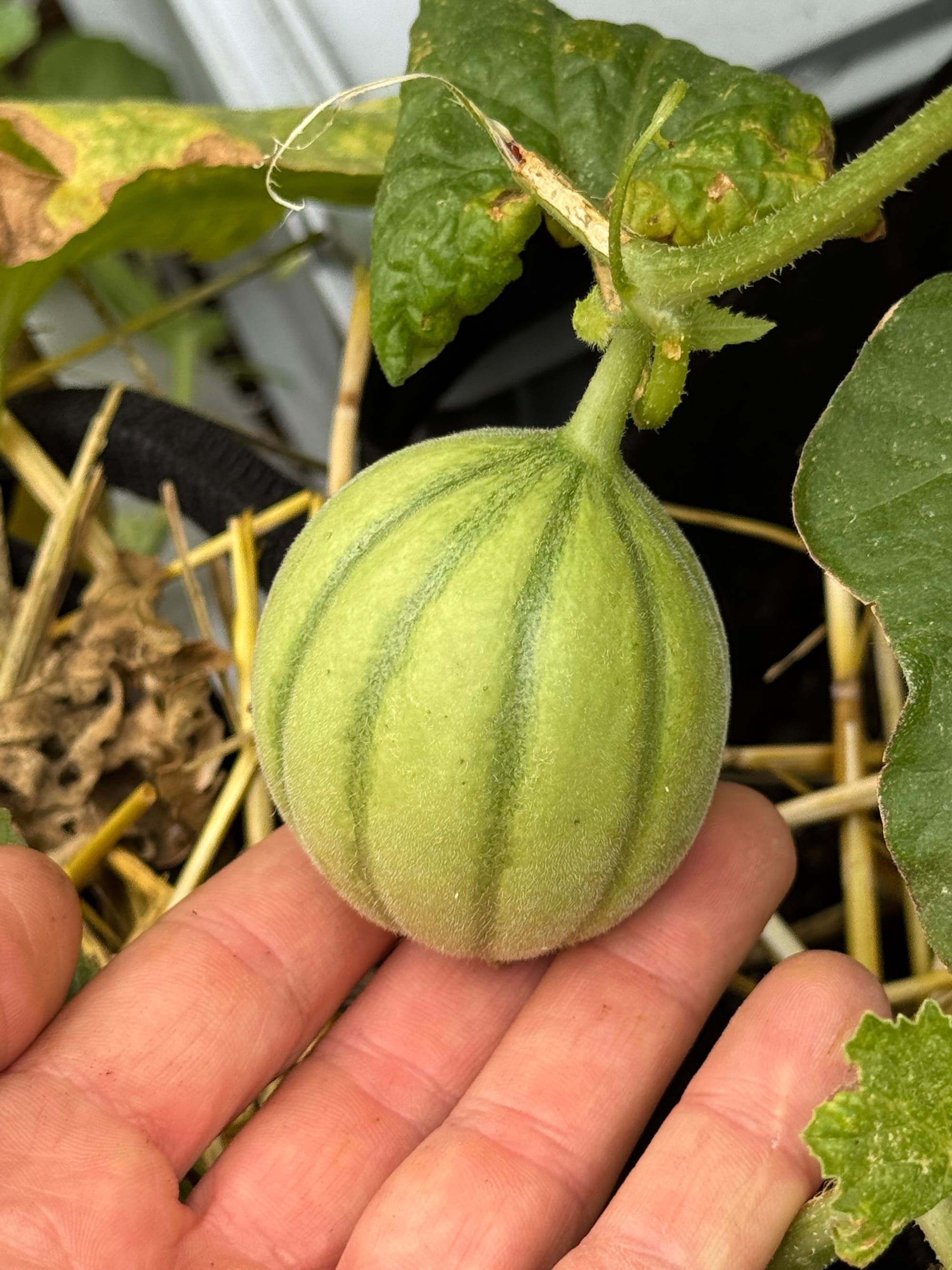
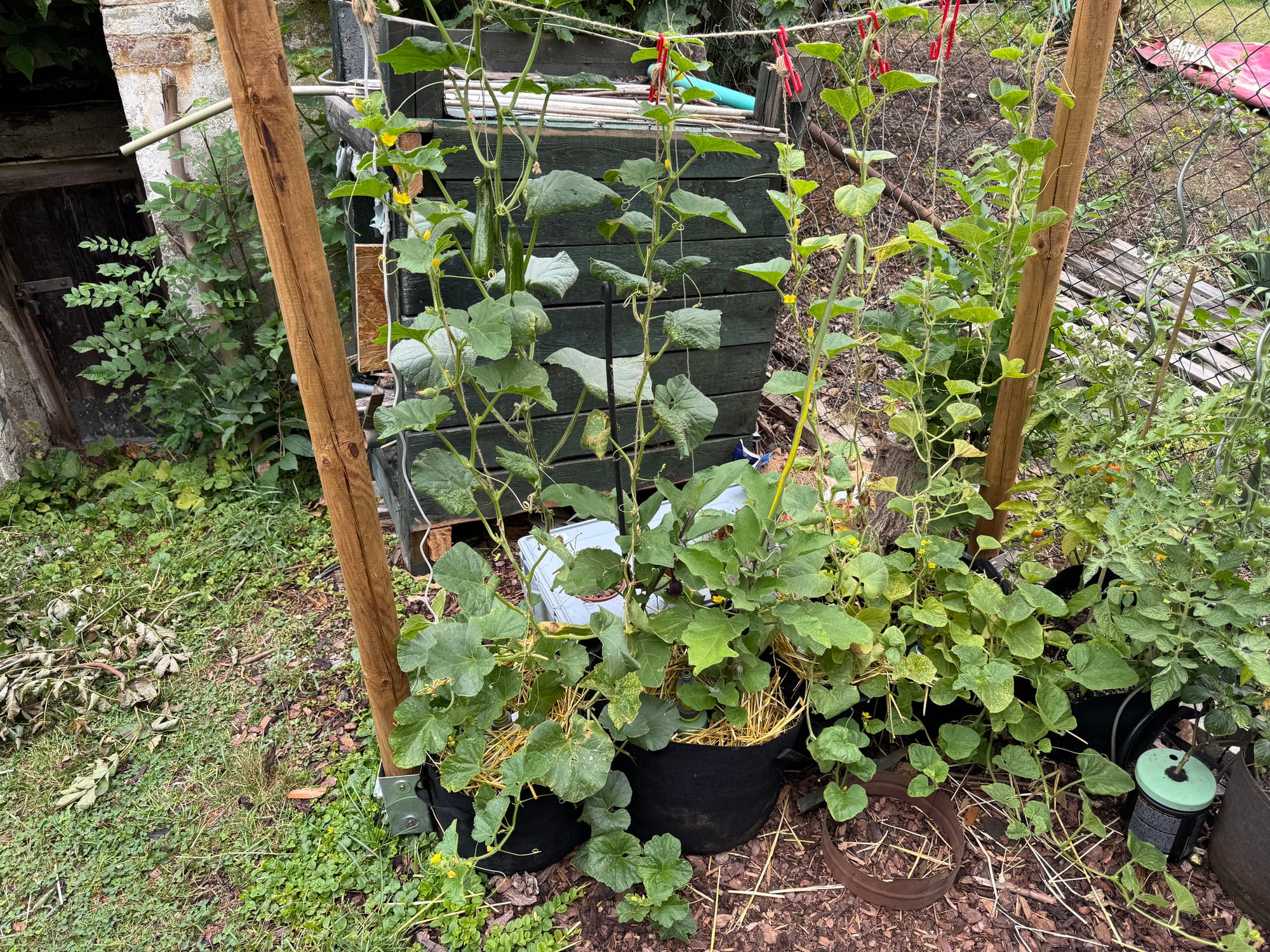
You might notice some scorched leaves in the photo. That’s yet another mistake I made. I was mixing some weak hydroponic solutions, but then I had to leave for a while. When I came back, I totally forgot that the can was full of liquid fertilizer, watered them, and understandably, burned them a little bit. I tried to wash it out as much as possible, but the damage was already done. Thankfully, it doesn’t affect fruit development and new growth.
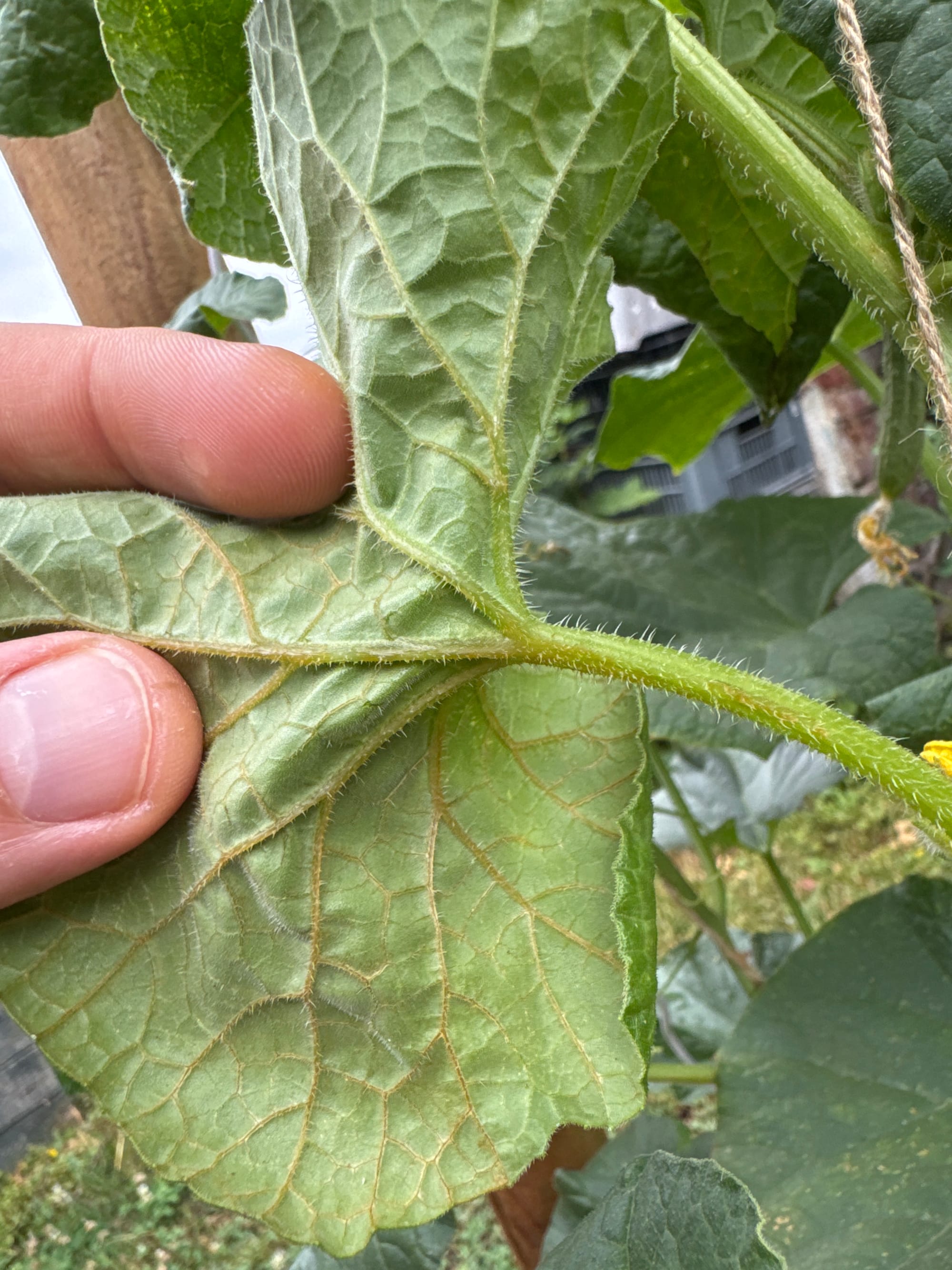
While the Banana melons in bags are just holding up, the random Banana melon I threw into my banana mold is quickly colonizing everything around. There are so many female flowers and little melons. It’s beautiful and slightly infuriating, but if it means I’ll have more melons, I won’t complain. I’ll just adjust my strategy next year.
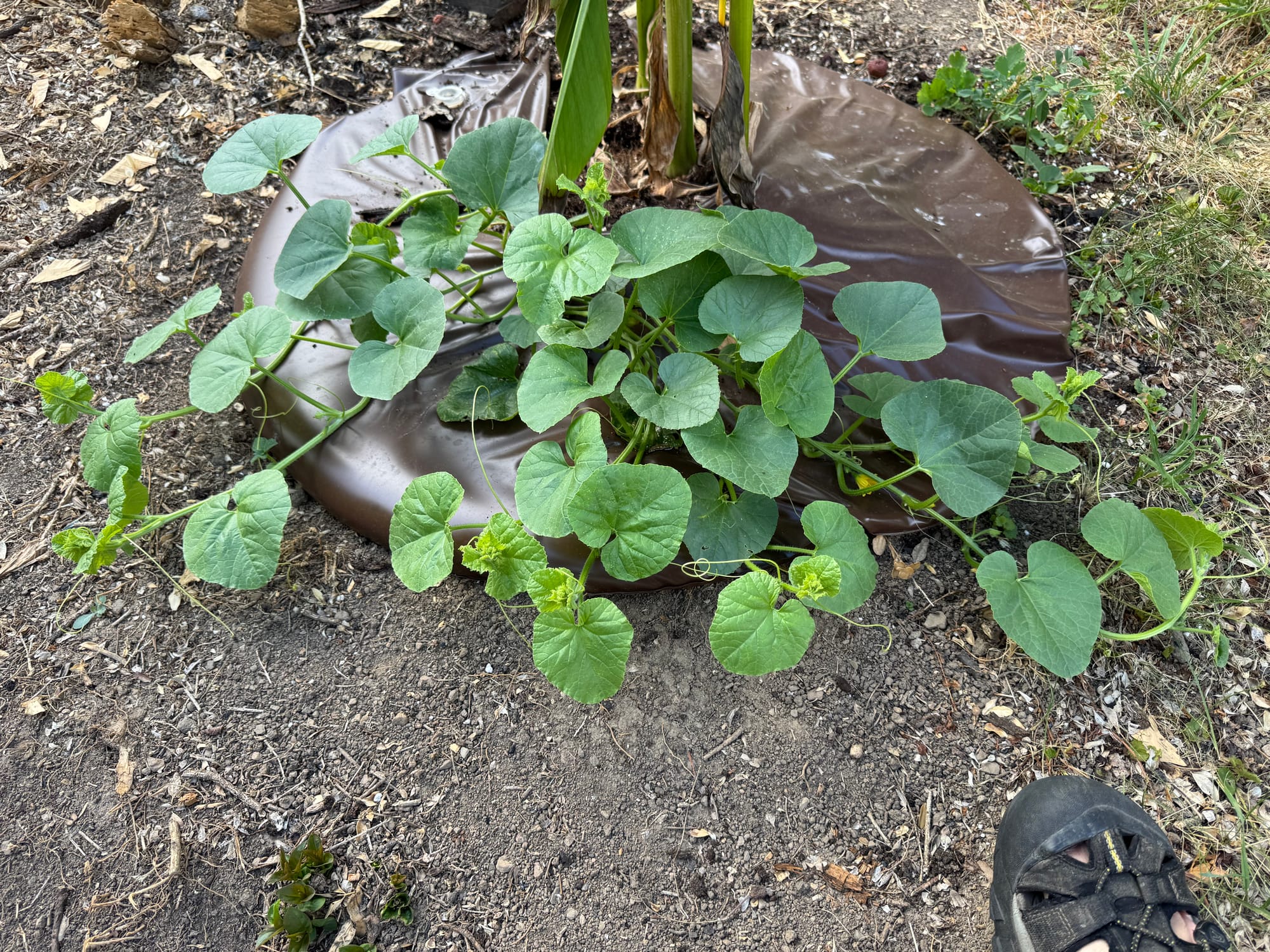
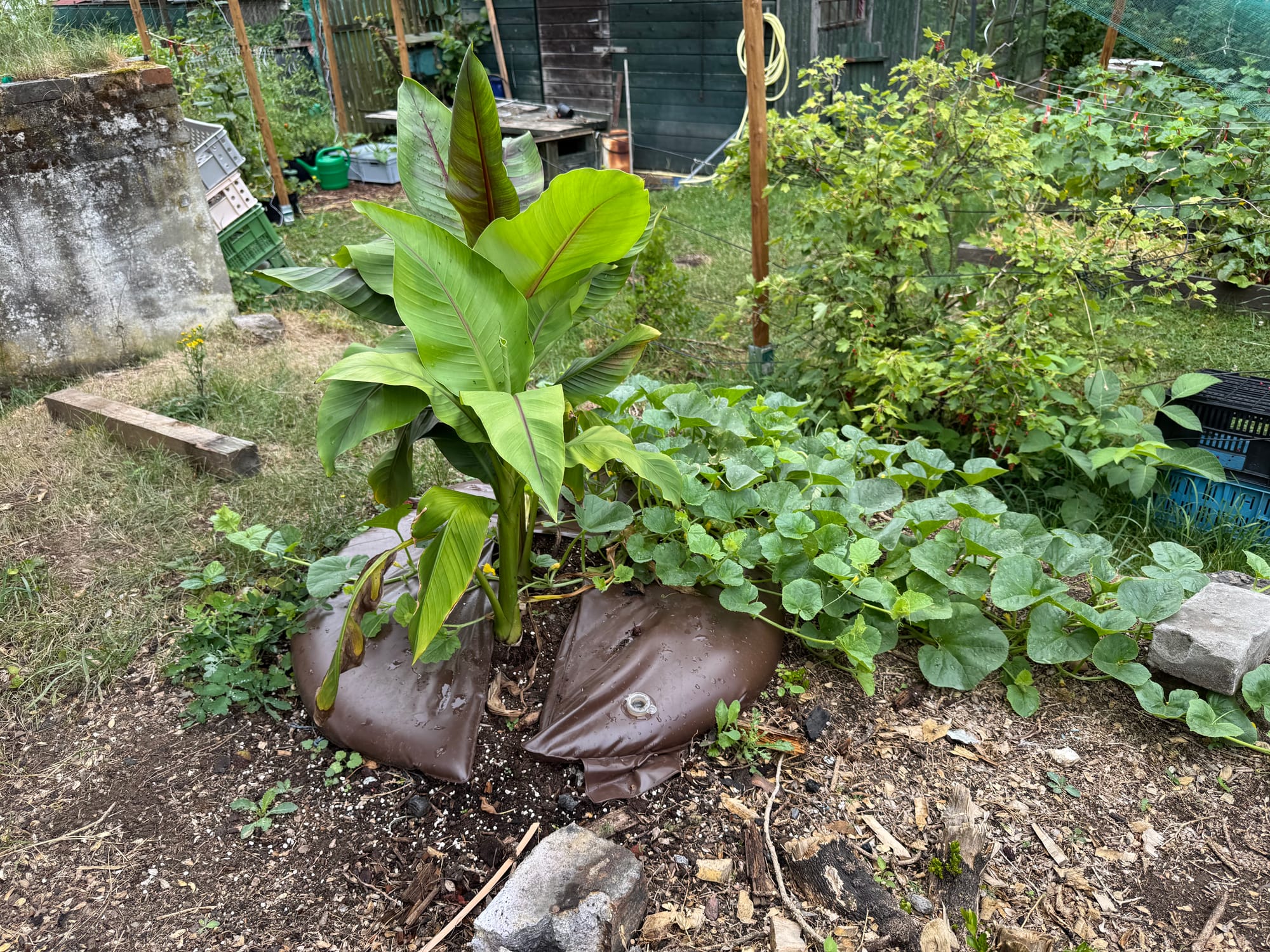
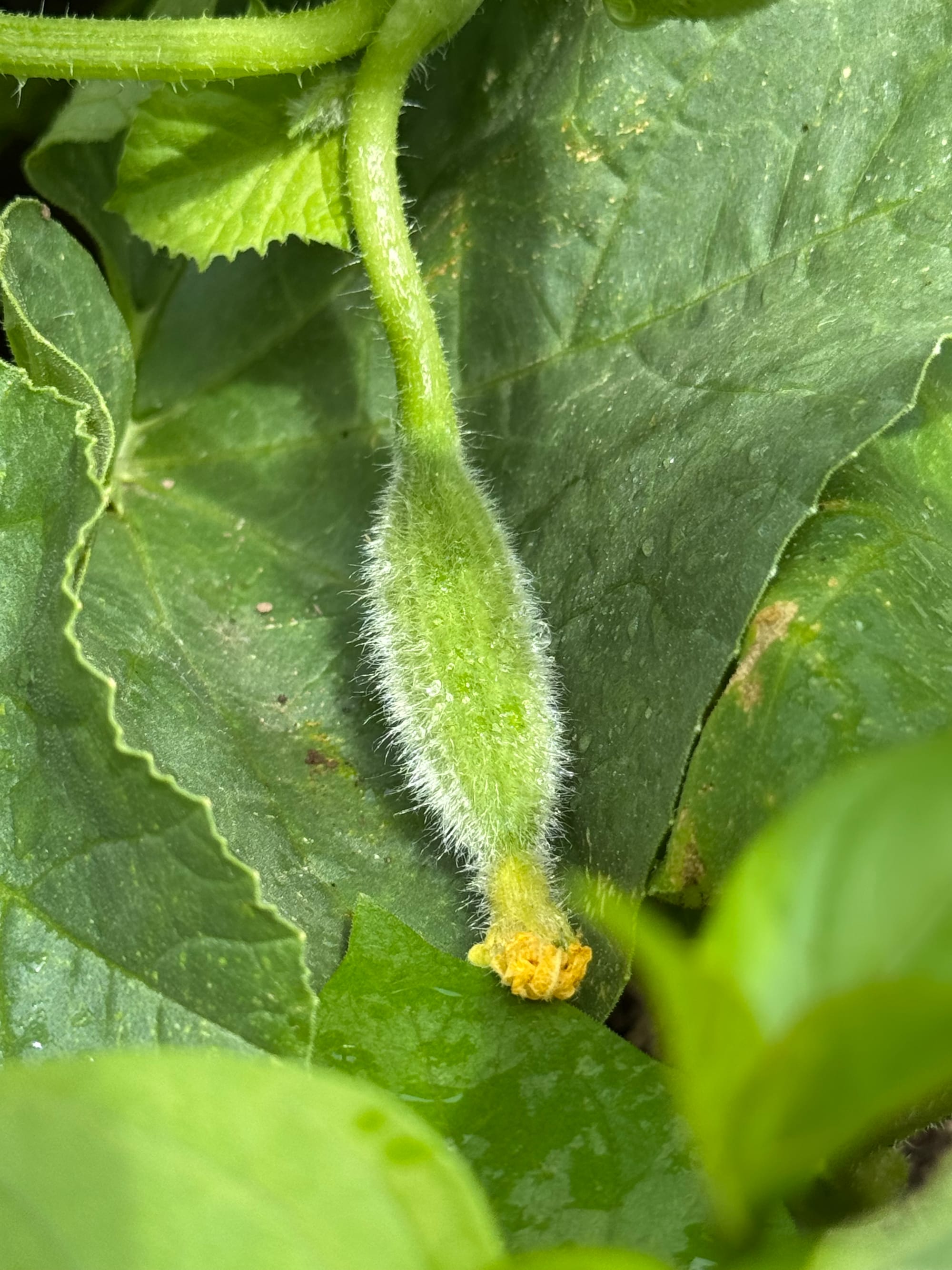
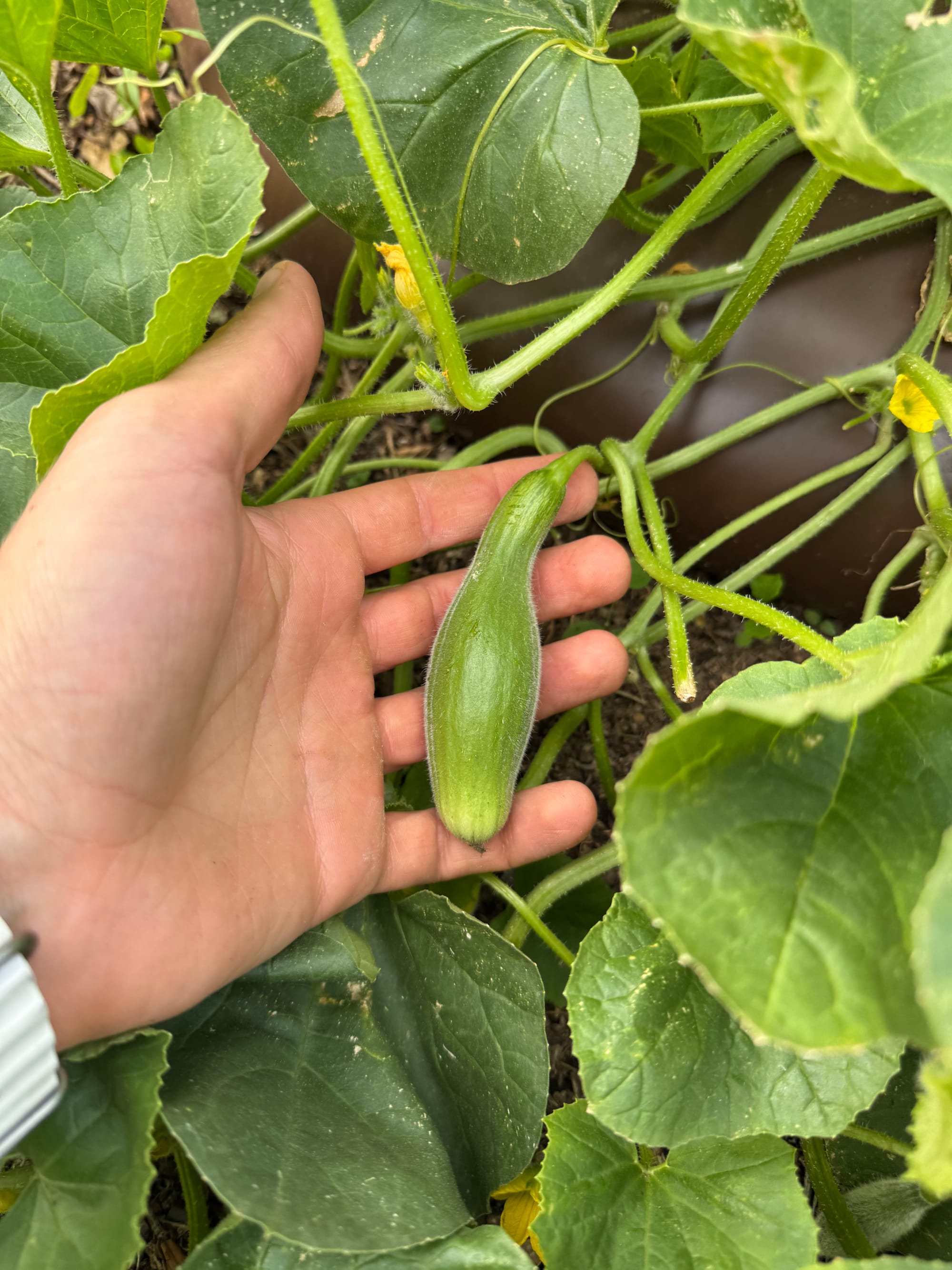
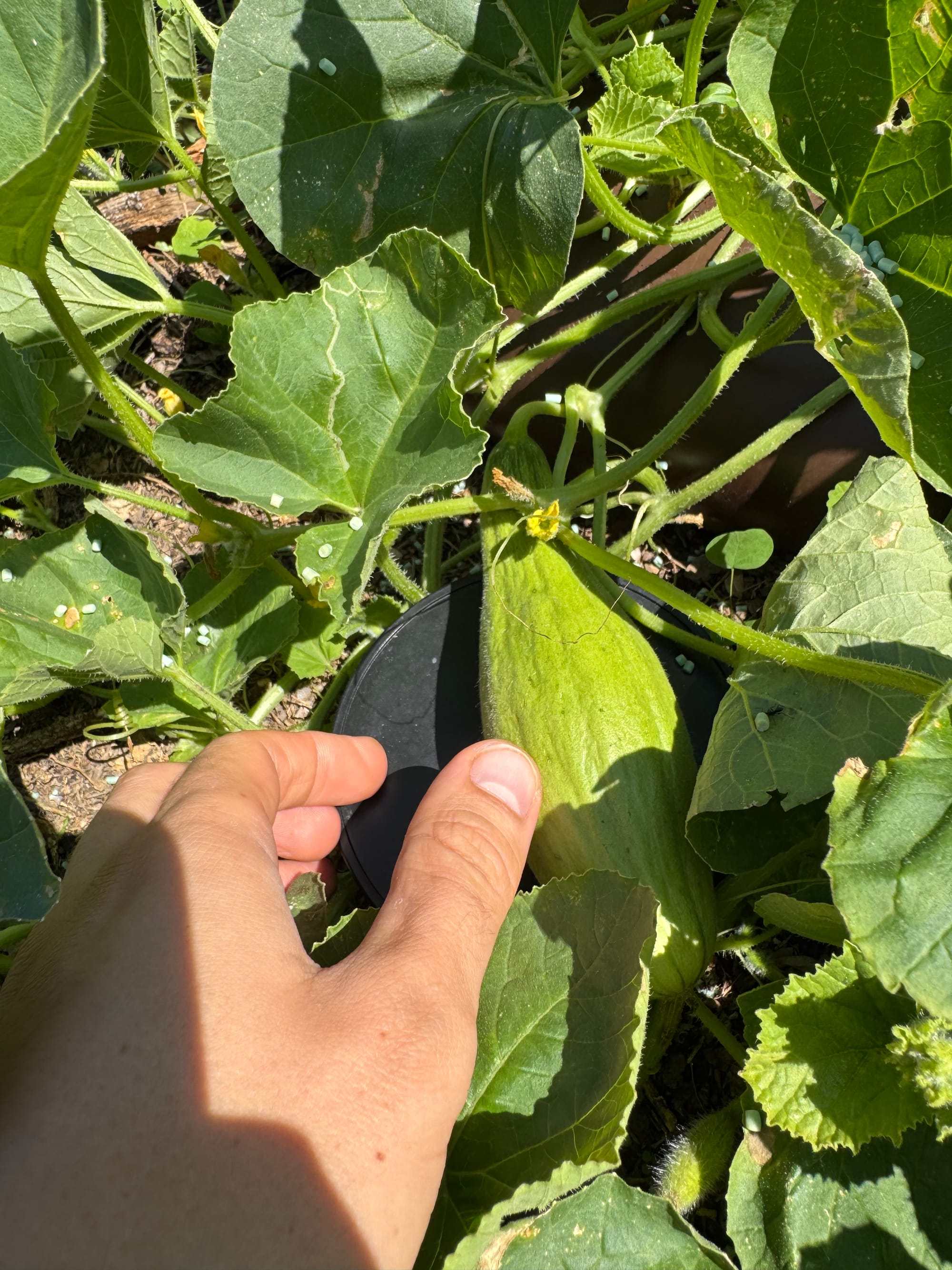
The bananas are funny plants. They don’t grow much in height, but right now, large, sail‑like leaves full of ornamental shapes are appearing. Since I had zero expectations, every surprise is welcome. But I have to start thinking about what I’ll do with them through the winter. I don’t want them to freeze, and I don’t want to cut them down.

the corny pickle
Pickling cucumbers. The only cucumbers I’m capable of not fucking up completely. Frankly? I don’t remember the last time I had such beautiful plants. Well, last time was two years ago, until rogue vole ate most of them. It’s a good year for these.
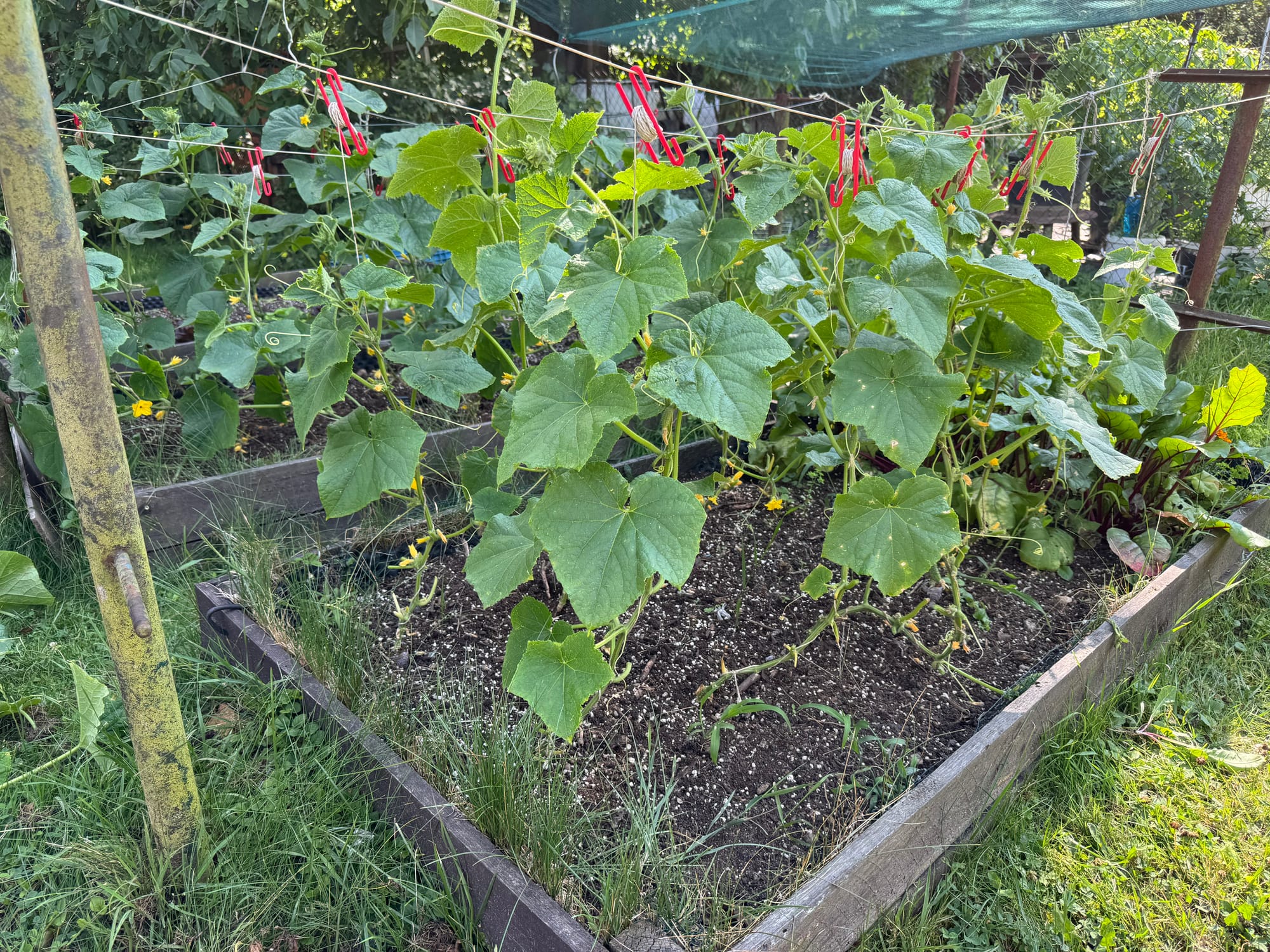
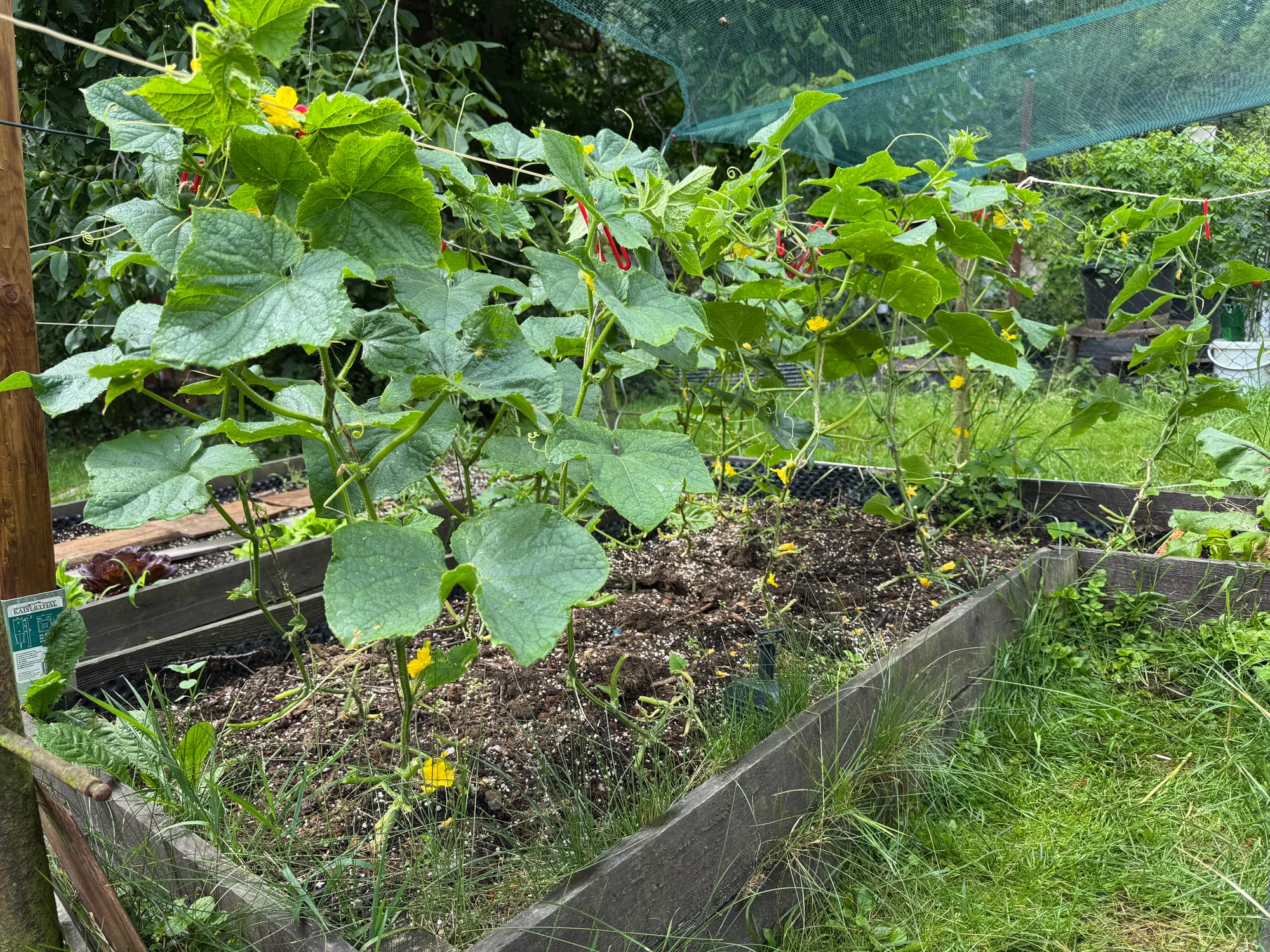
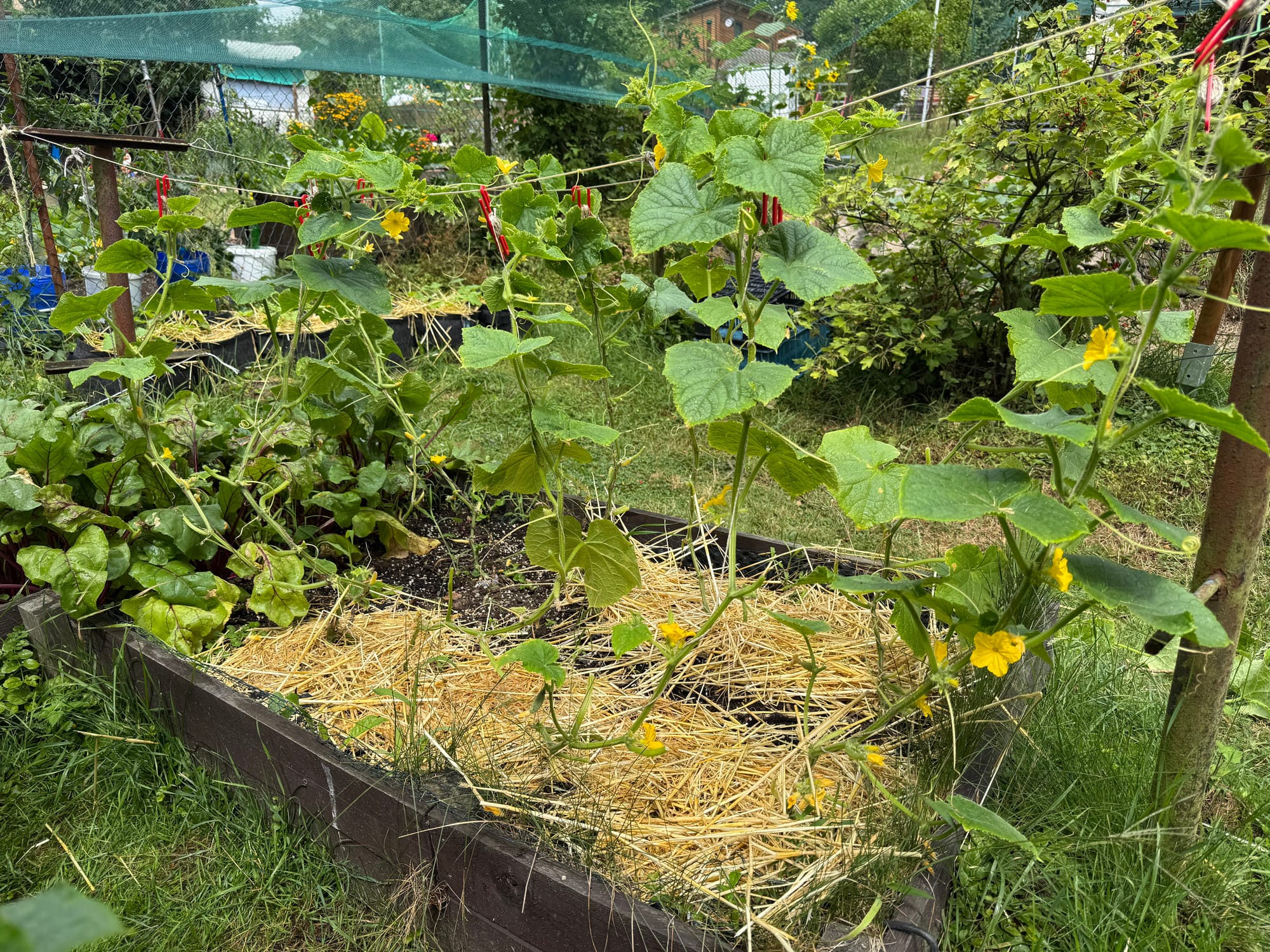
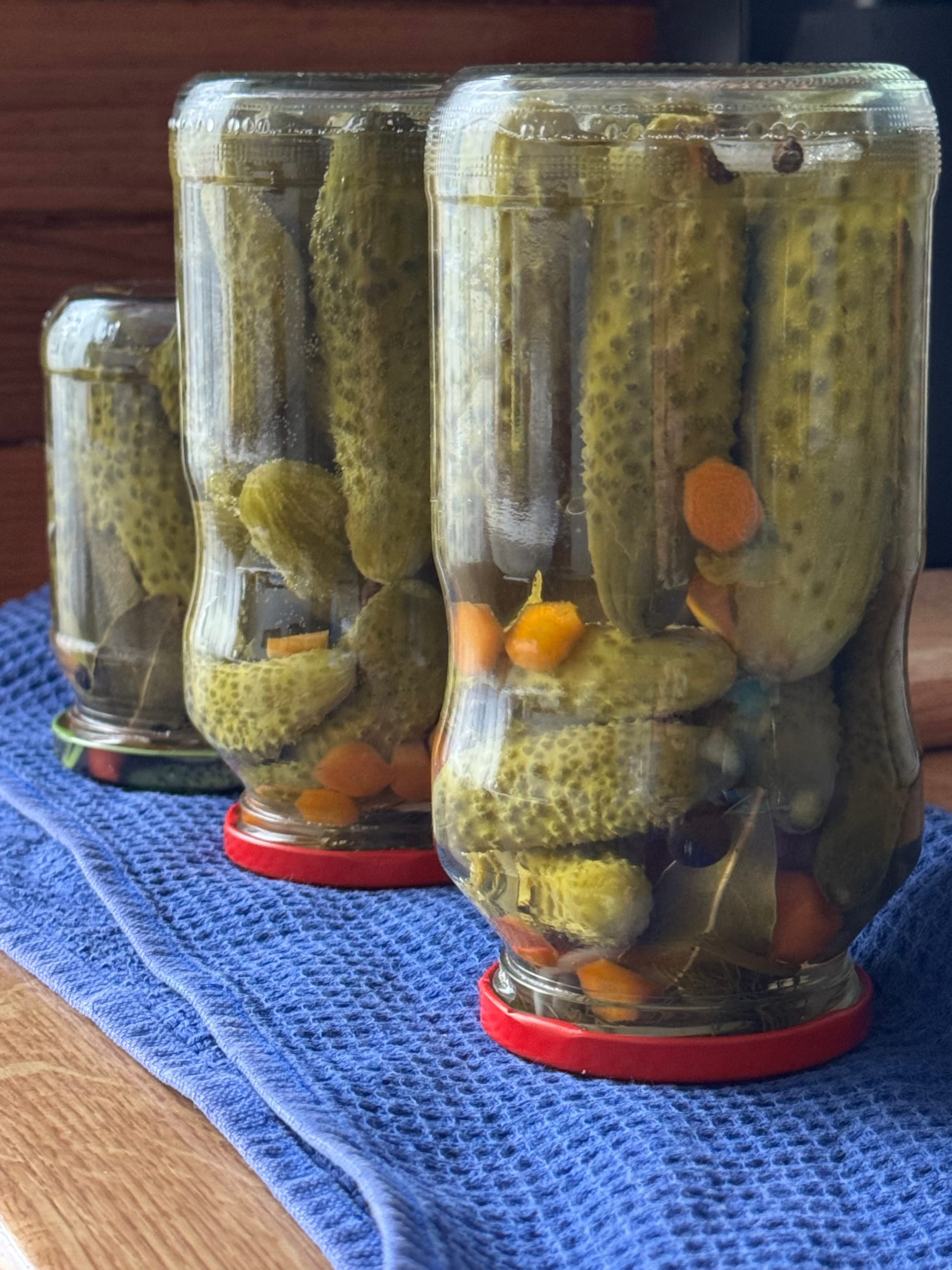
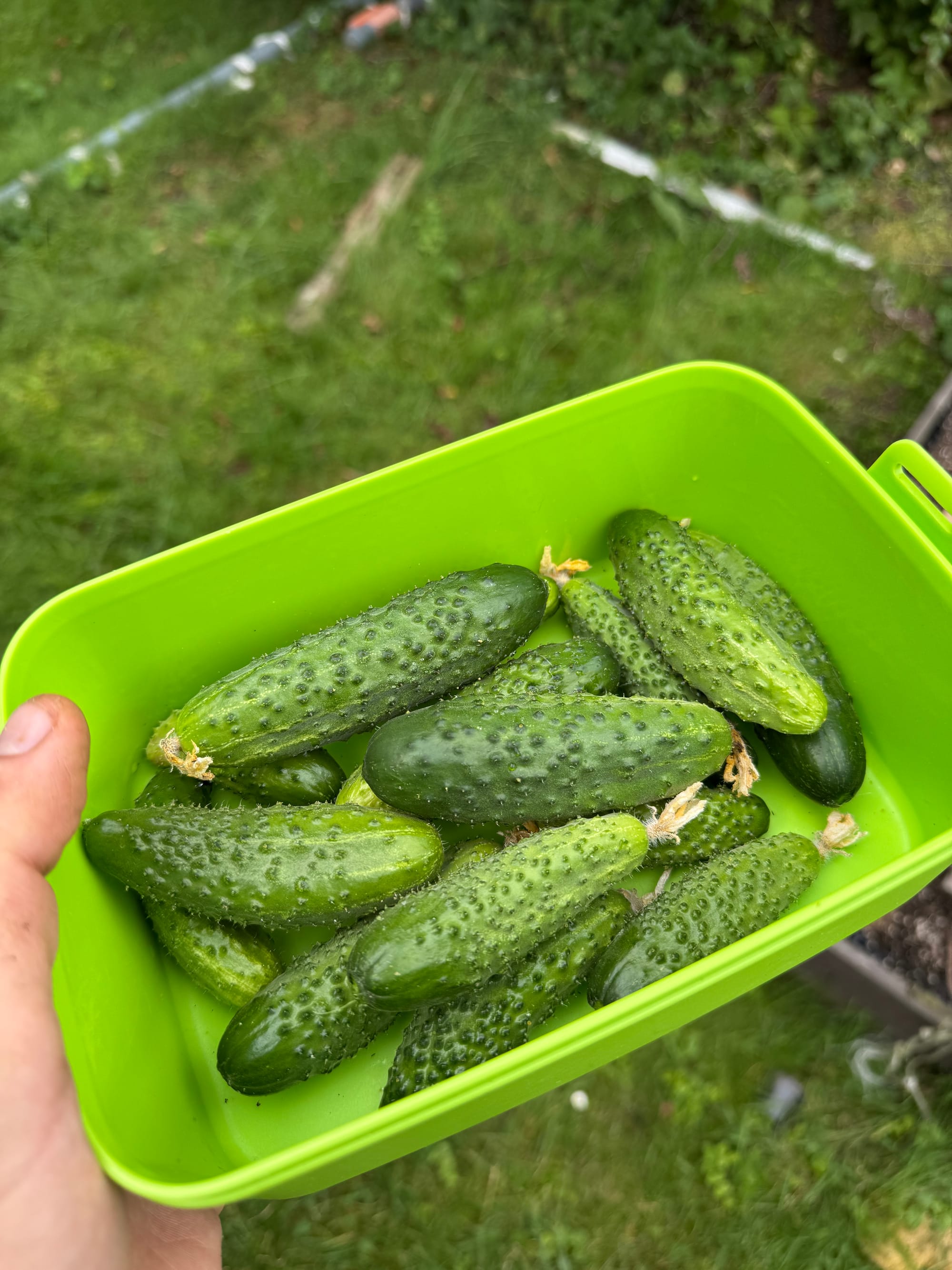
But they are always short‑term happiness. The second half of July is the time of great fungal invasion on all fronts, and pickling cucumbers are usually the first to go. It’s important to keep removing infected leaves. I’m also using Magnicur Finito fungicide to delay the inevitable.
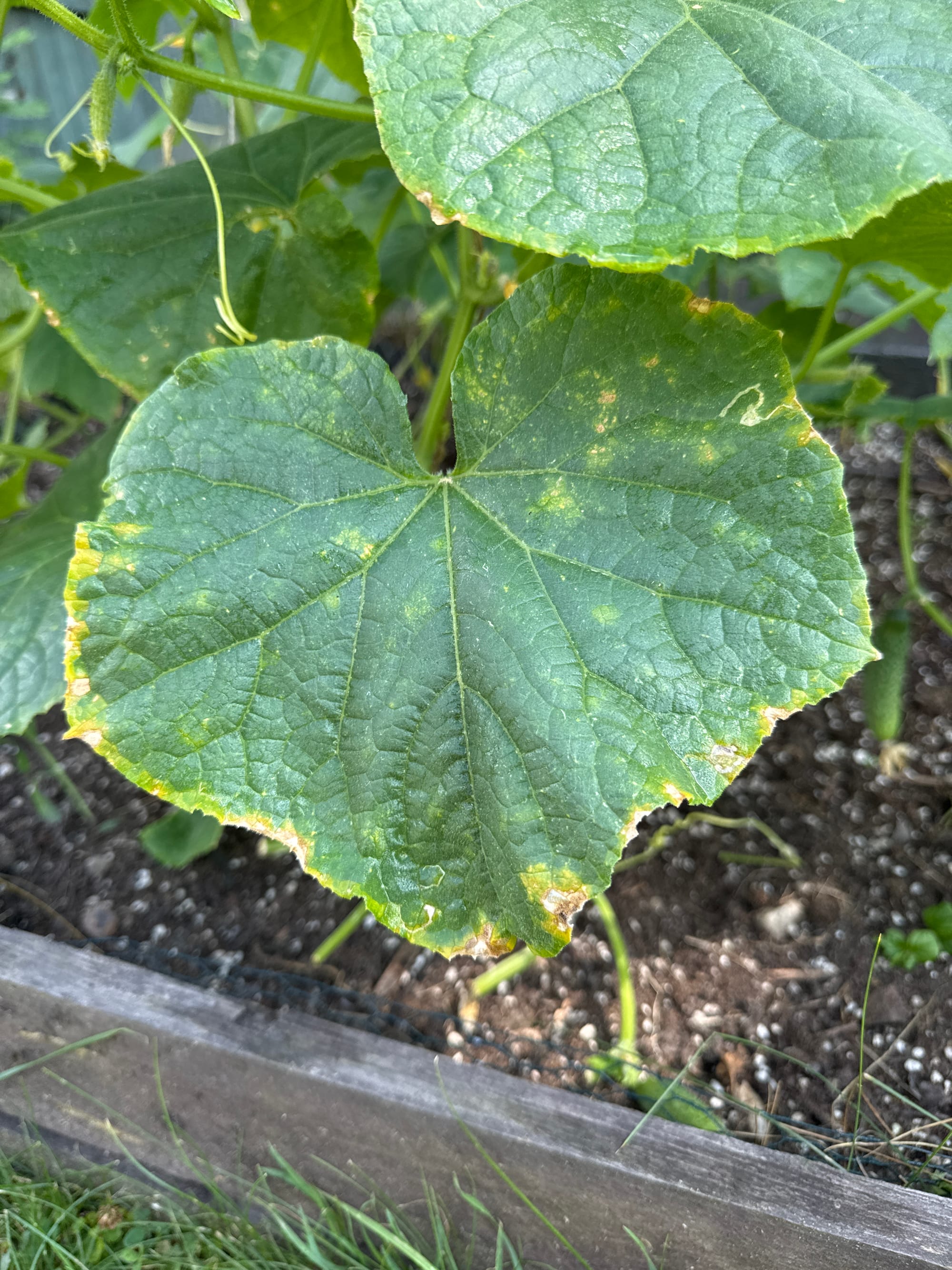
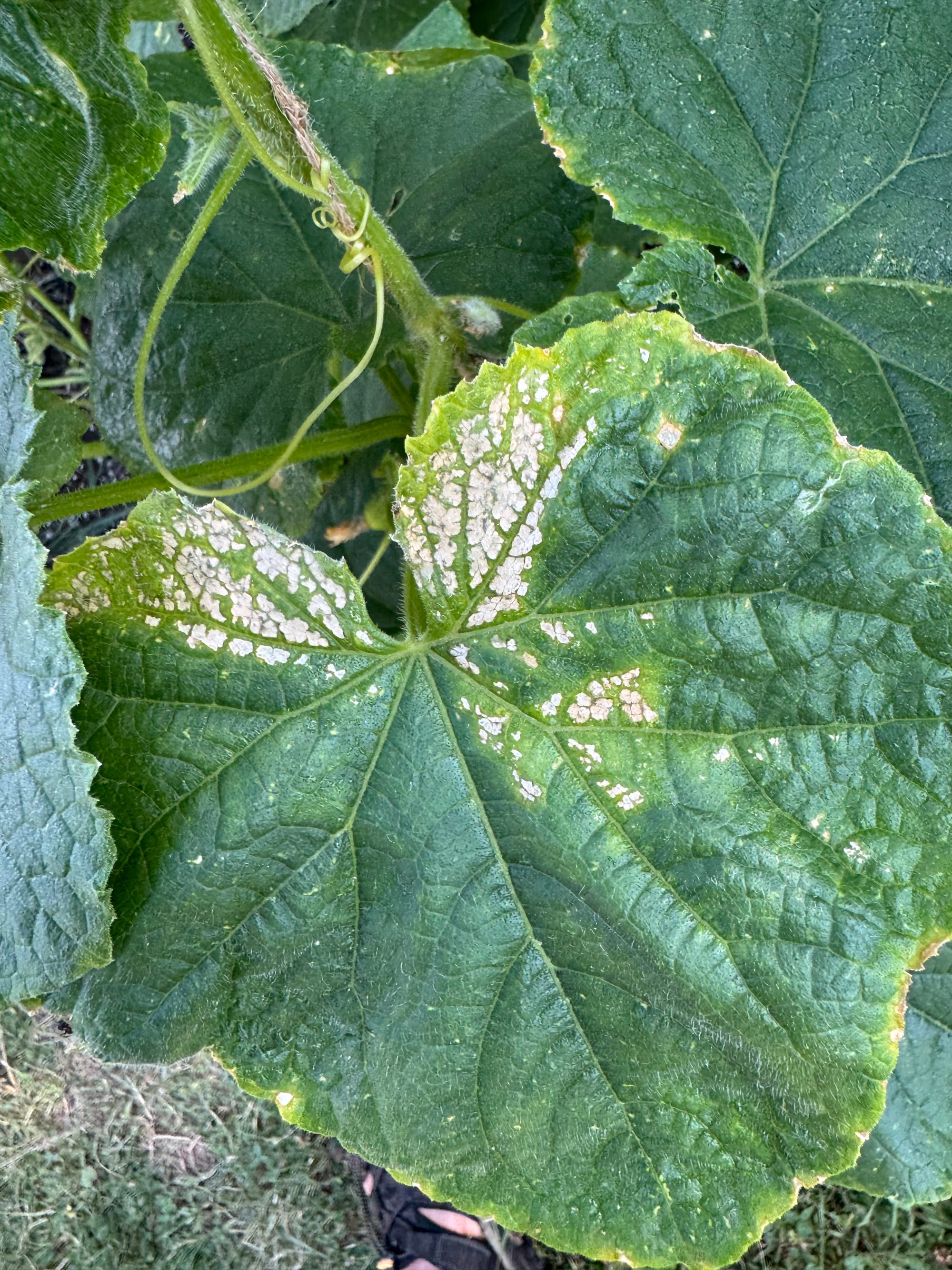
Early signs of the inevitable. And some weird sun scold.
Fungal infections are not the only thing to look out for. I was surprised to see a dense infestation of aphids on my corn. I always thought aphids don’t sip on corn, but the more I know. A week of NeemAzal and they were gone, leaving some superficial damage.
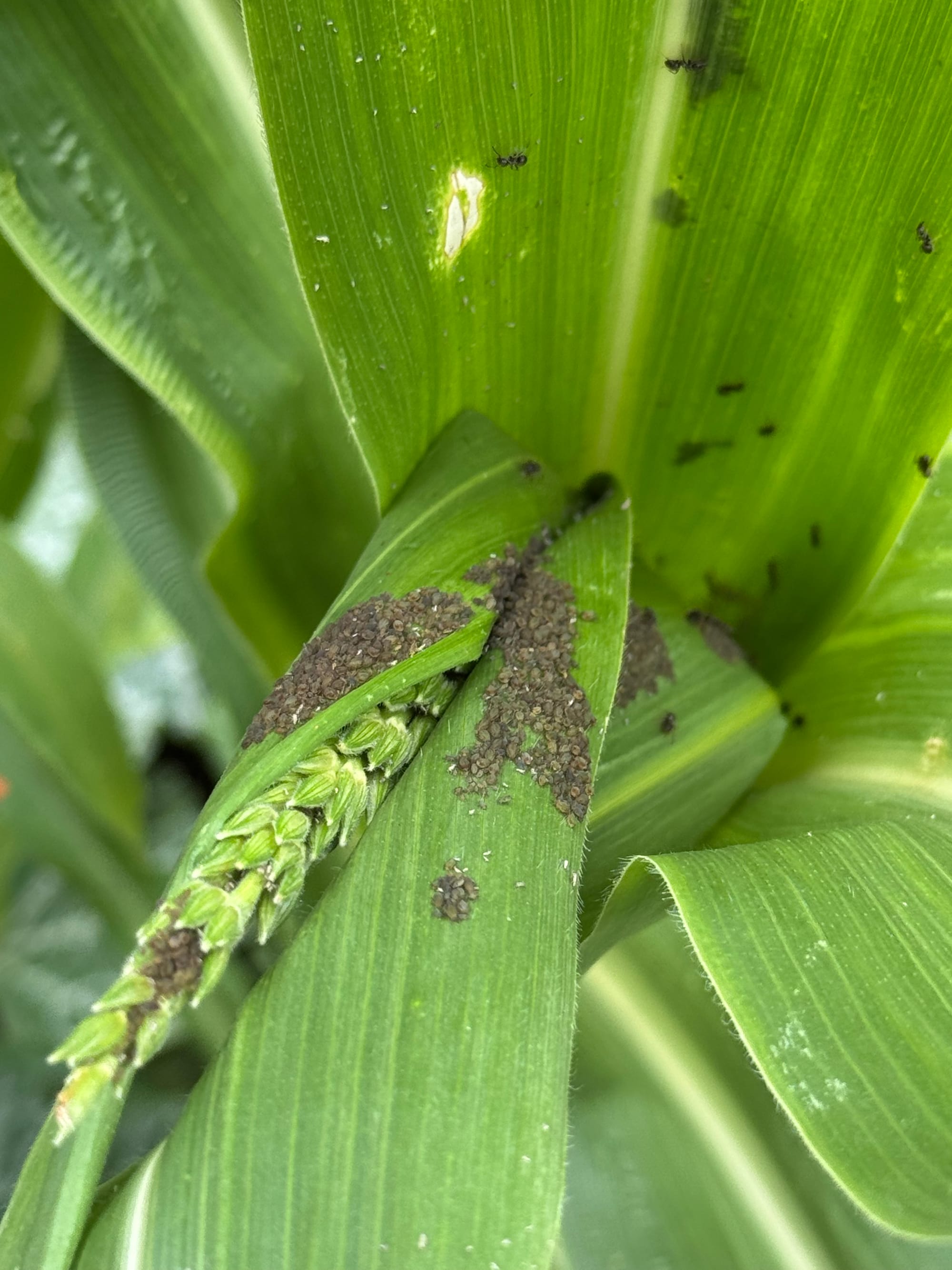
The winter squash near the corn base has finally taken off. It woke up from transplant shock fully and started spreading. It might be late, though, since it only started pushing female flowers in the last week of July.
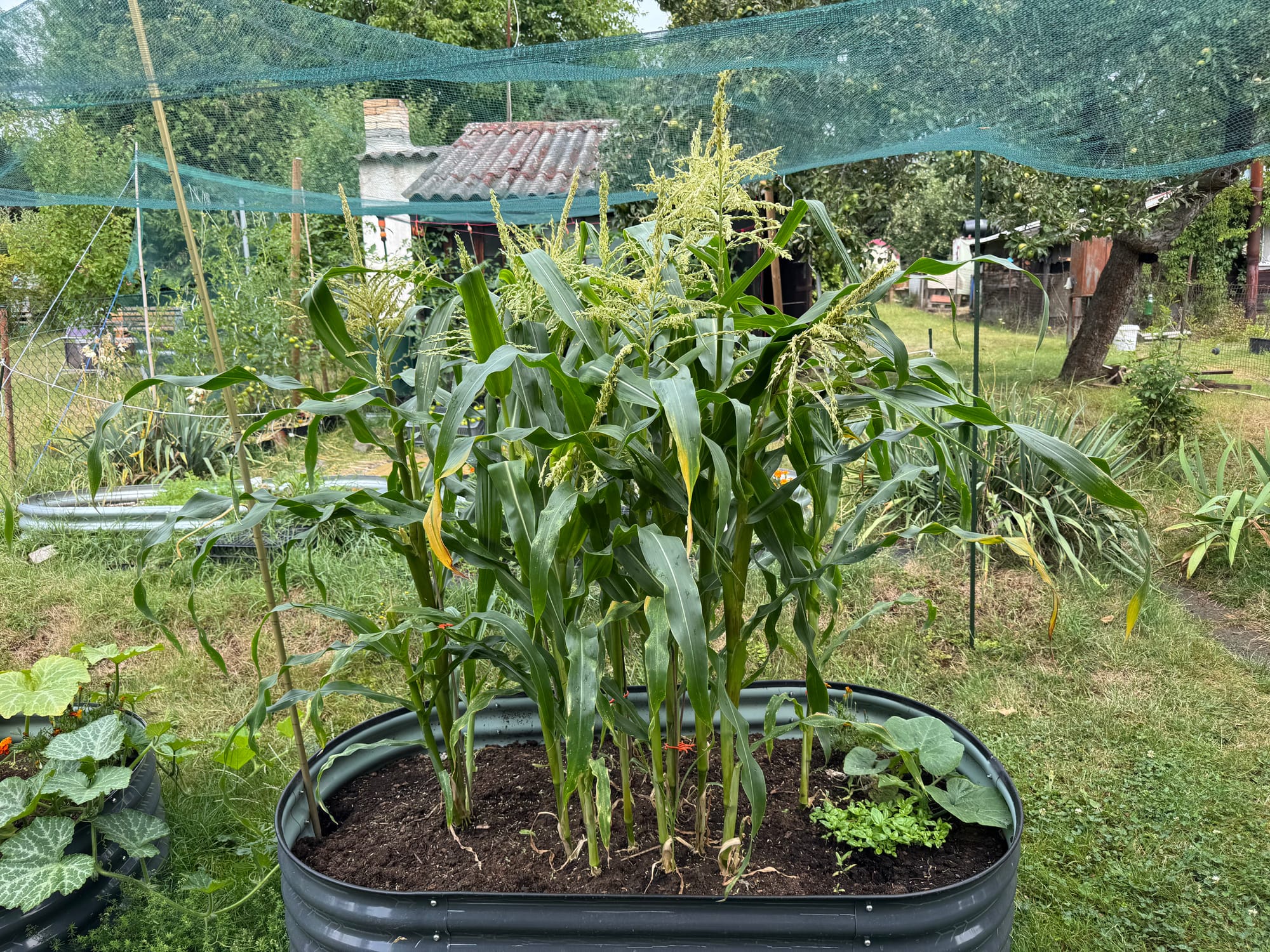

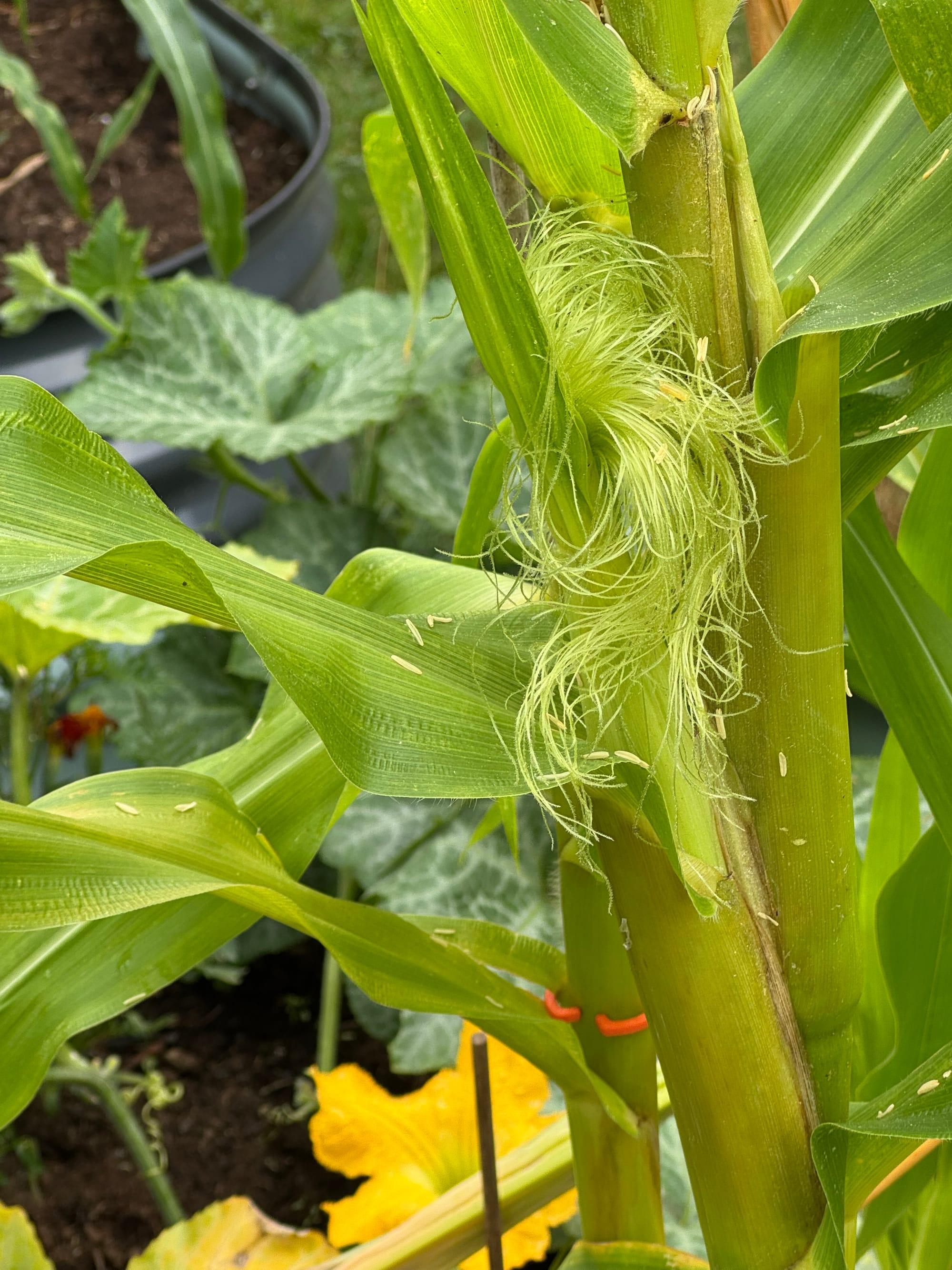
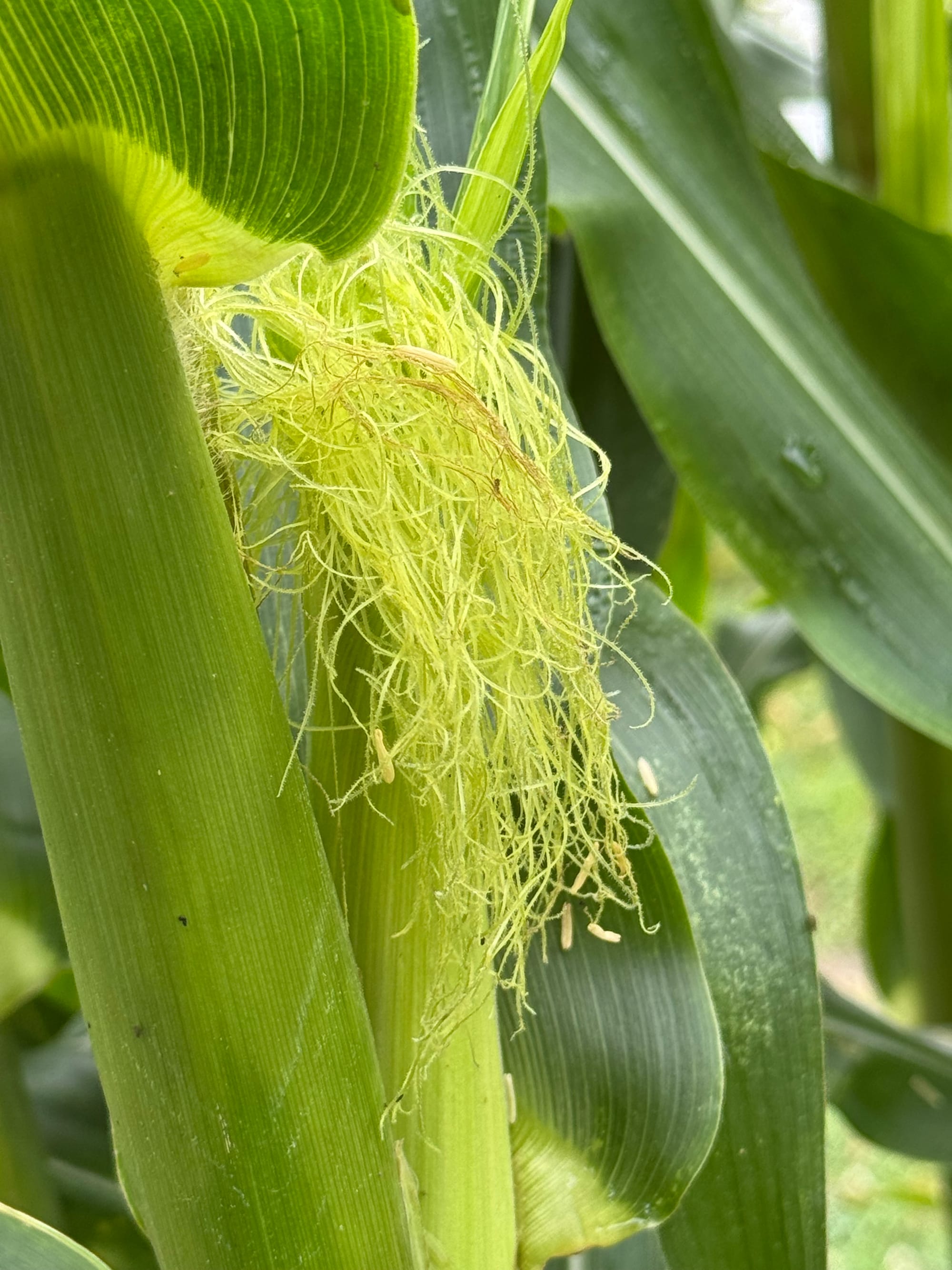
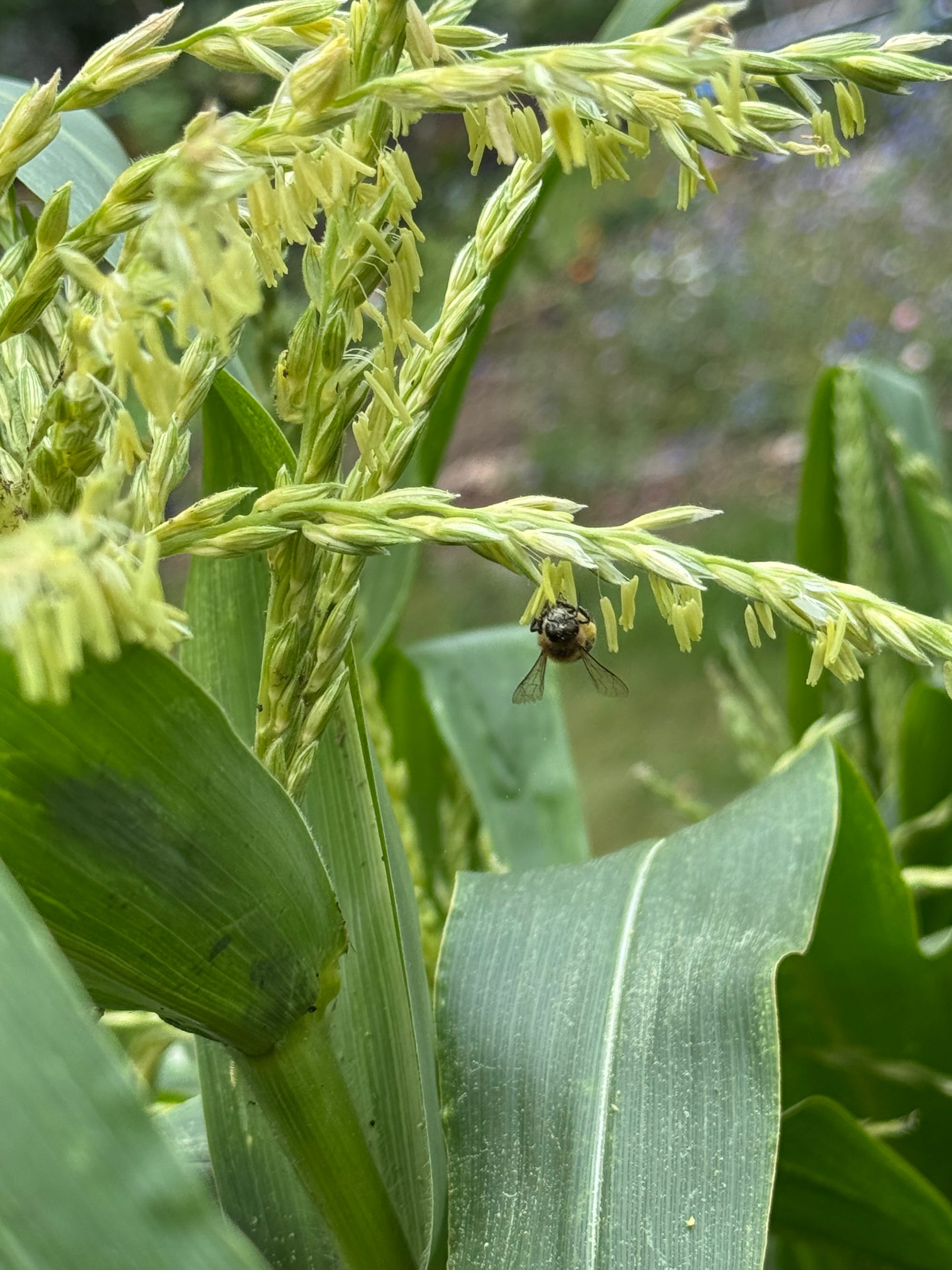
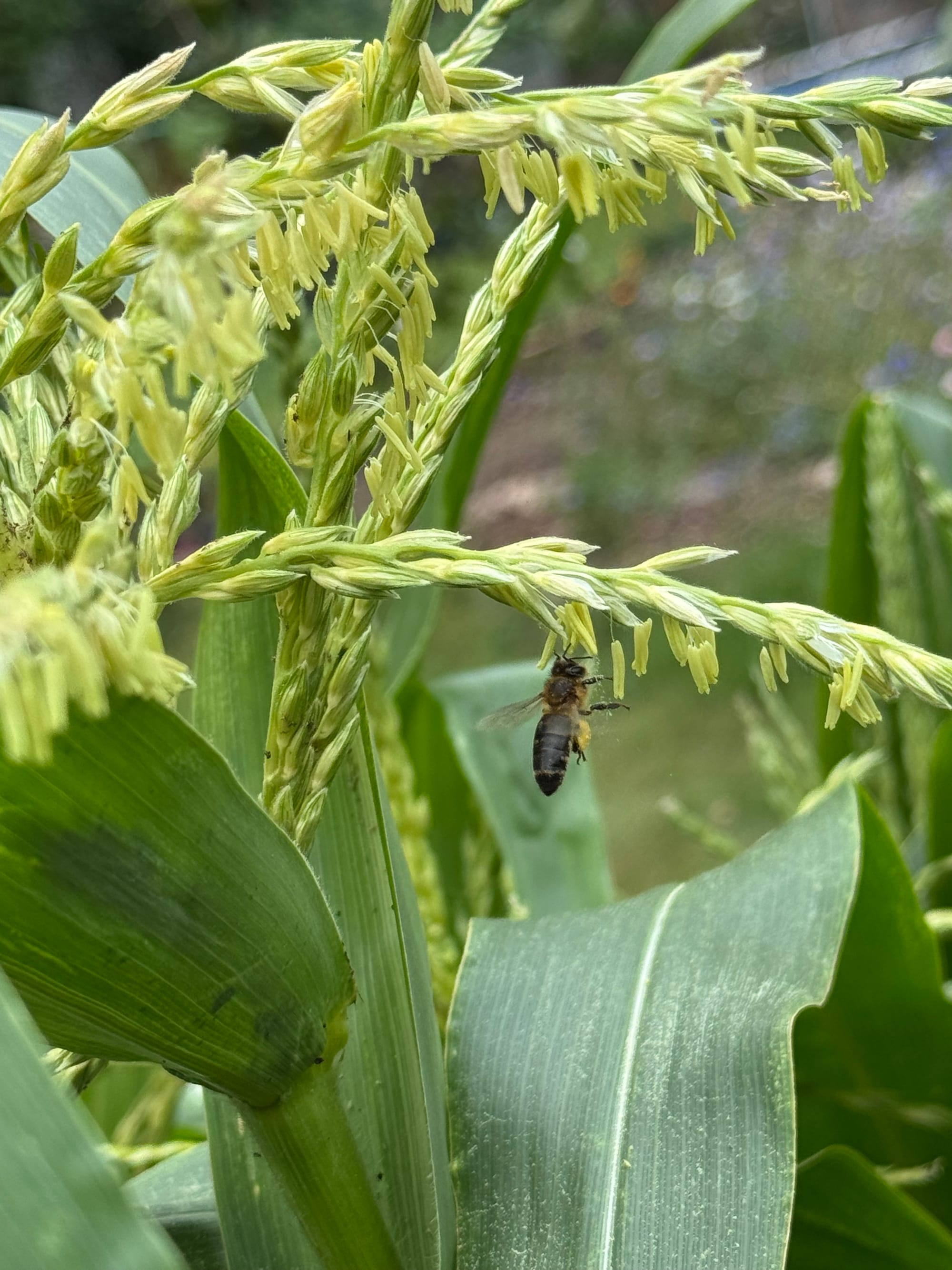
Look how happy the bee is!
the unrooting harvest
I intentionally kept the best stuff for last: the harvest showcase. July is the harvest month for red onions and garlic. And I harvested a lot of garlic.
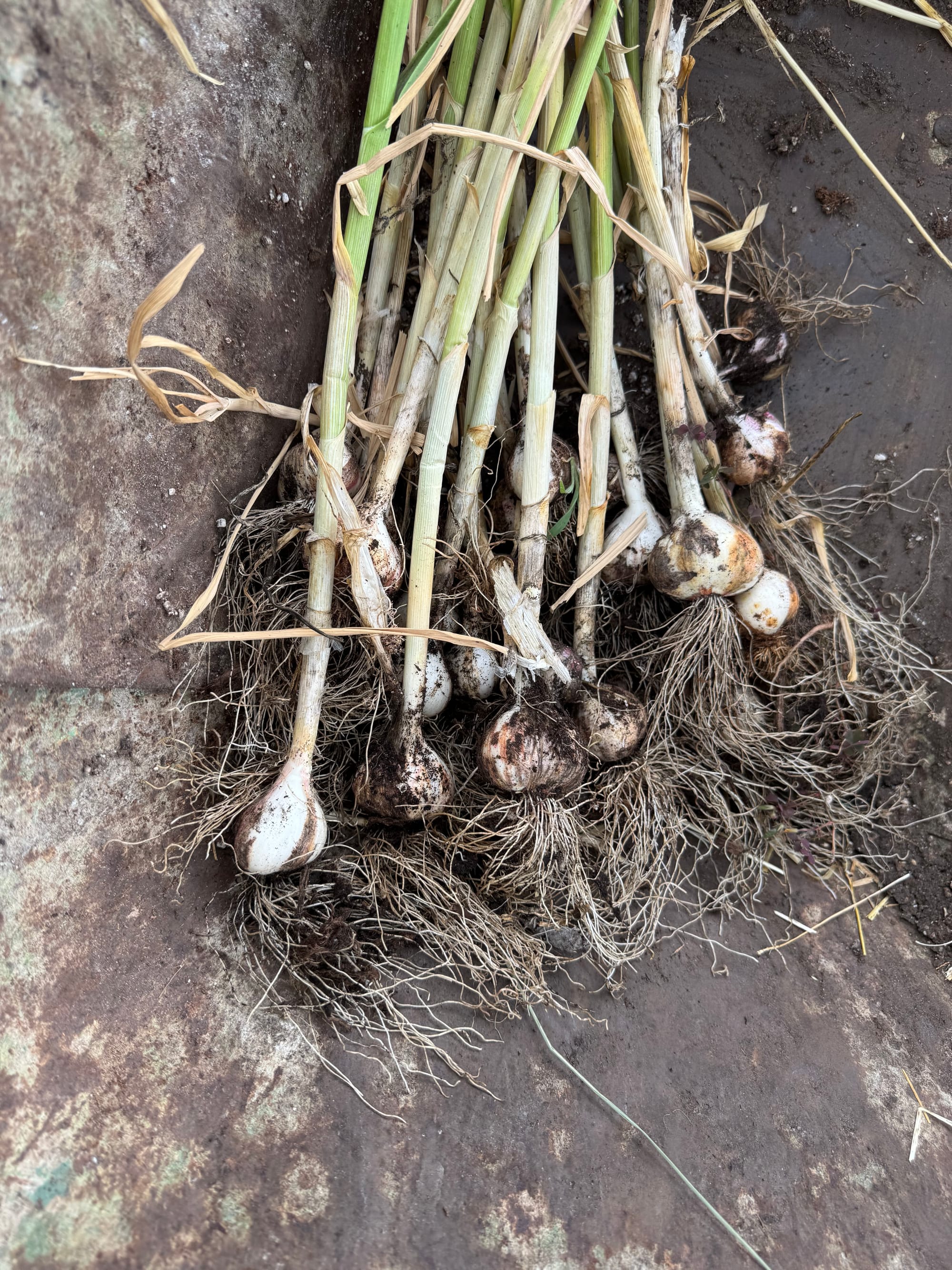
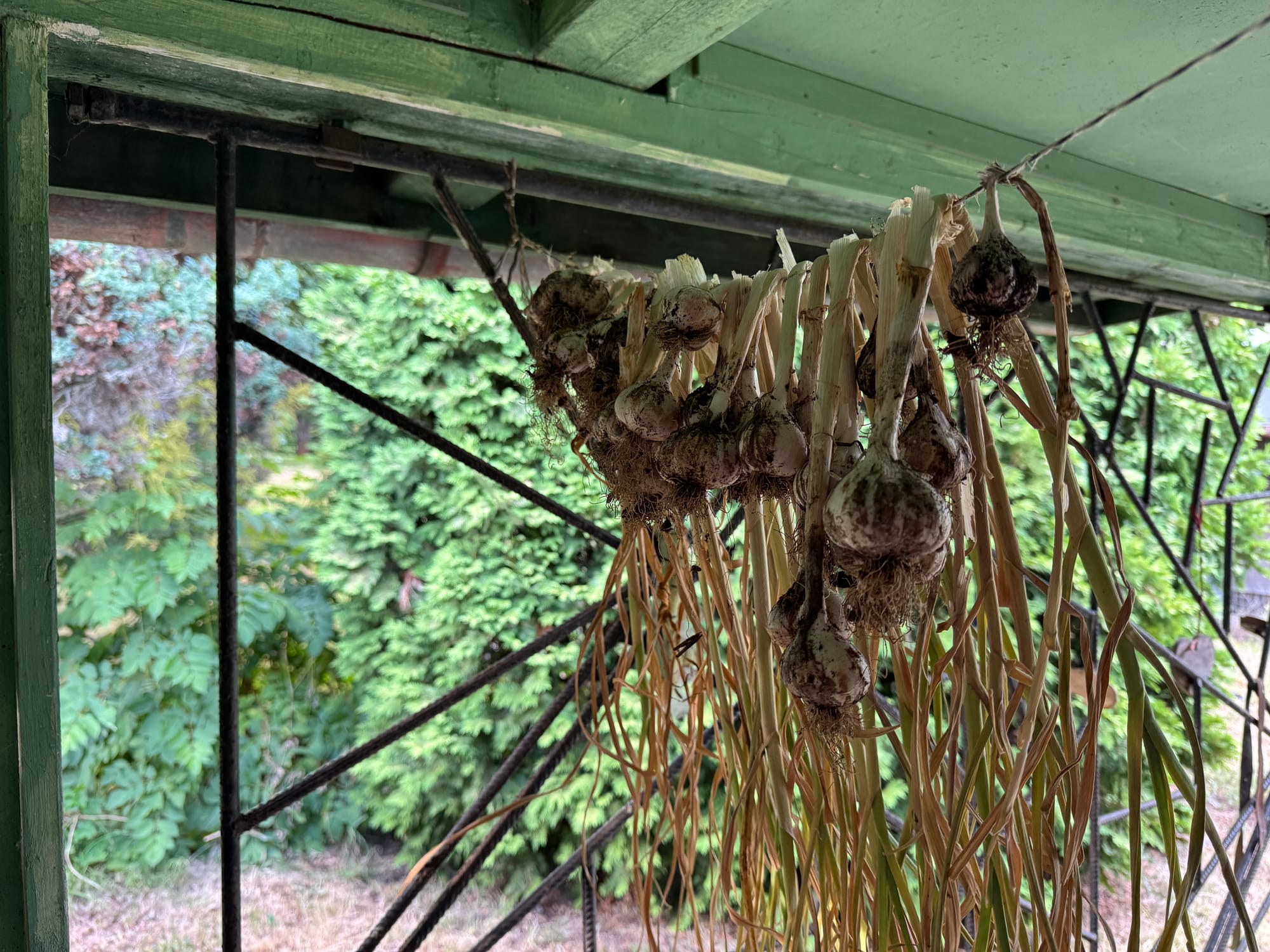
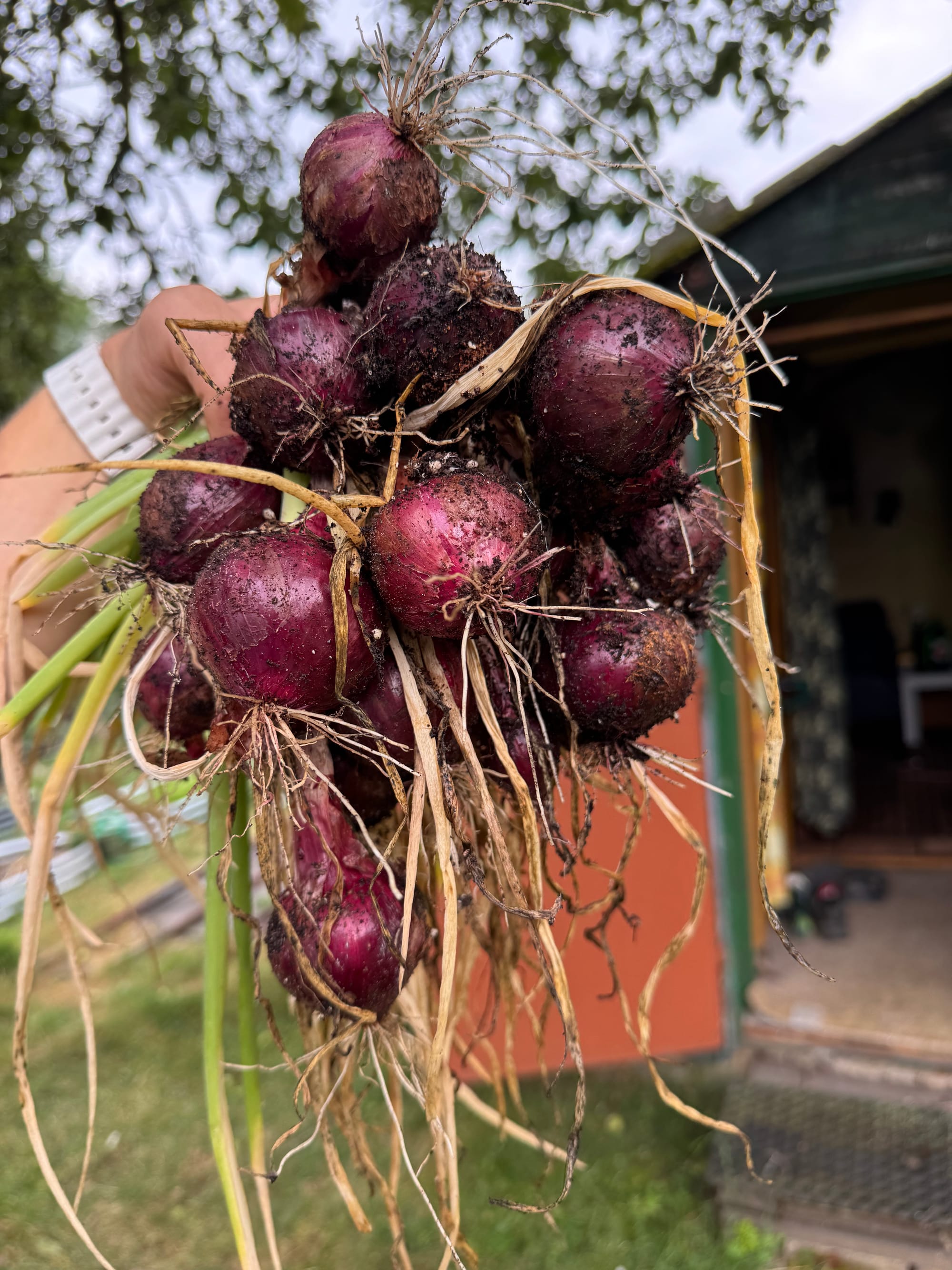
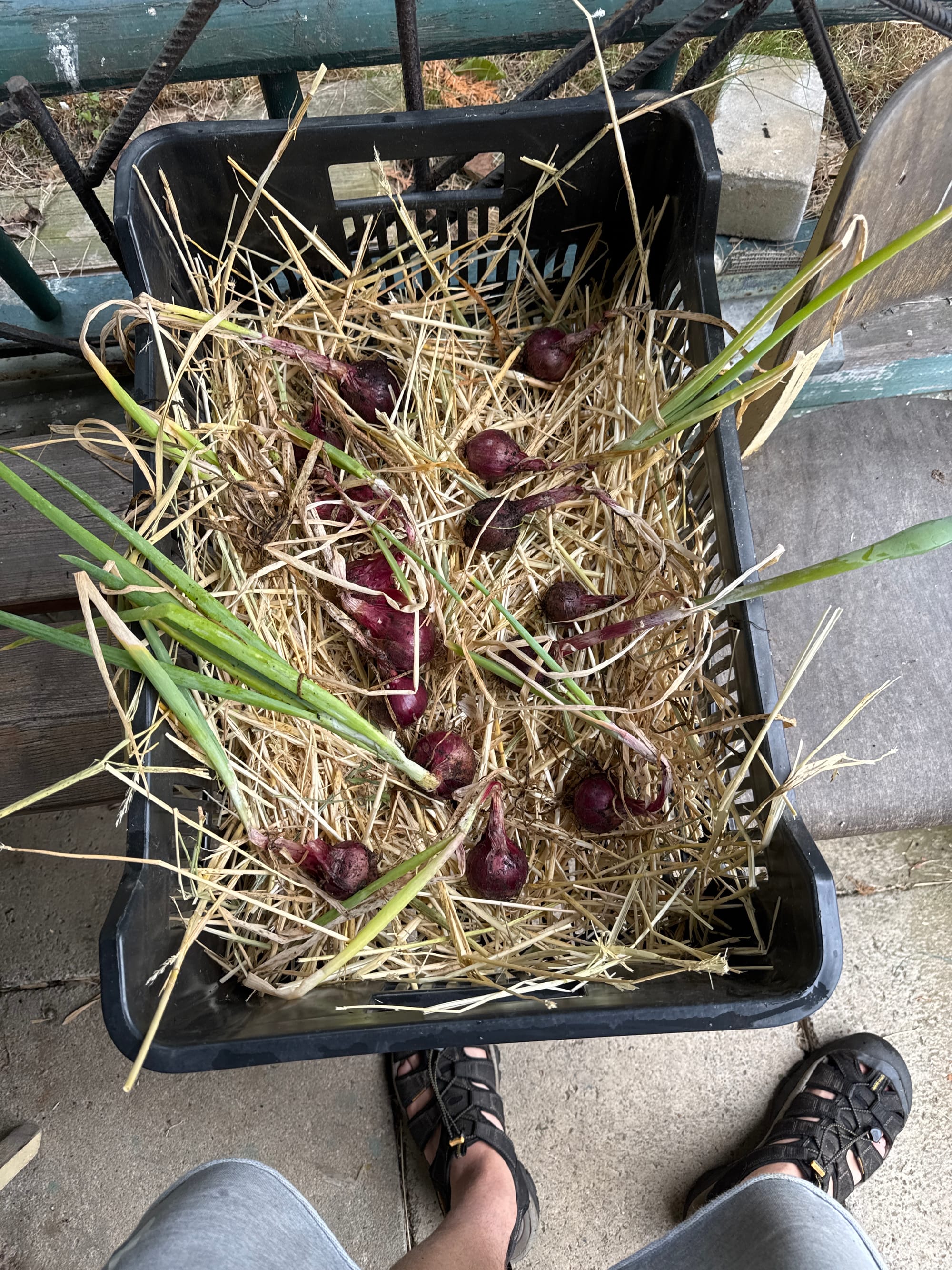
The necks were soft, and I was afraid of rot. Drying them in wheat.
I fixed some nutrients into the garlic bed and sowed a fresh batch of peas at the end of July for that sweet September harvest.
I pulled out the Parmex carrot, a bunch of nice medium‑sized balls, very sweet with that typical carrot taste. And I immediately sowed a fresh batch. There is no time to waste.
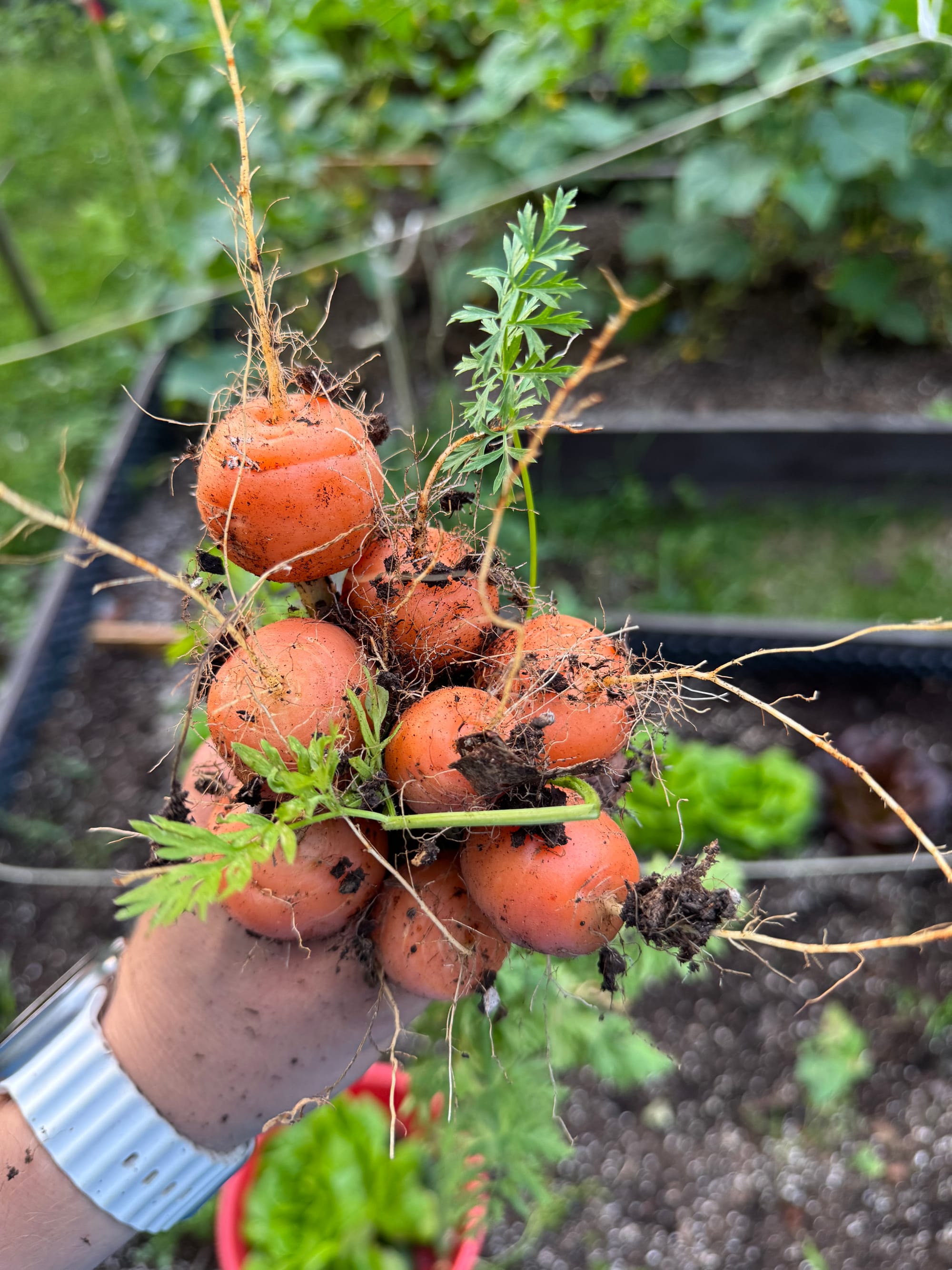
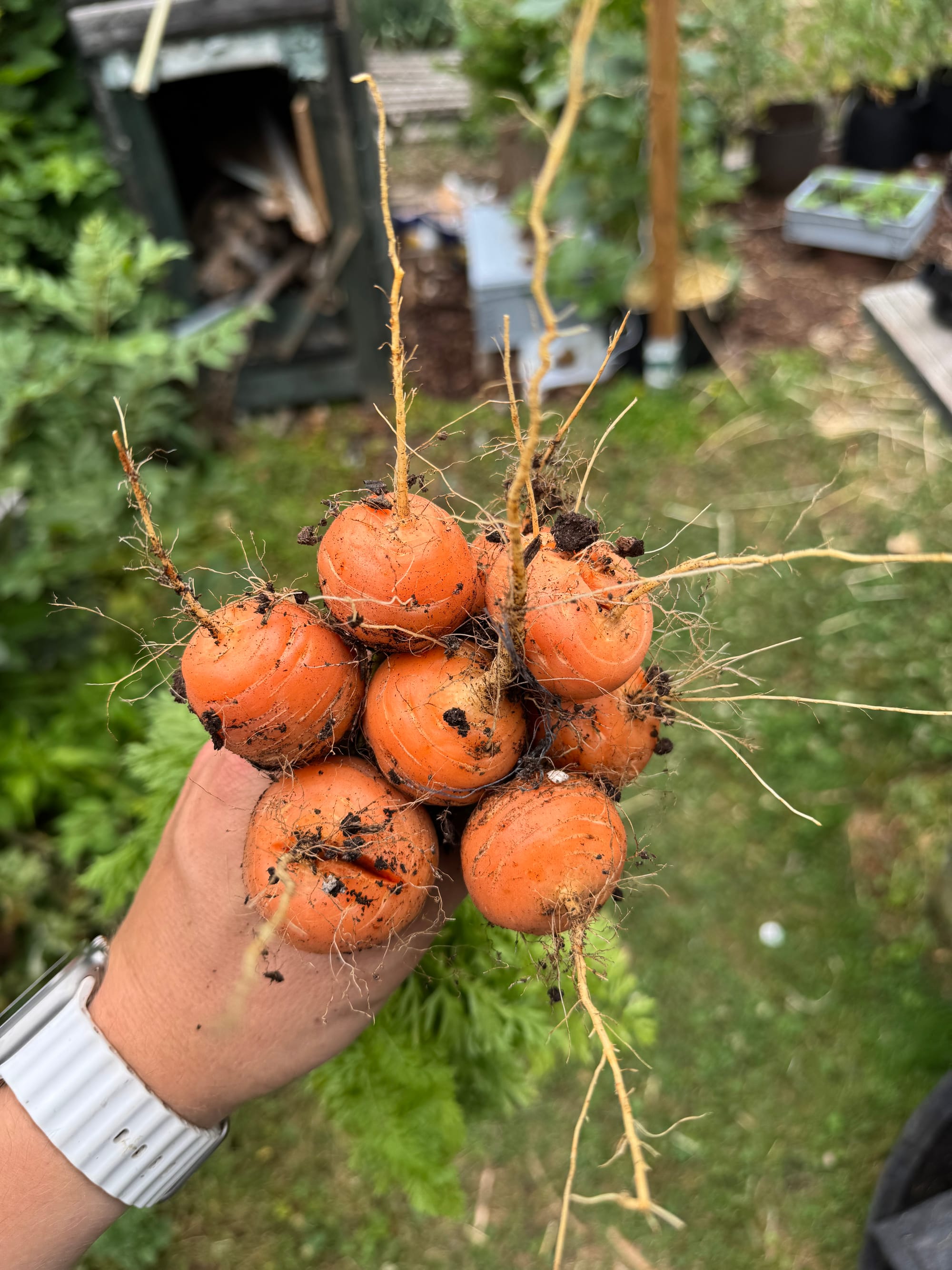
In the same lot, I harvested another batch of salads, inviting me to eat them directly from the ground. These will go, and I’ll probably start replacing them with kohlrabi for that early fall harvest.
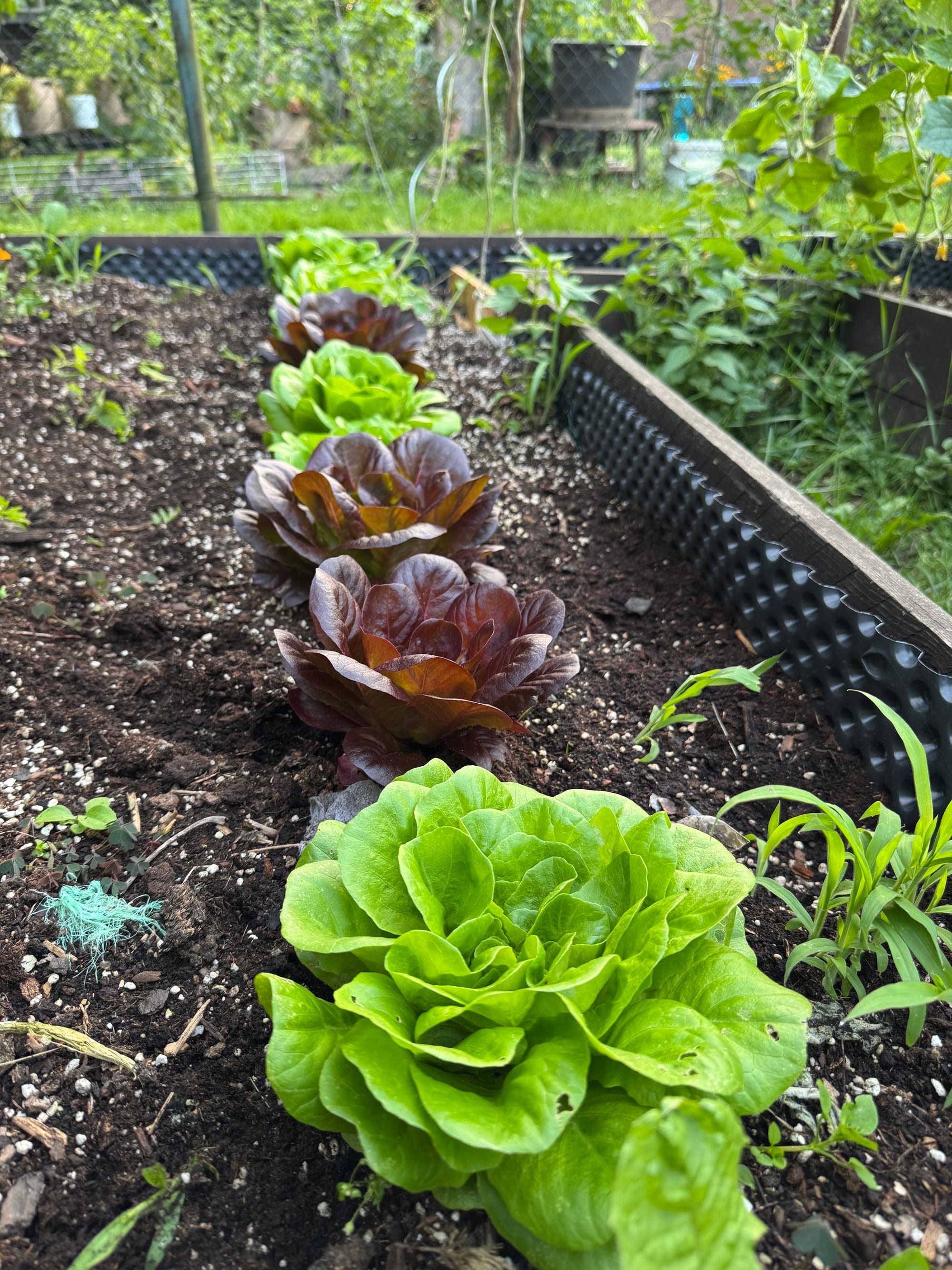

For the beets, I have some nice and large bulbs, but I actually have no idea what I’ll do with them. I know only a few recipes that use beets, but the rest are just variations of raw beets. Fermented beet, canned beet, grated with garlic—that’s actually really nice with cheese. Who knows.
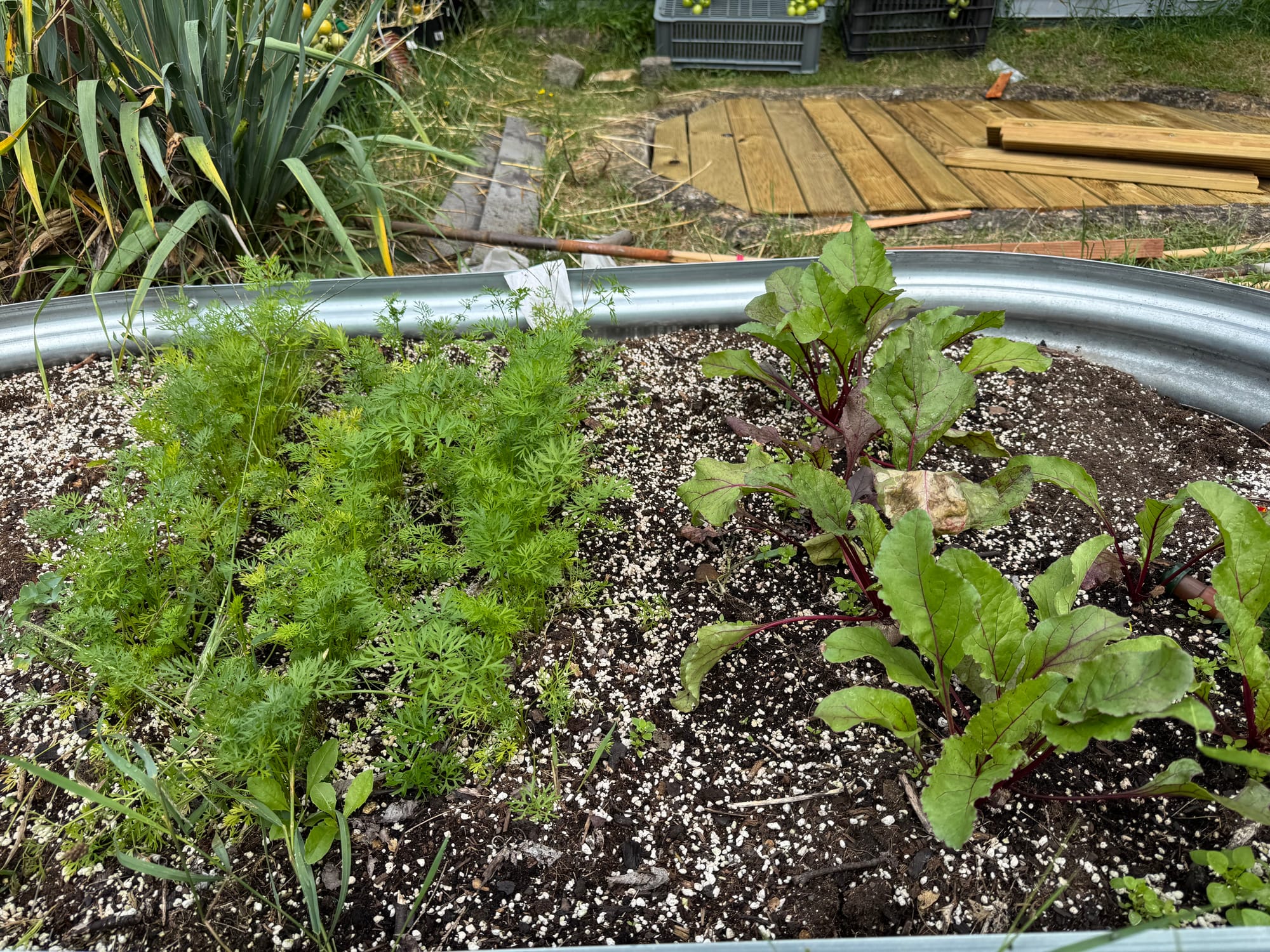
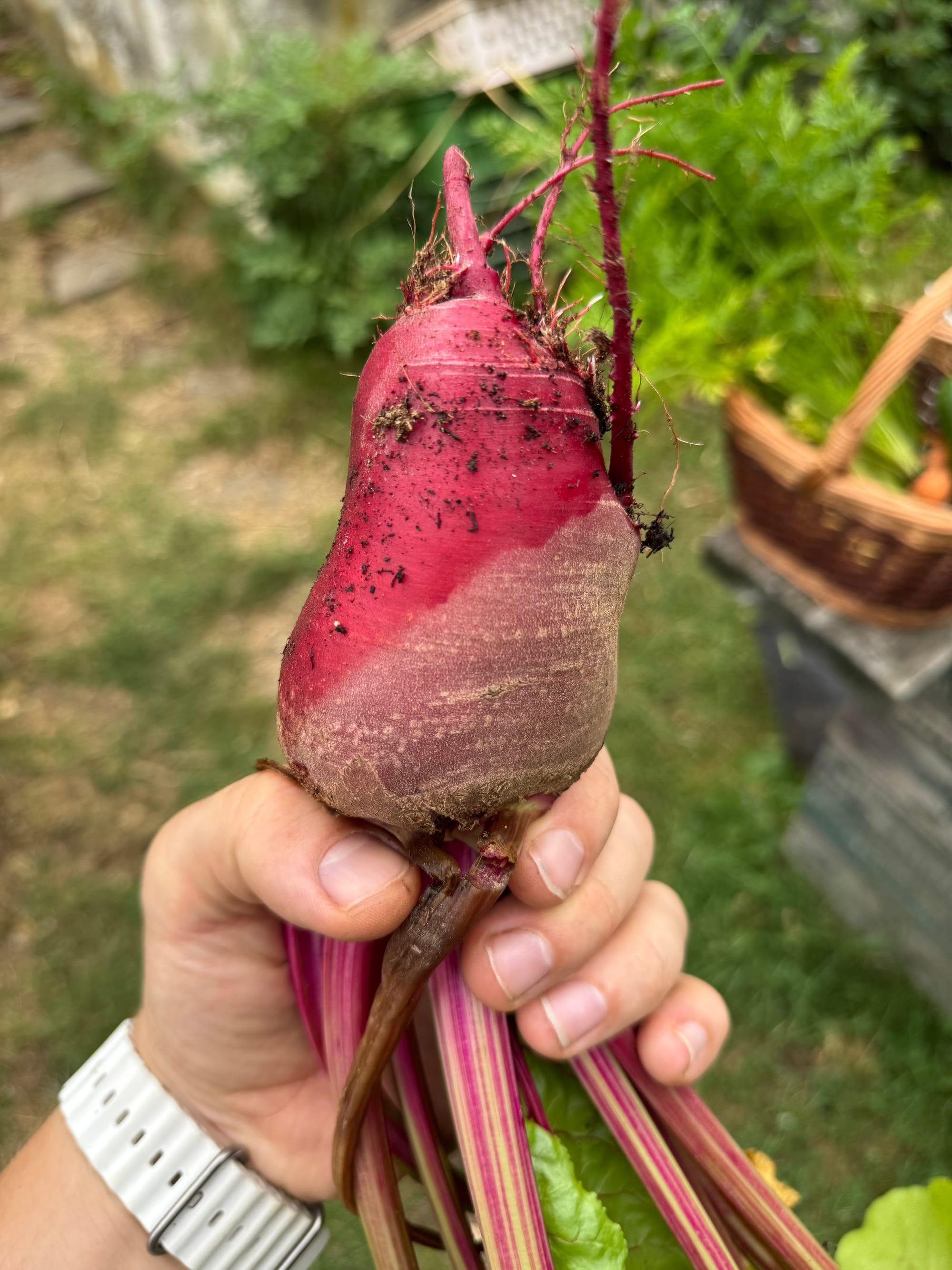
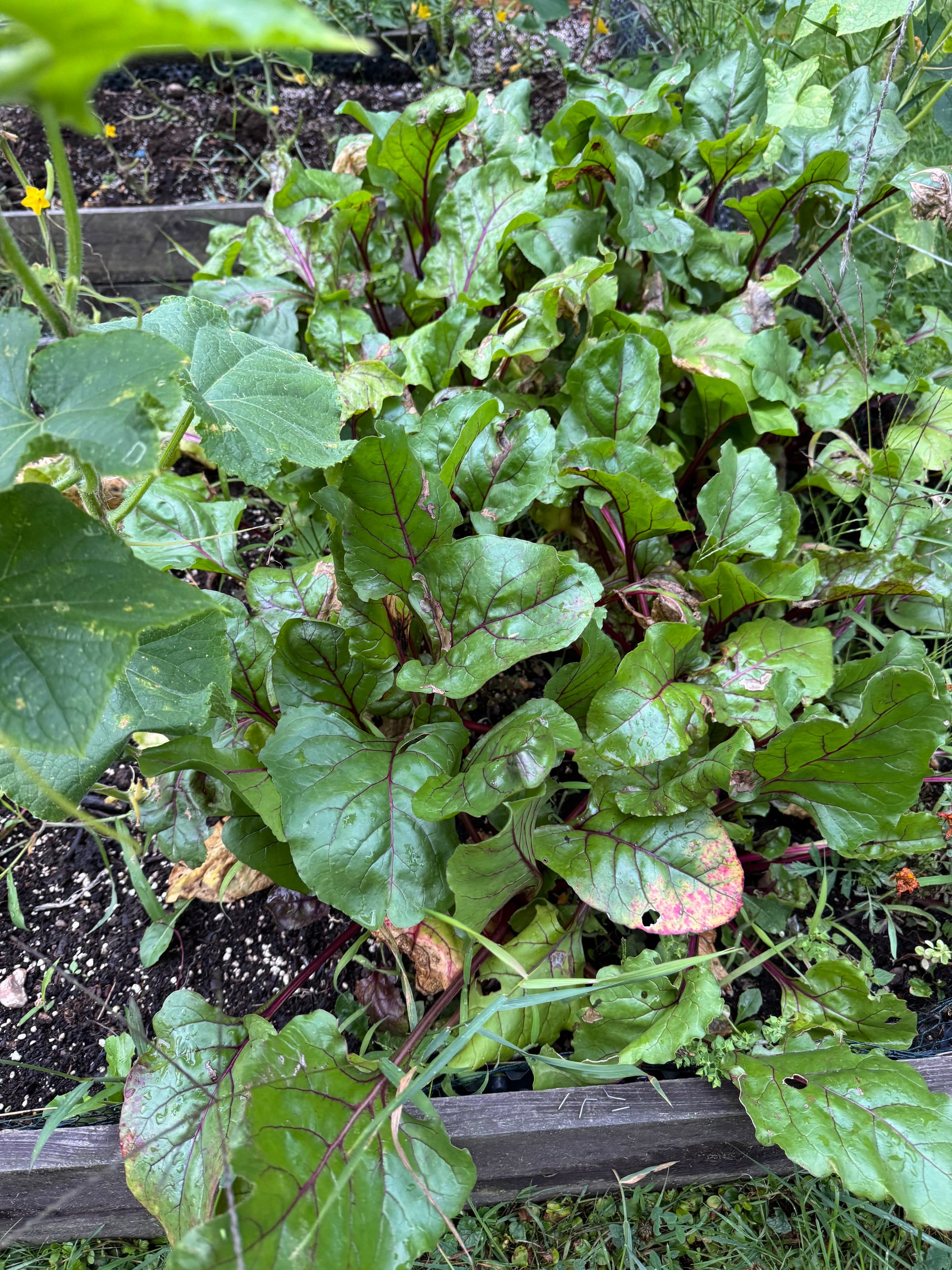
And here are the basket moneyshots. Yes, I intentionally arrange veggies when I pick them just for the photo. Judge me.
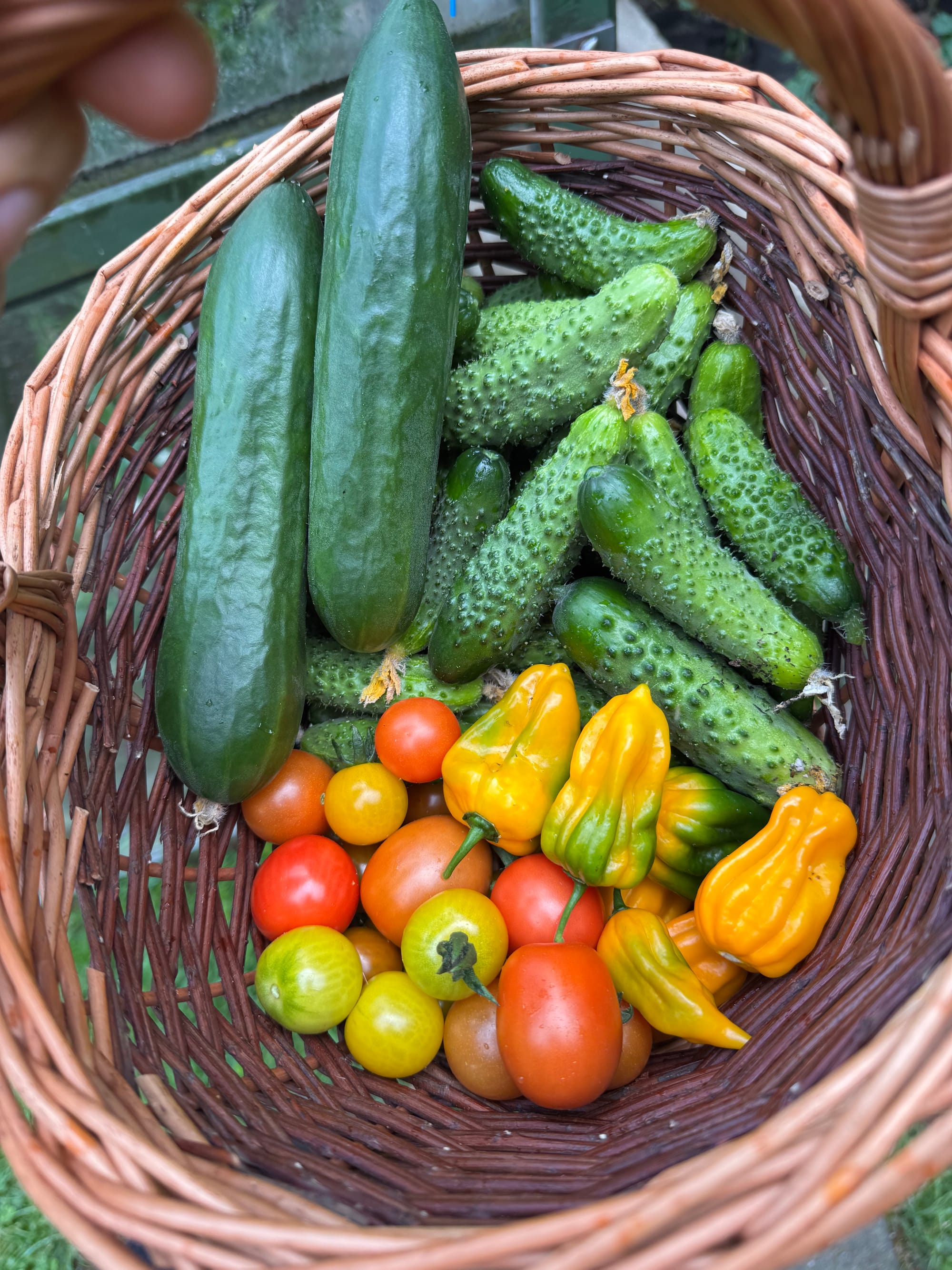
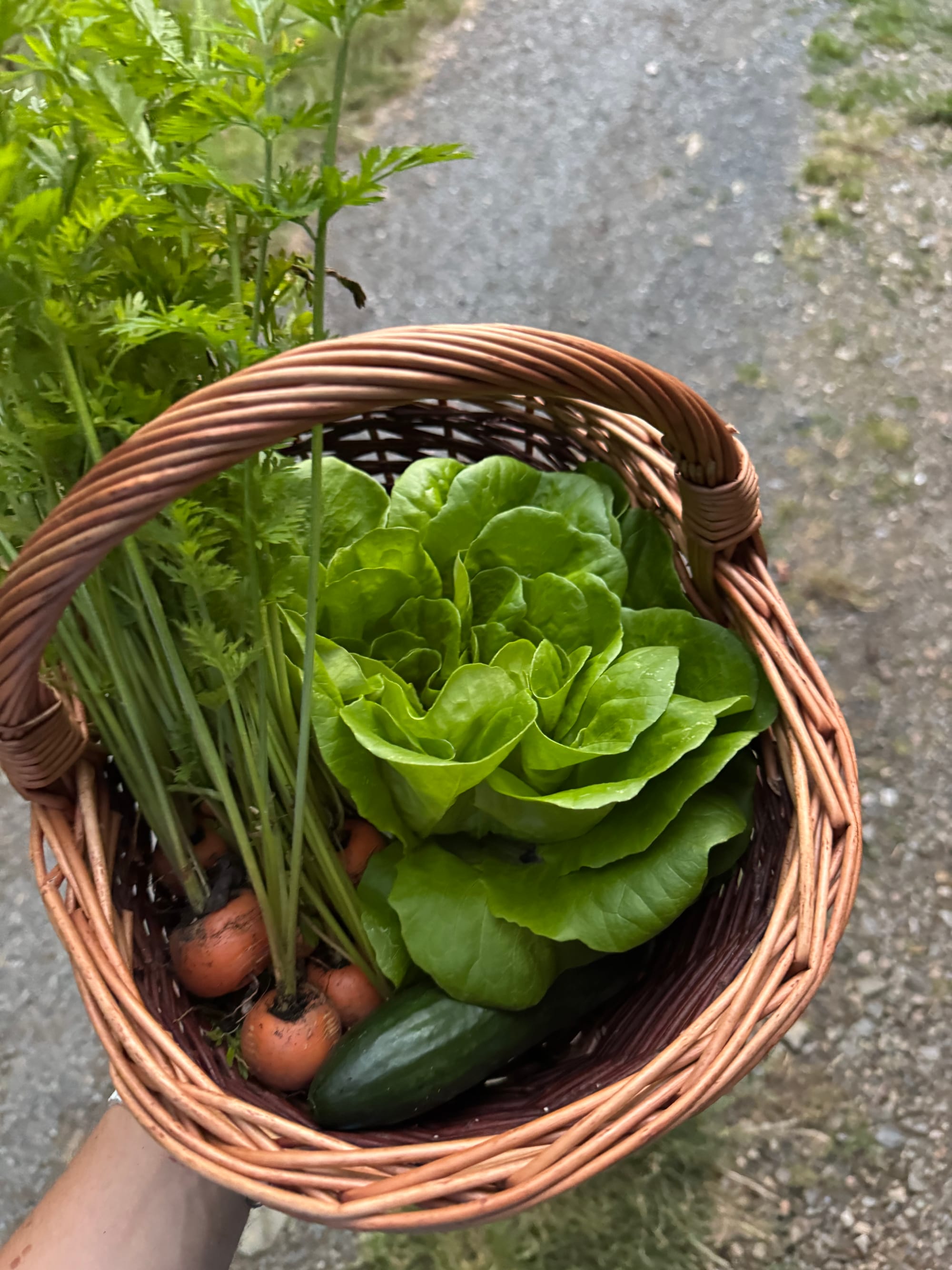
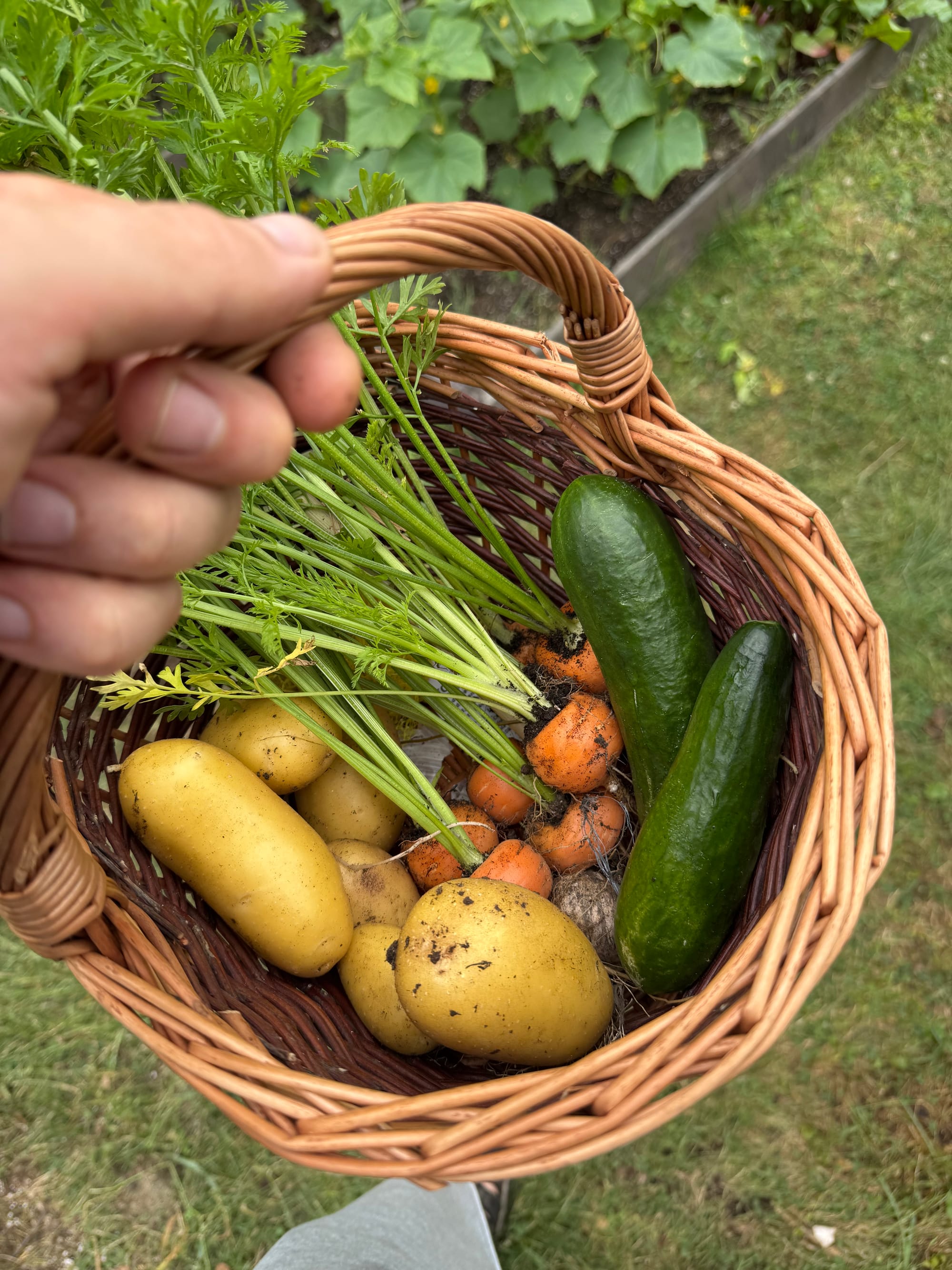
Looking back at July, it was a long month. It had 31 days, but because of the temperature swings and the amount of stuff I encountered or had to solve, it felt long. I don’t mind though. I hate long winter months, but I do miss June a little bit. As we slowly approach the end of the season, the amount of regular work in the garden is decreasing. It’s a great time to start fixing stuff. You might have noticed I fixed the gaping hole near my tomato place.
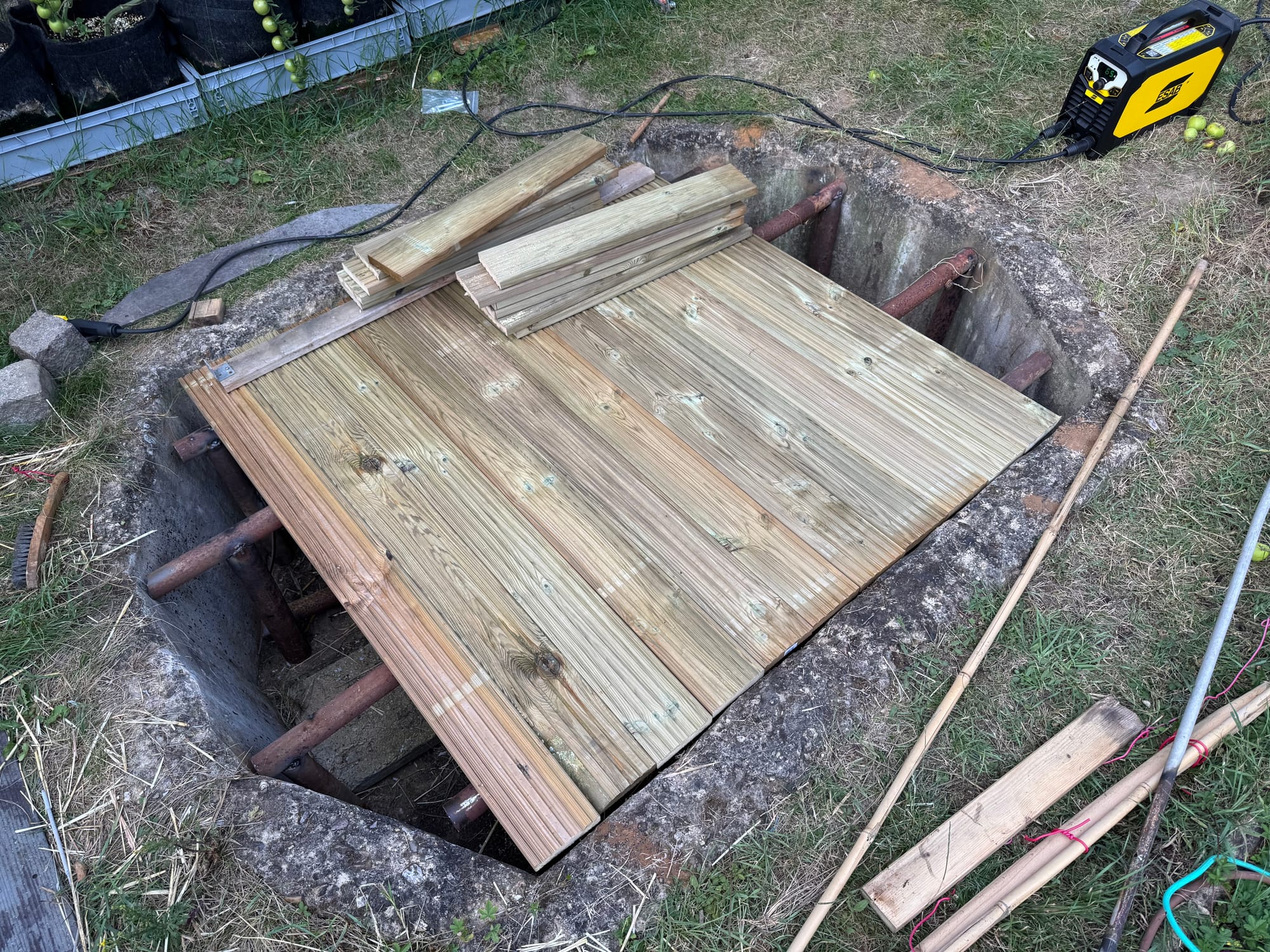
The old decking was made from untreated wood and WPC board. It flexed heavily, was janky and unstable, and the wood almost decomposed after five years. I replaced it with solid metal scaffolding and proper decking wood, with the option to access the hole if I want to use it, for example, as a water reservoir.
So mistakes were made, lessons learned, and a bunch of new insecurities unlocked. What a great month.



Member discussion